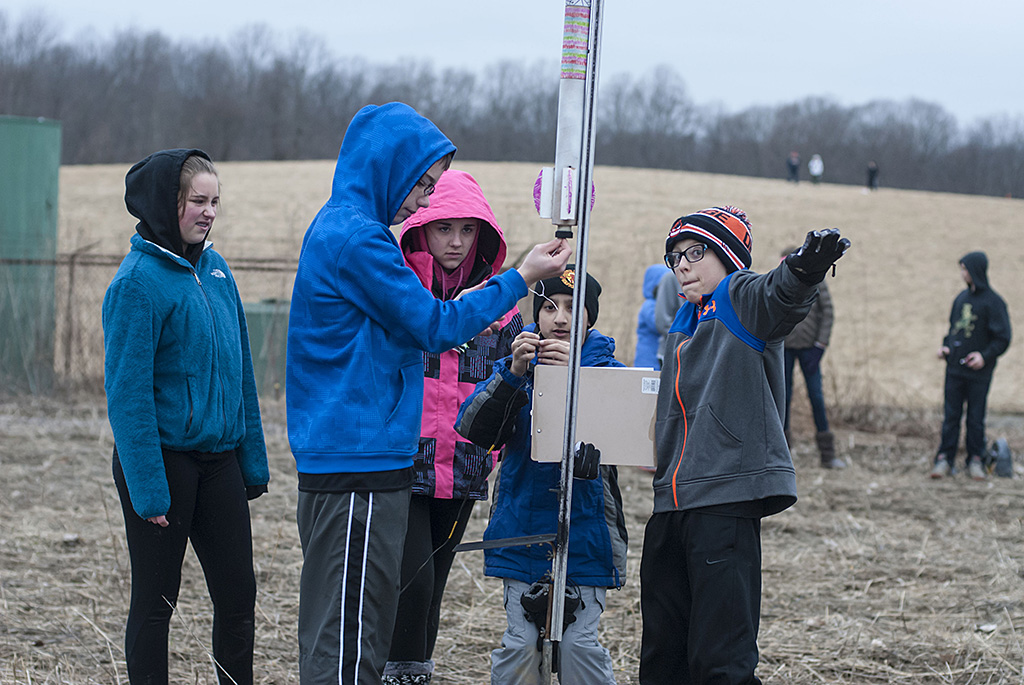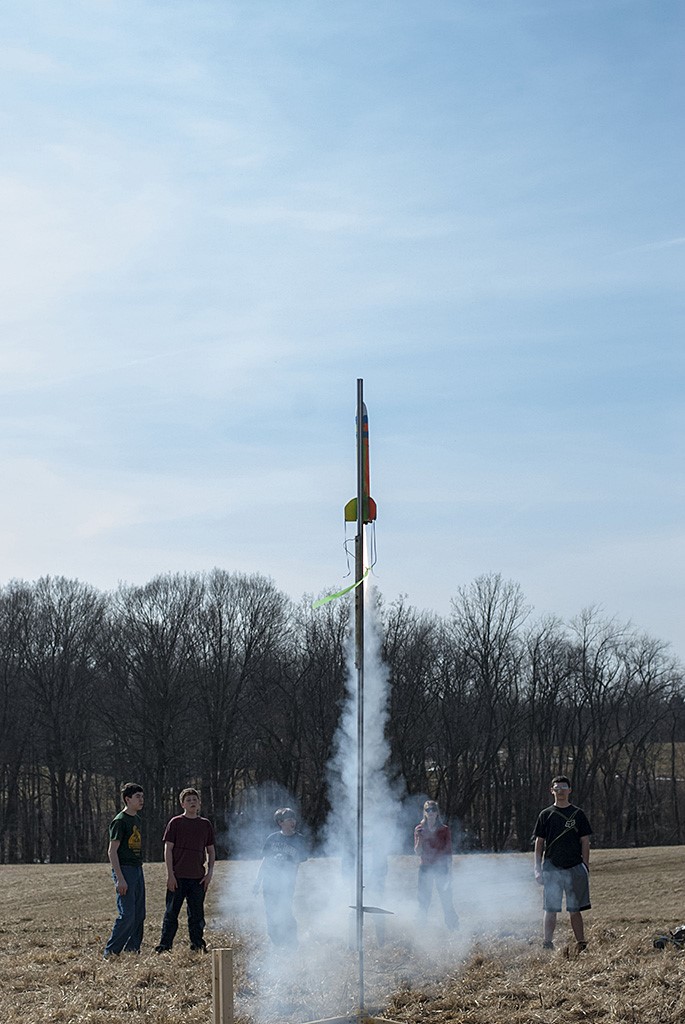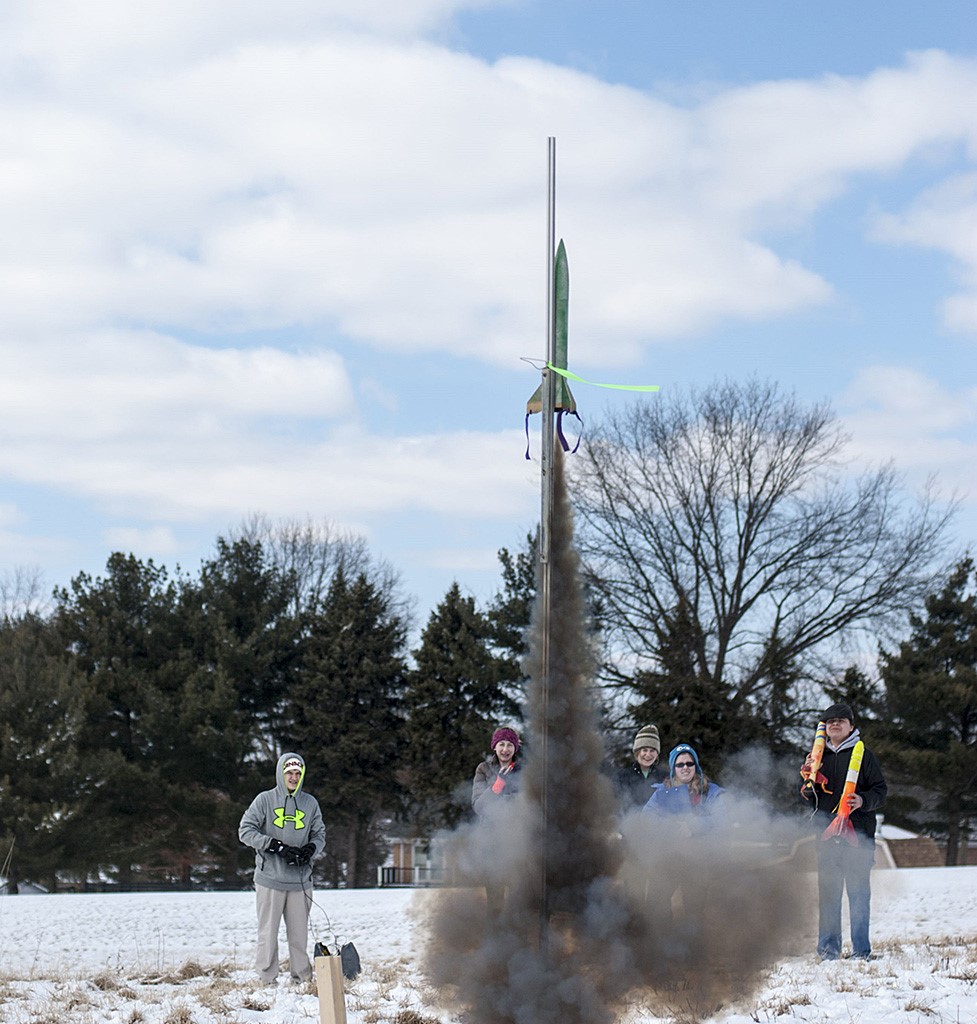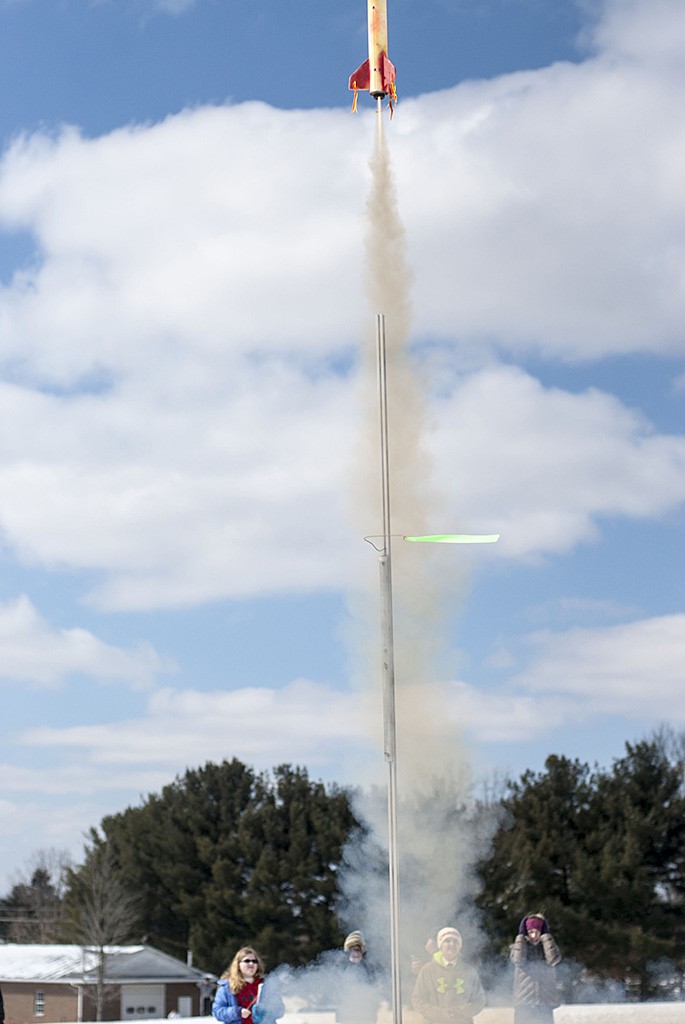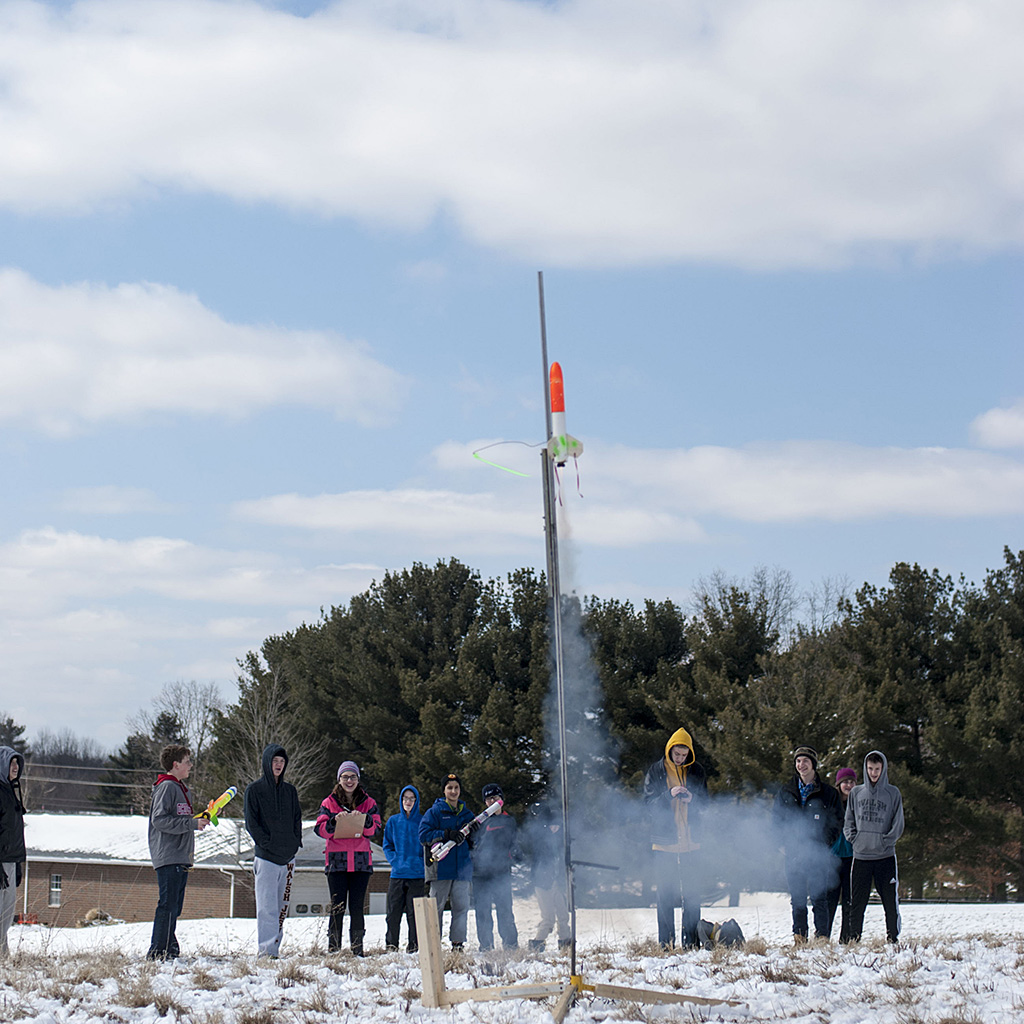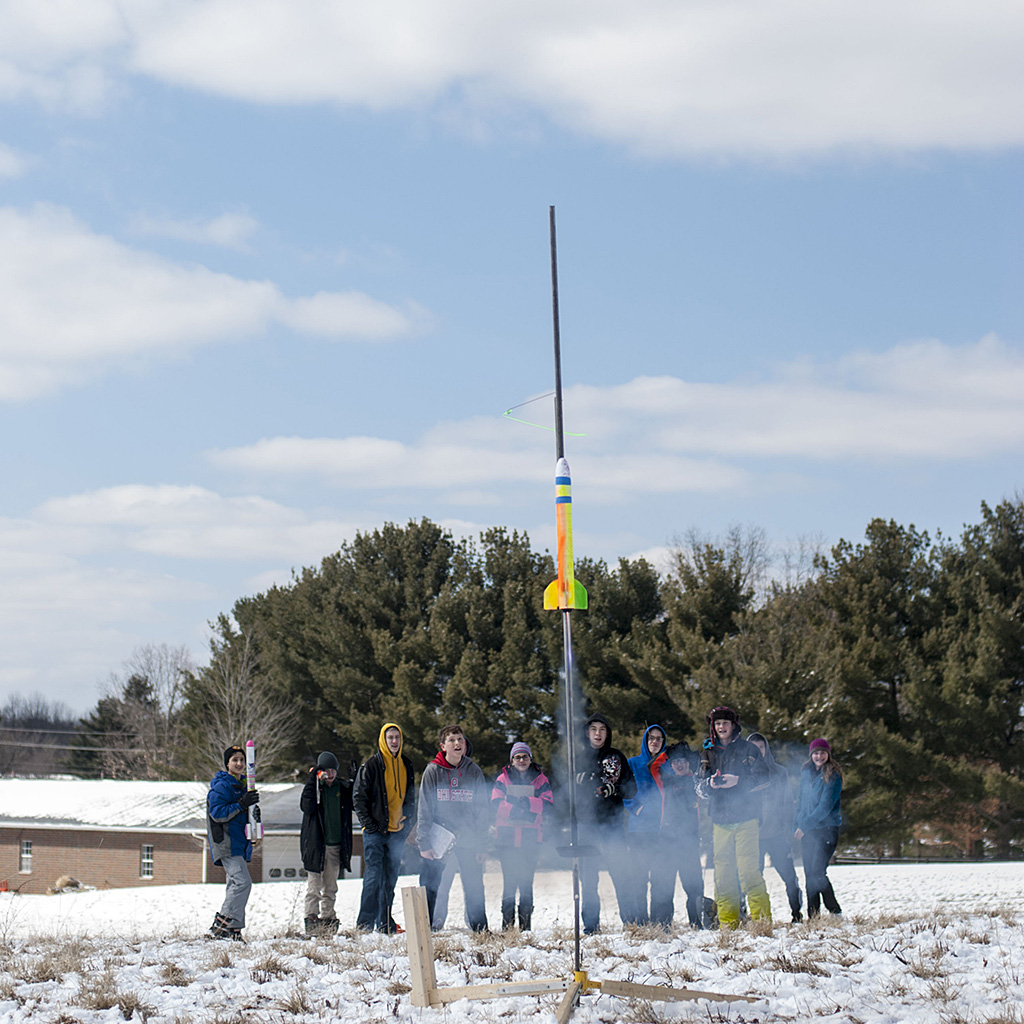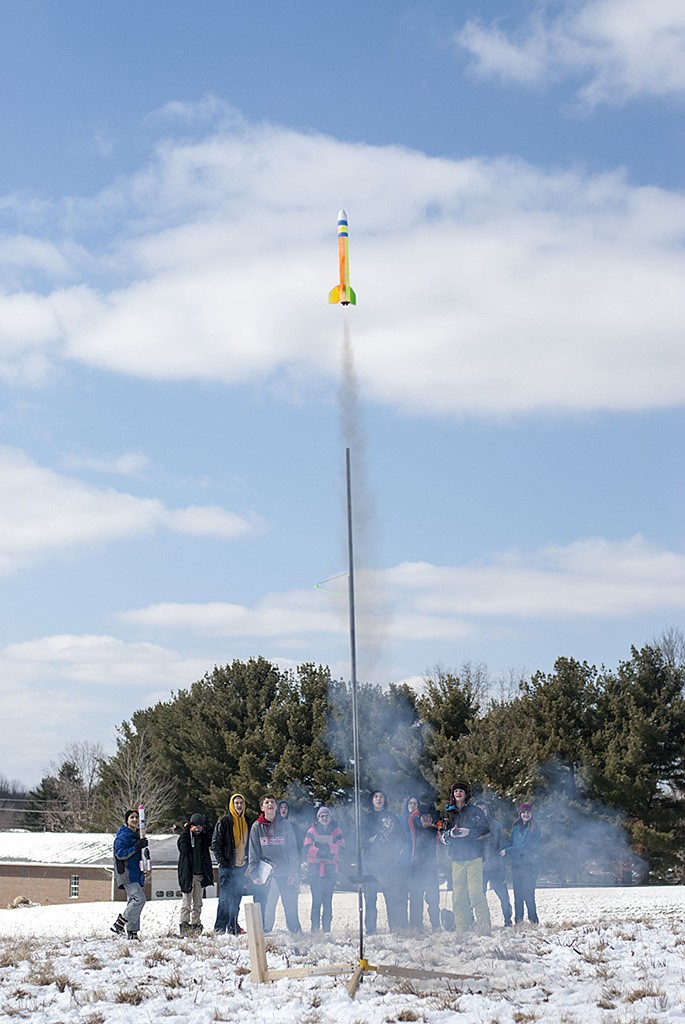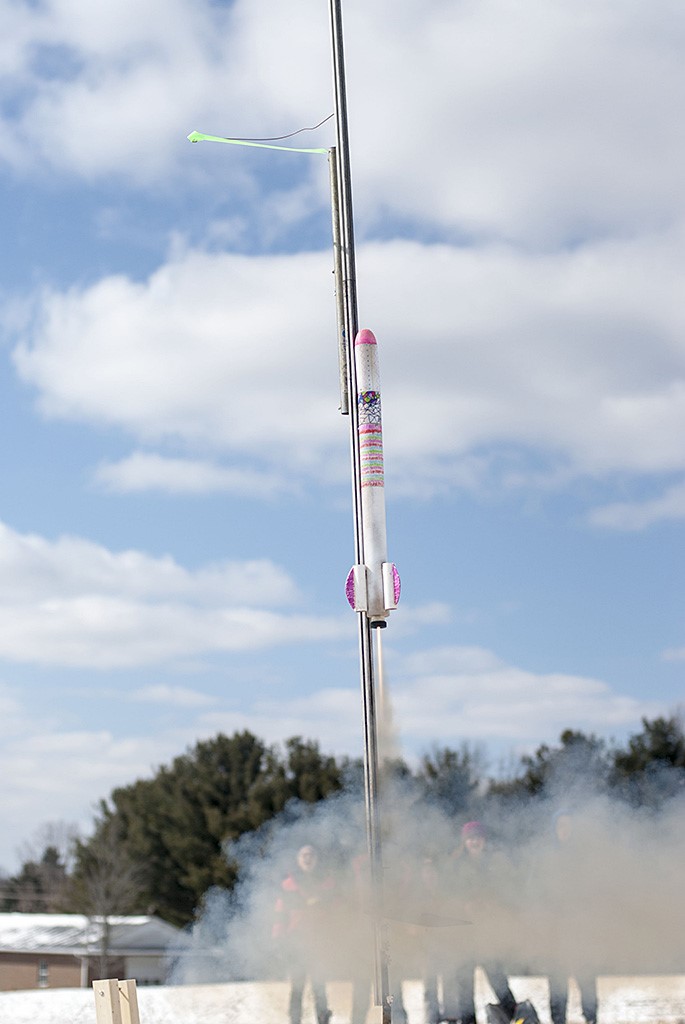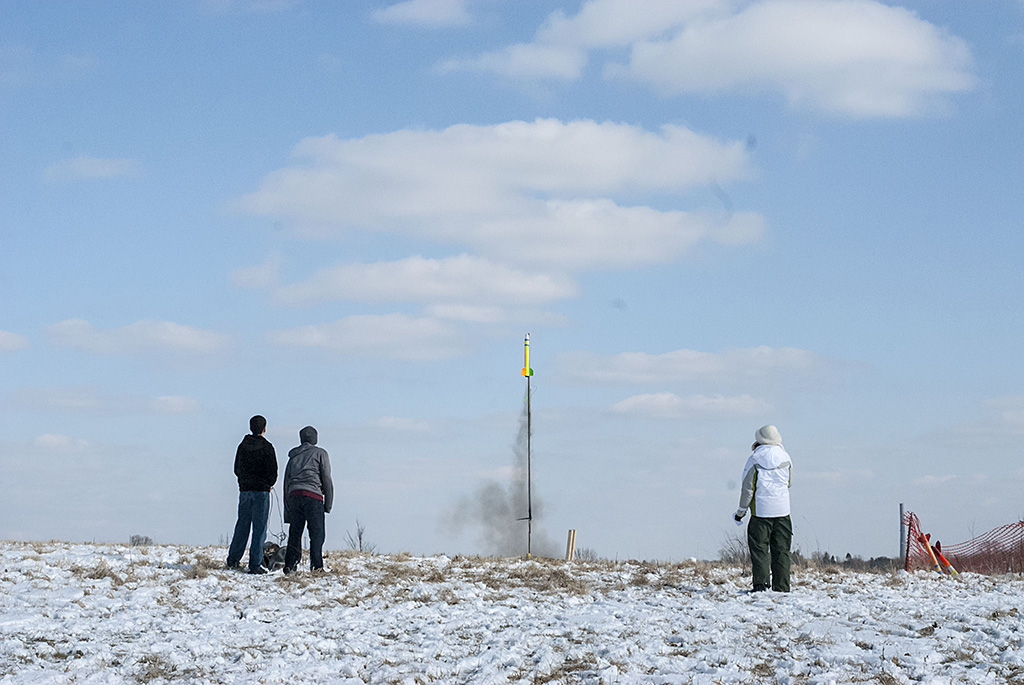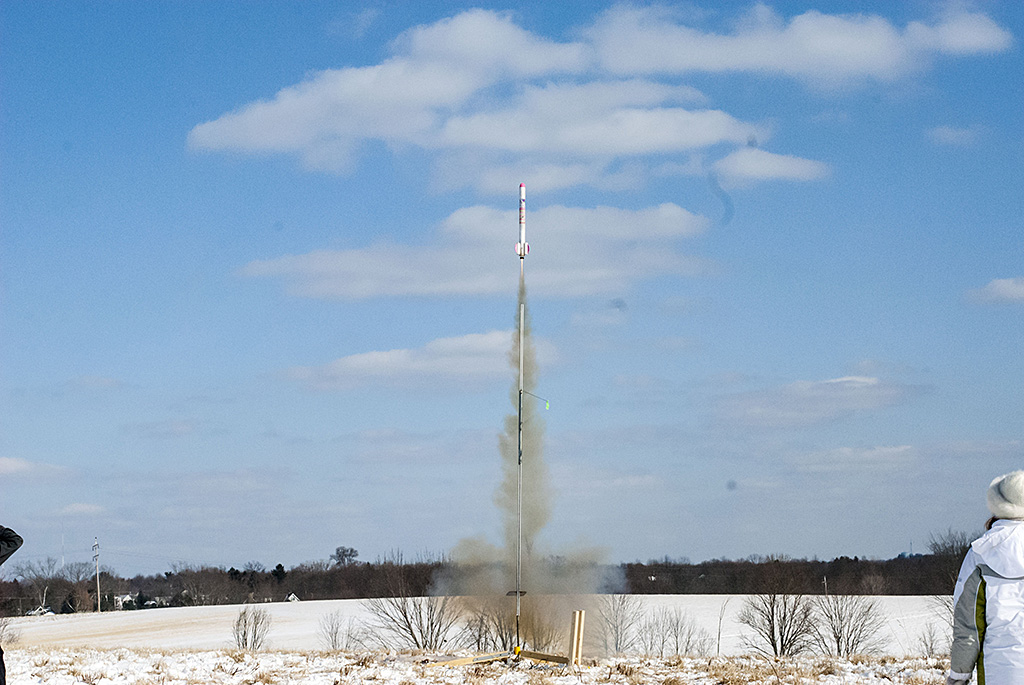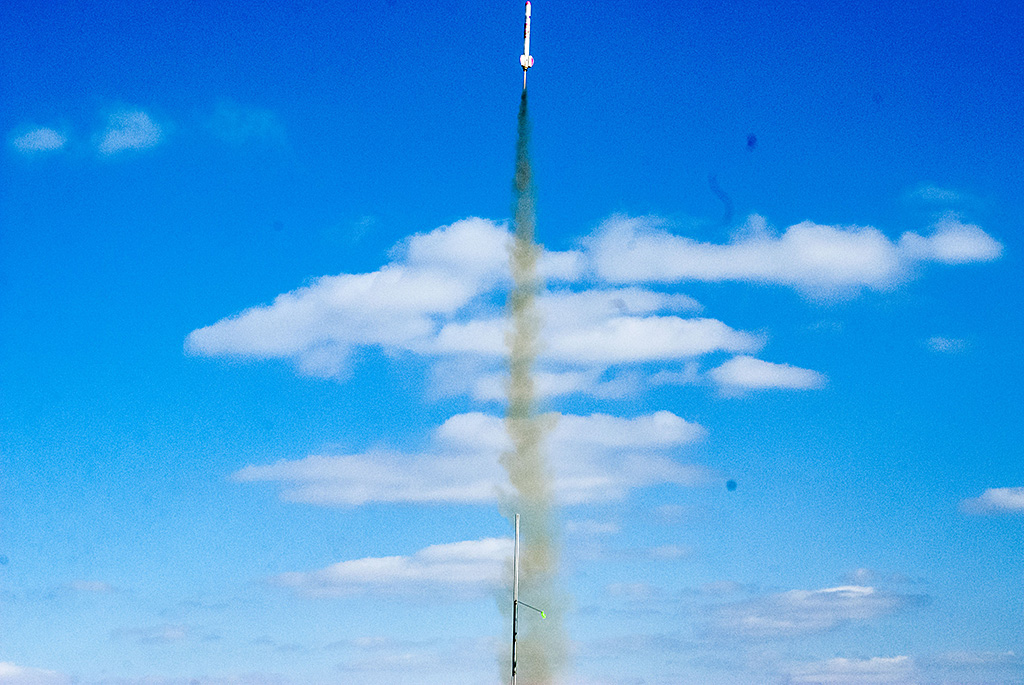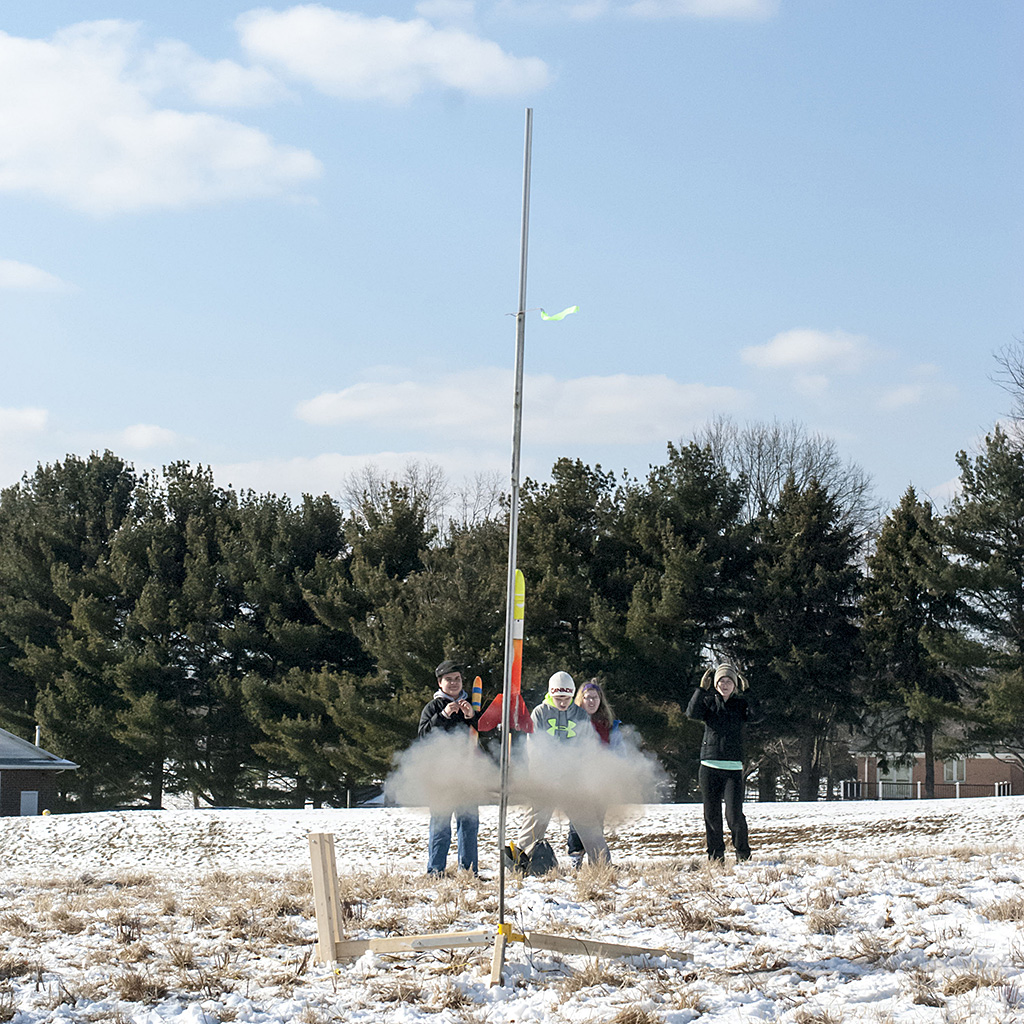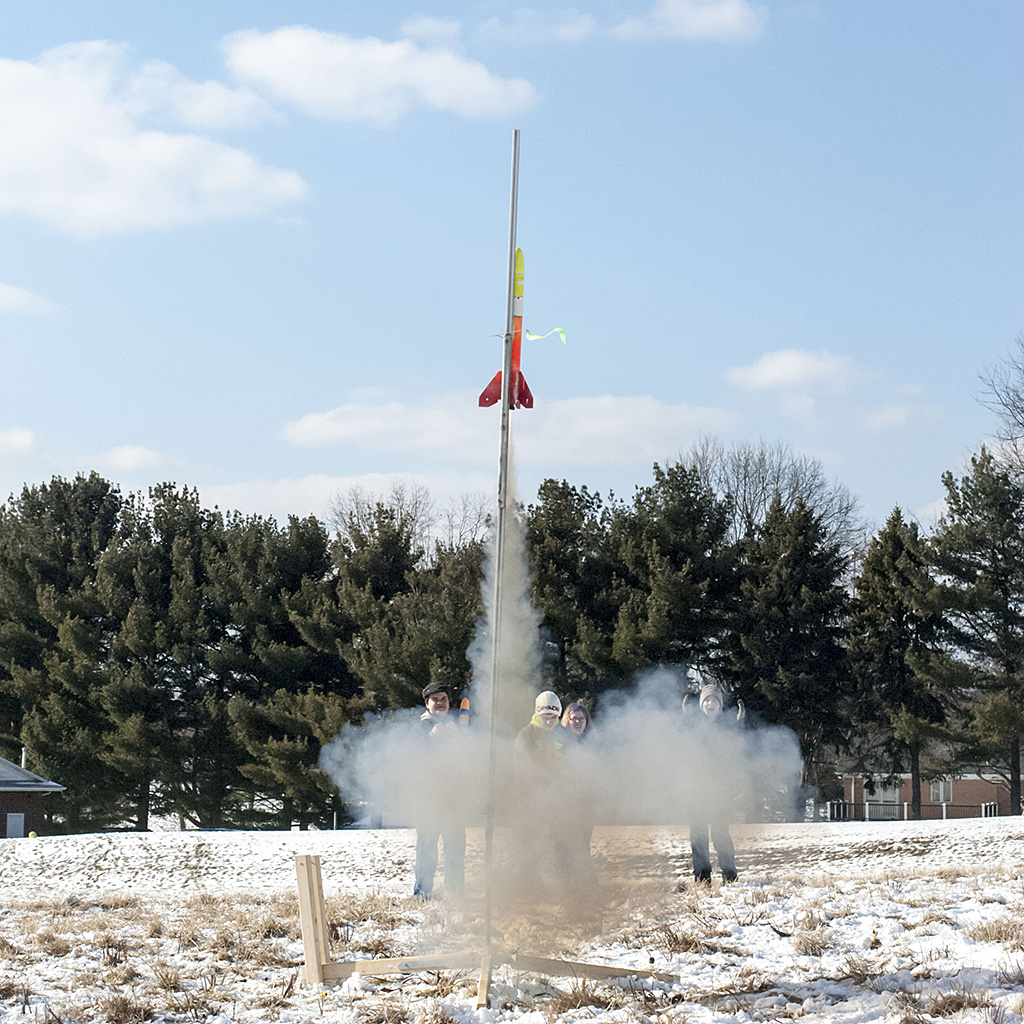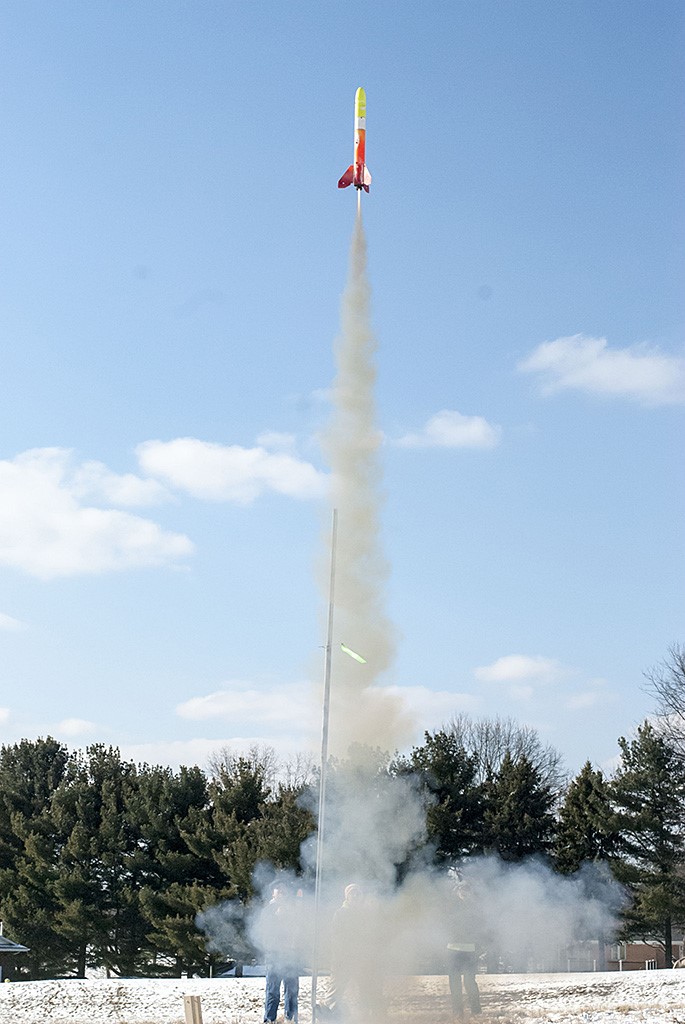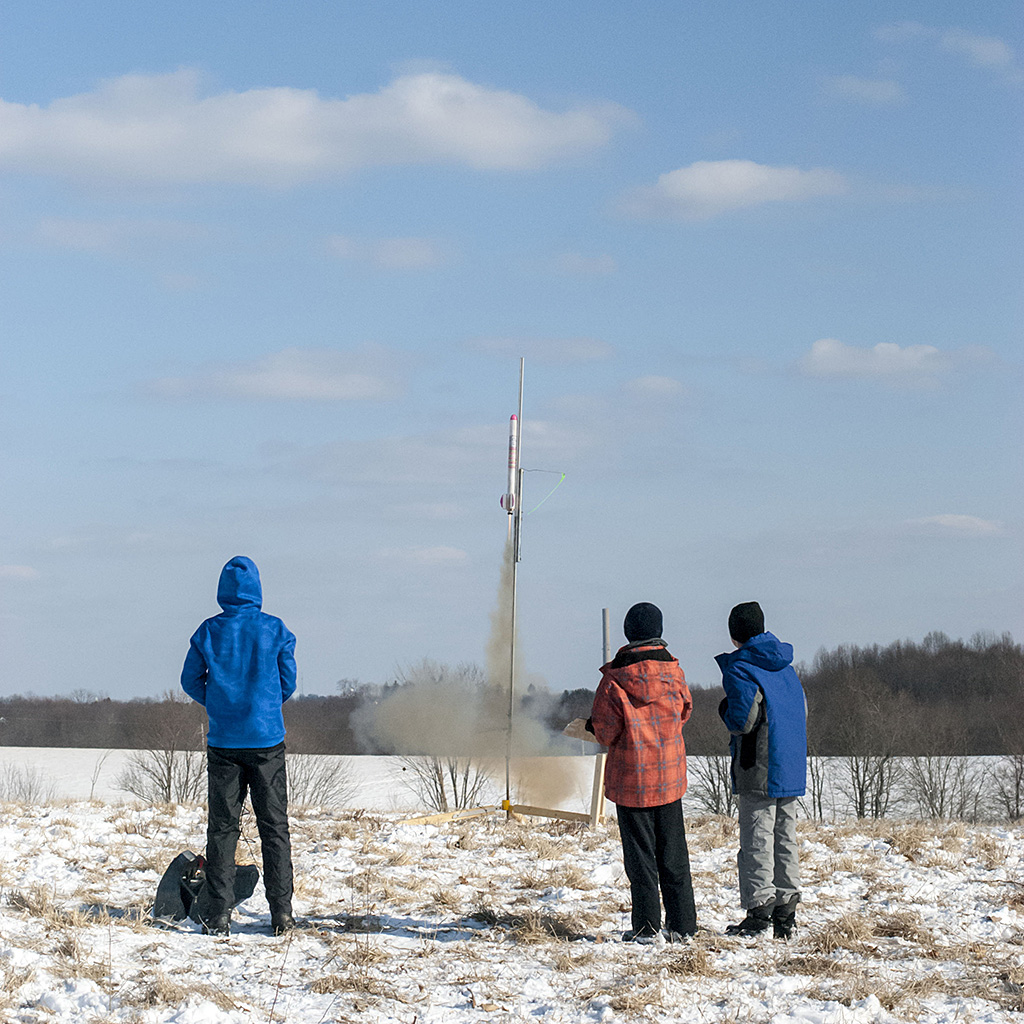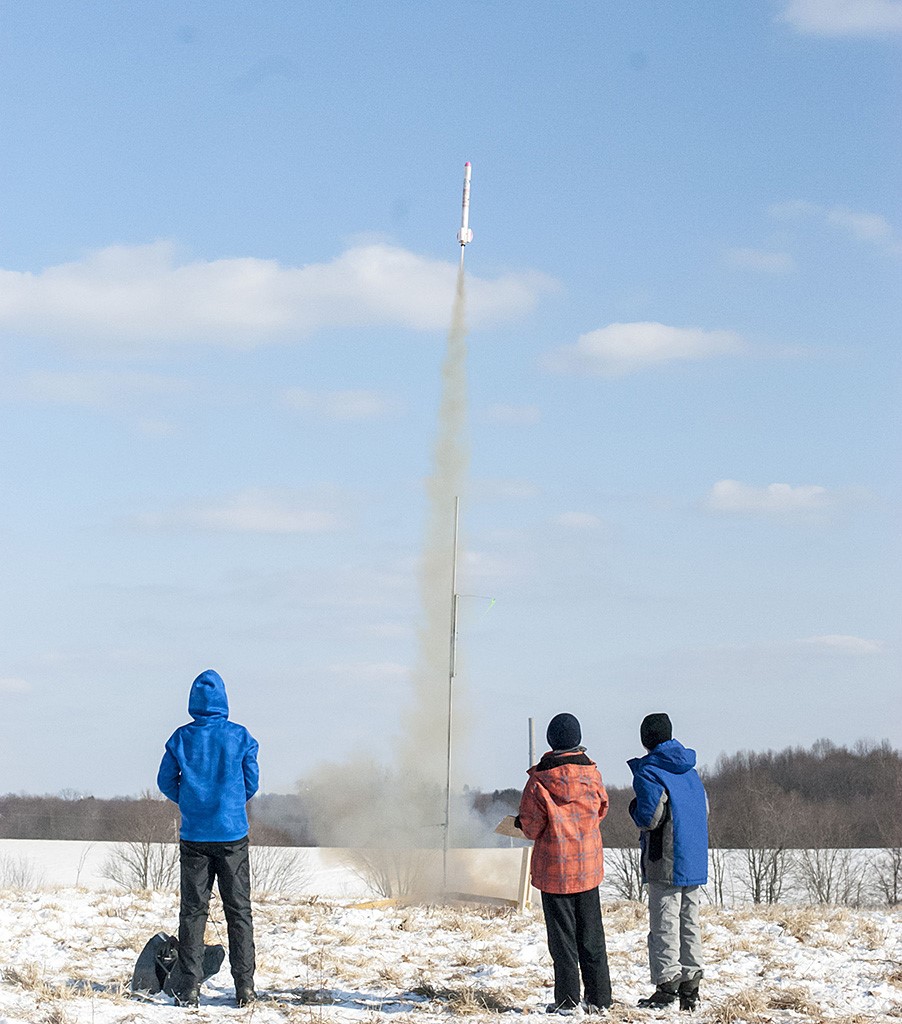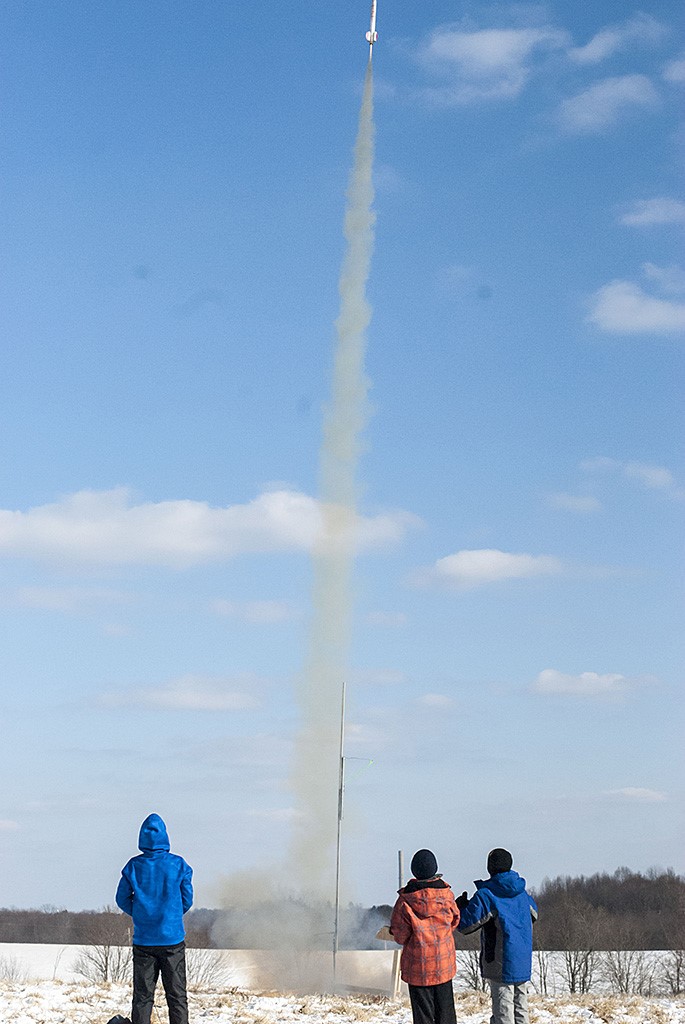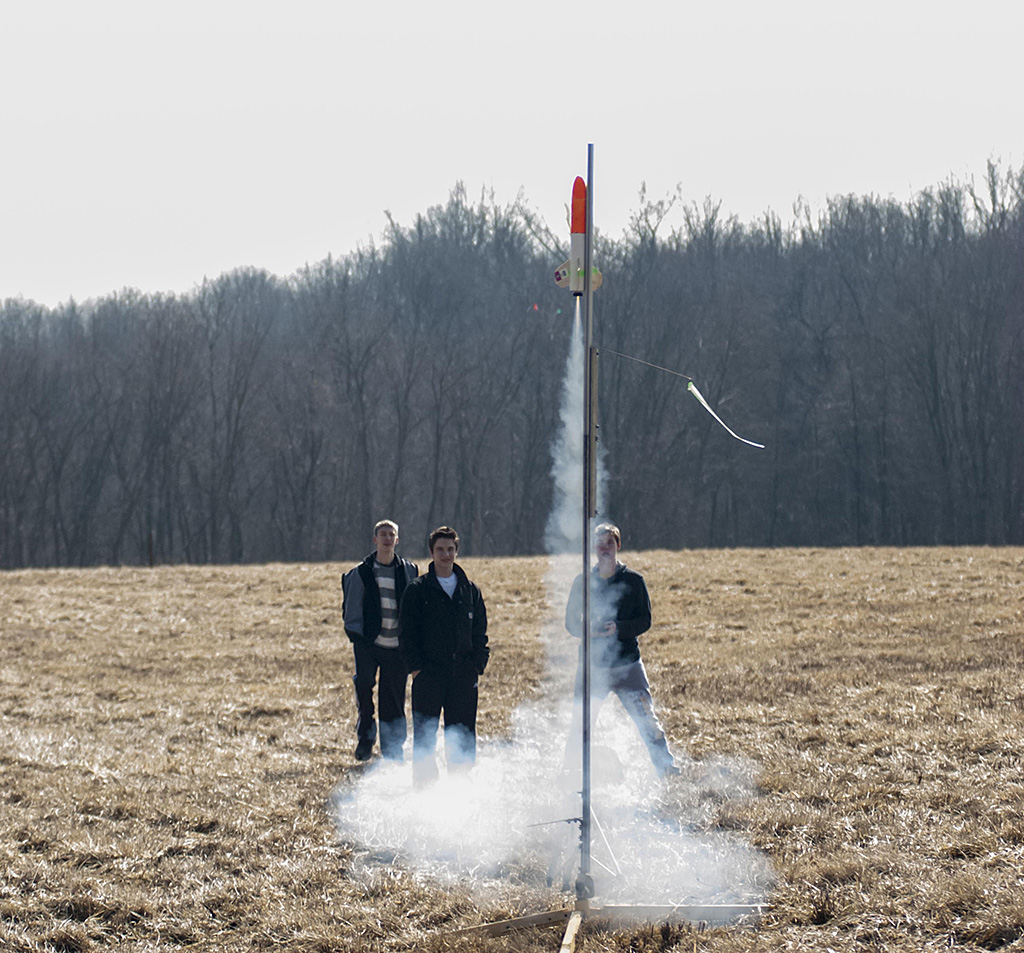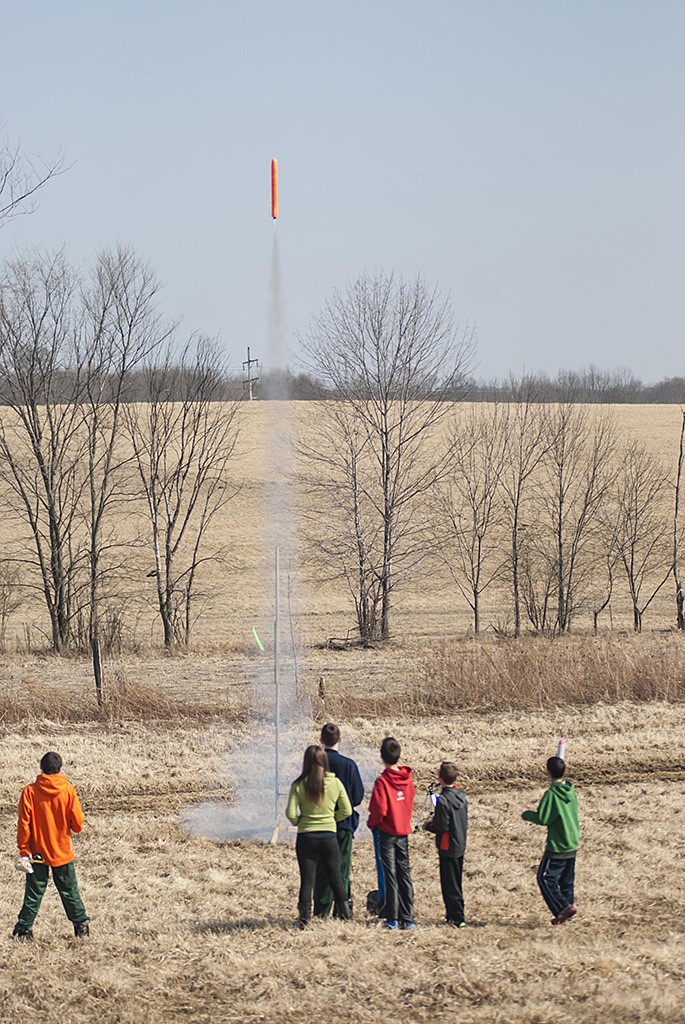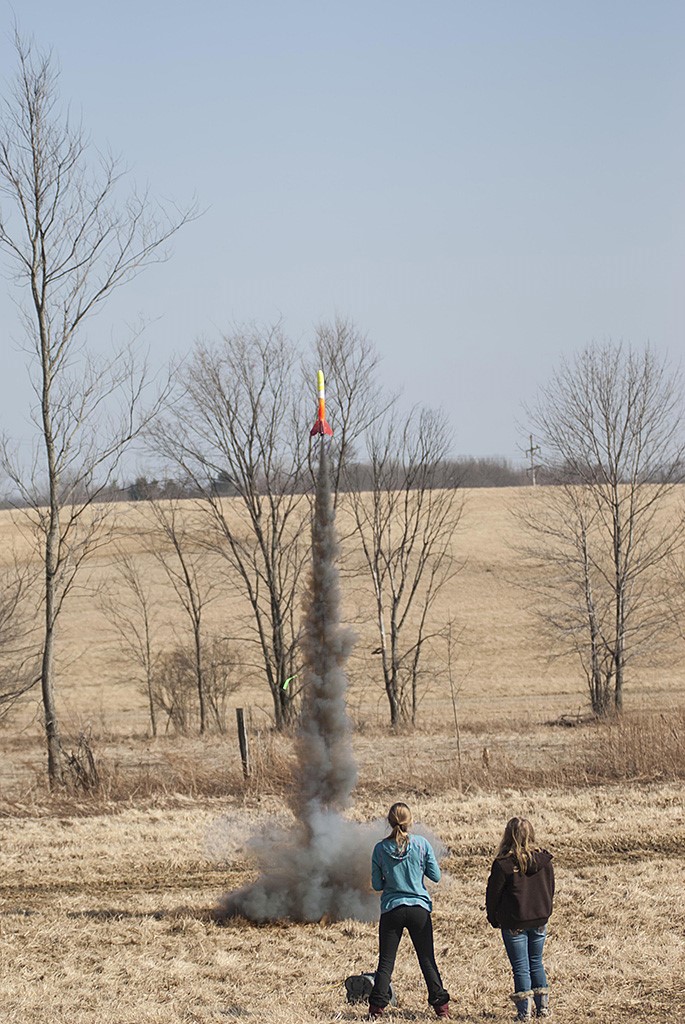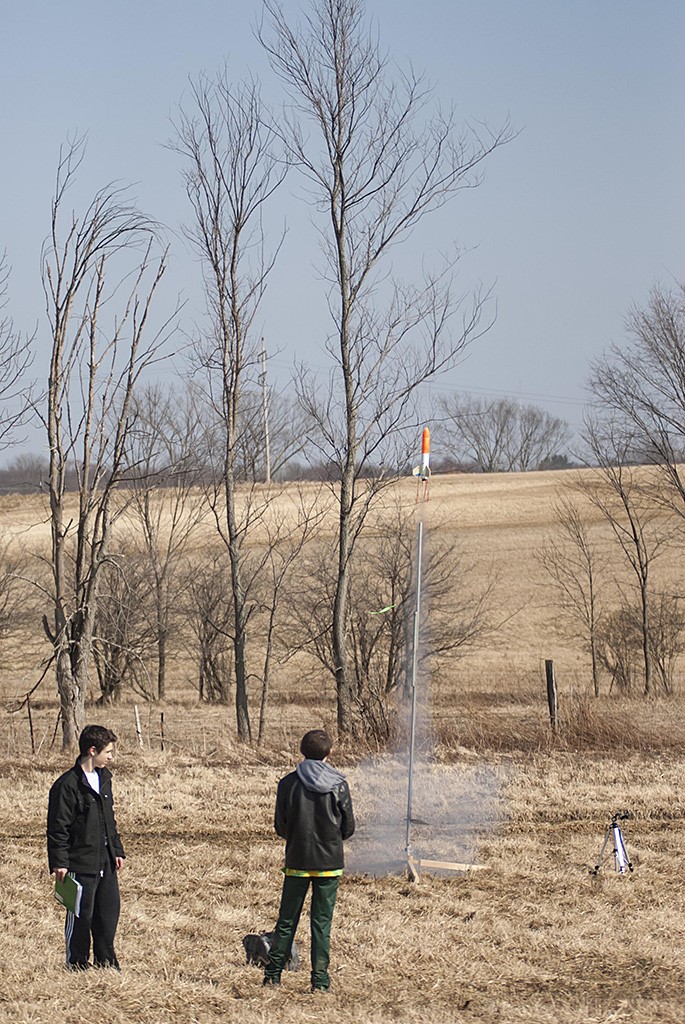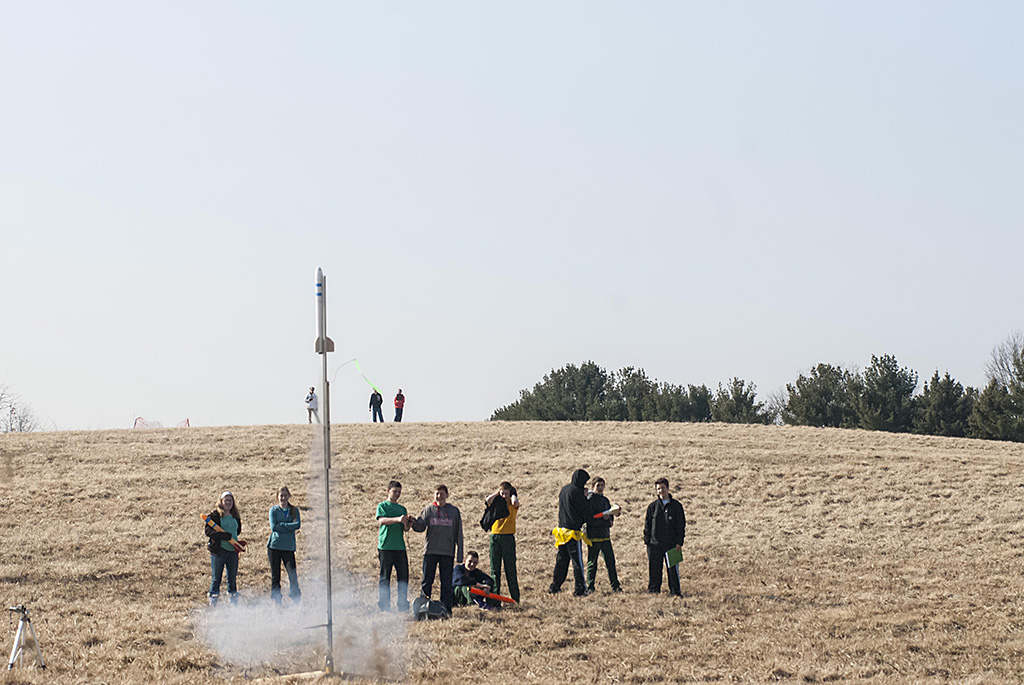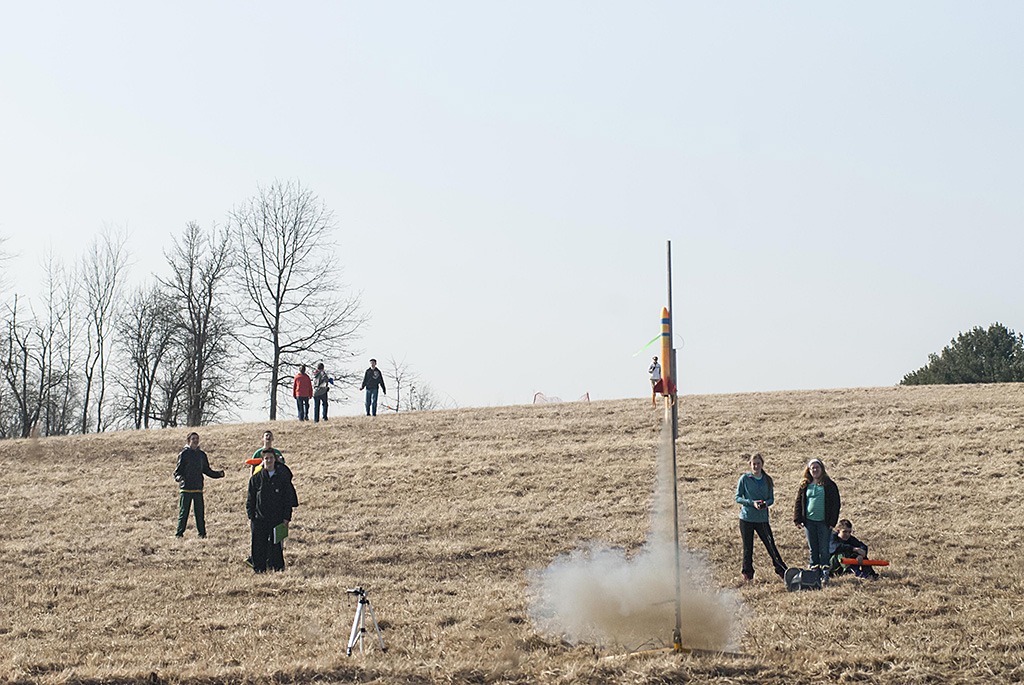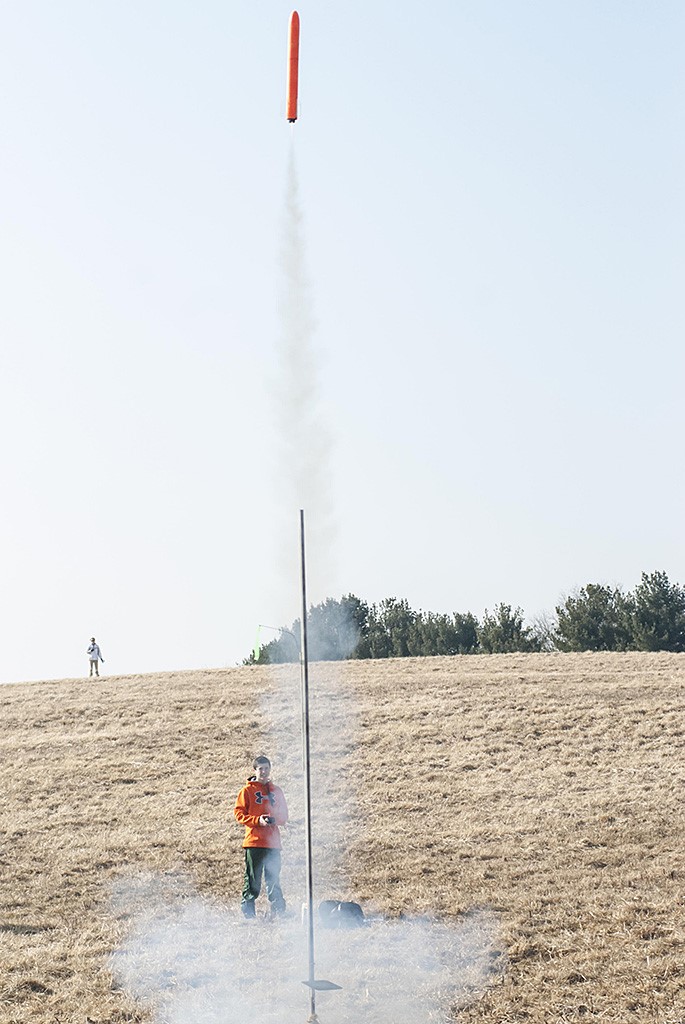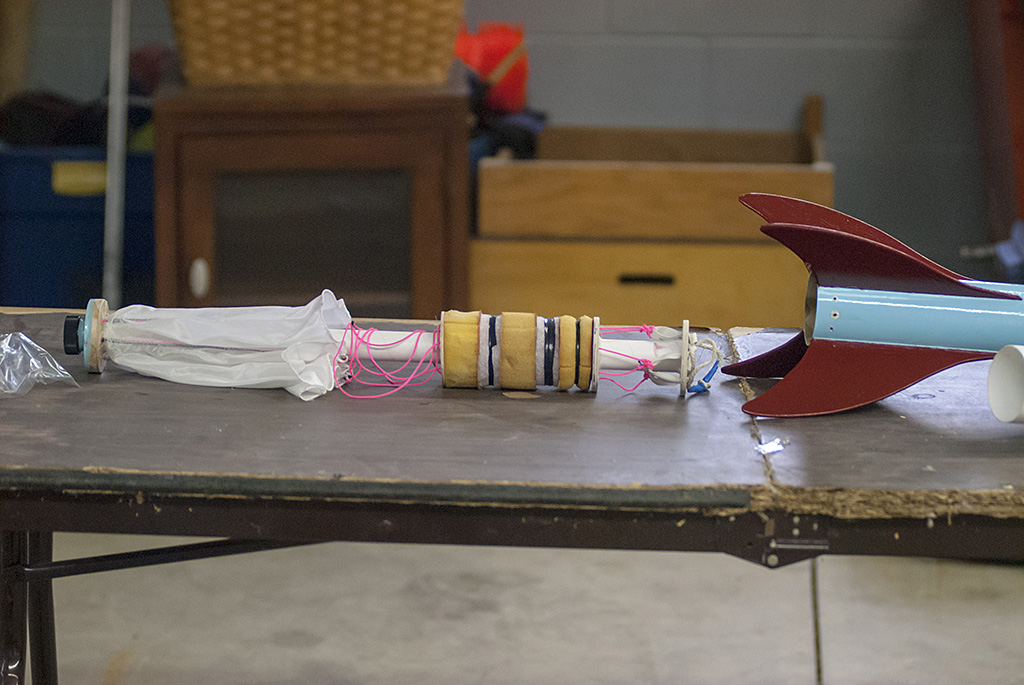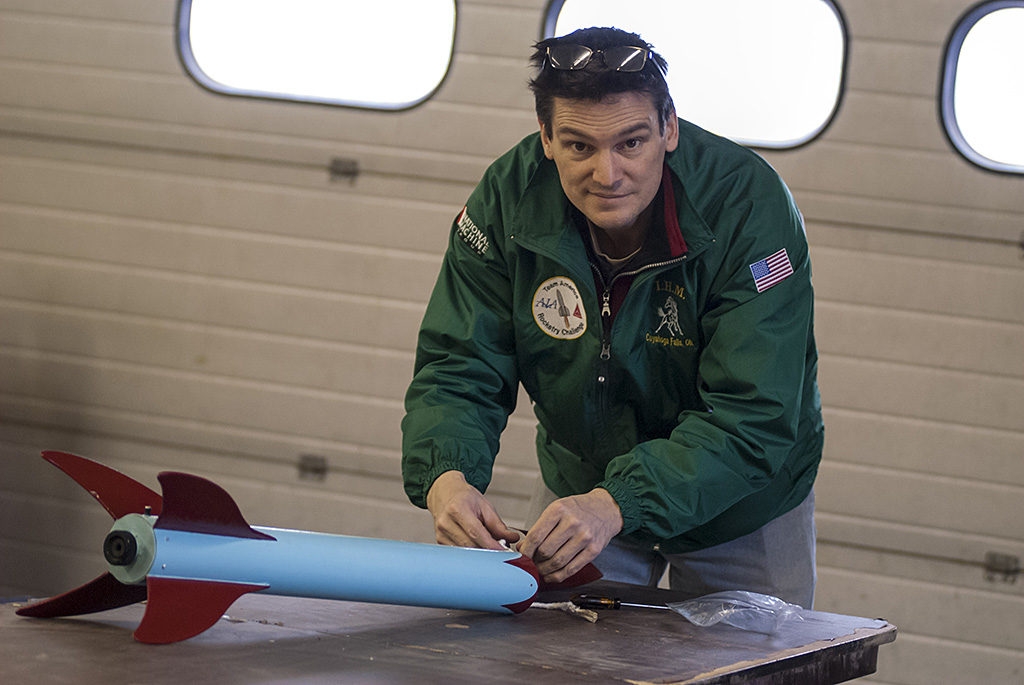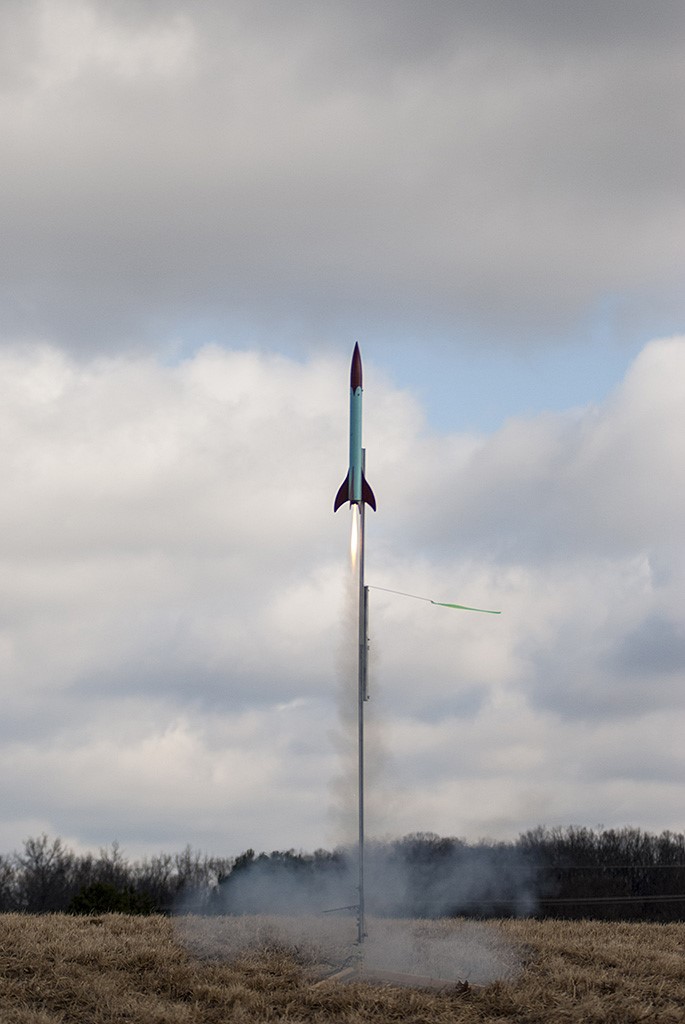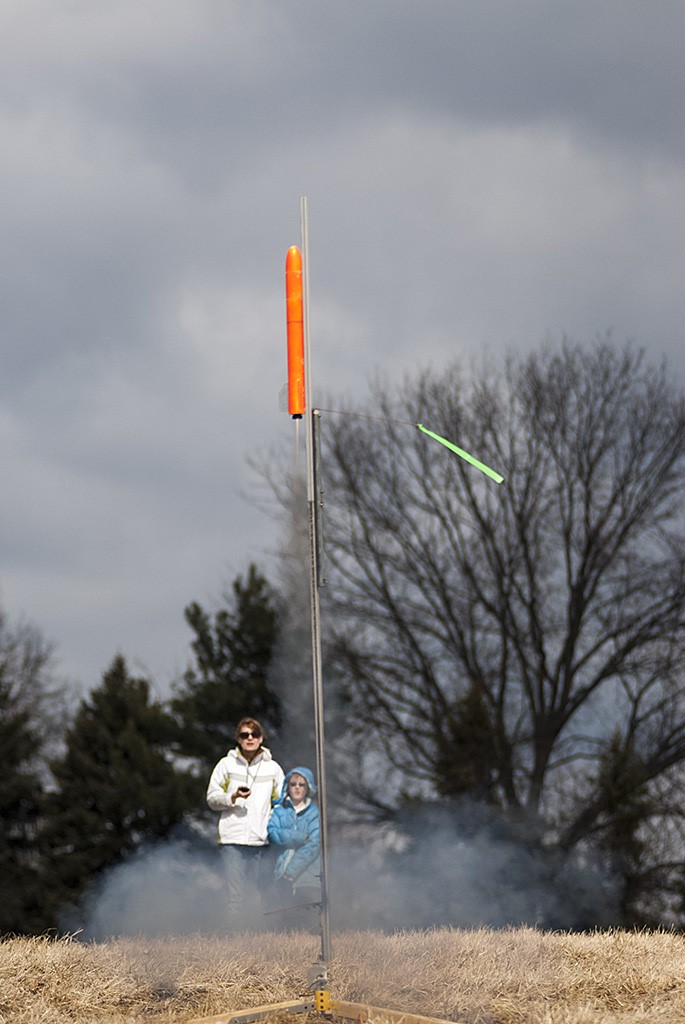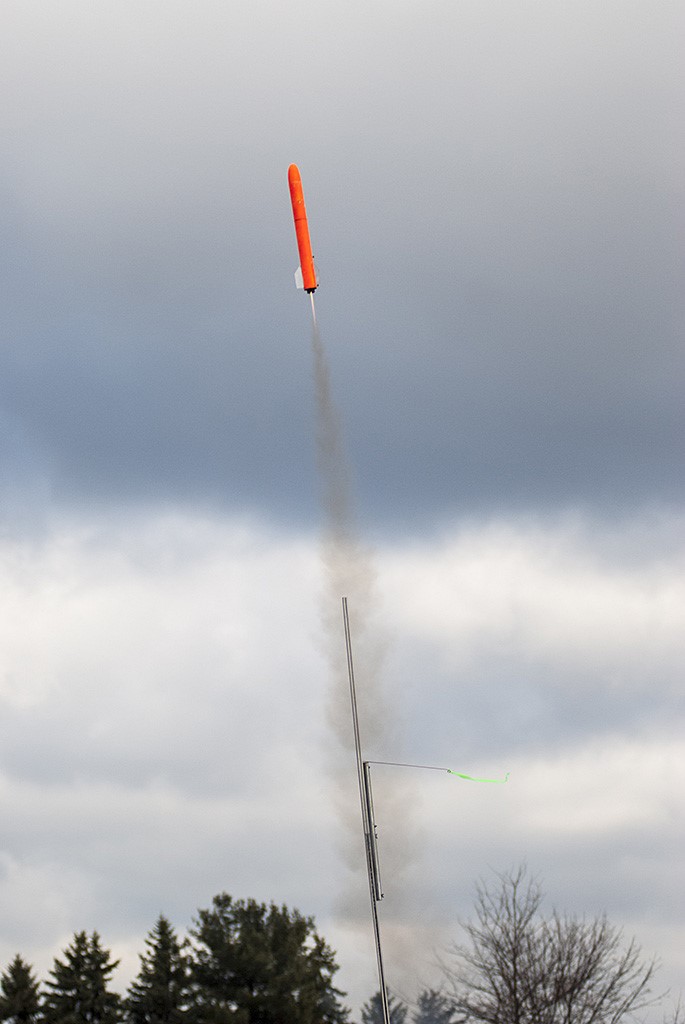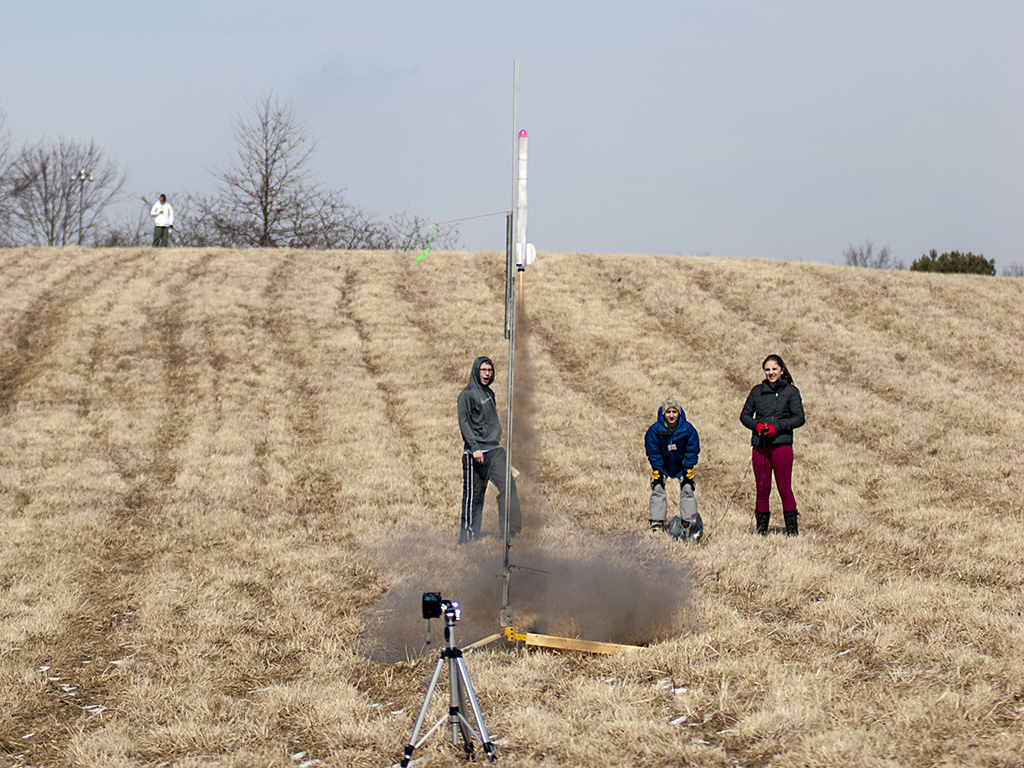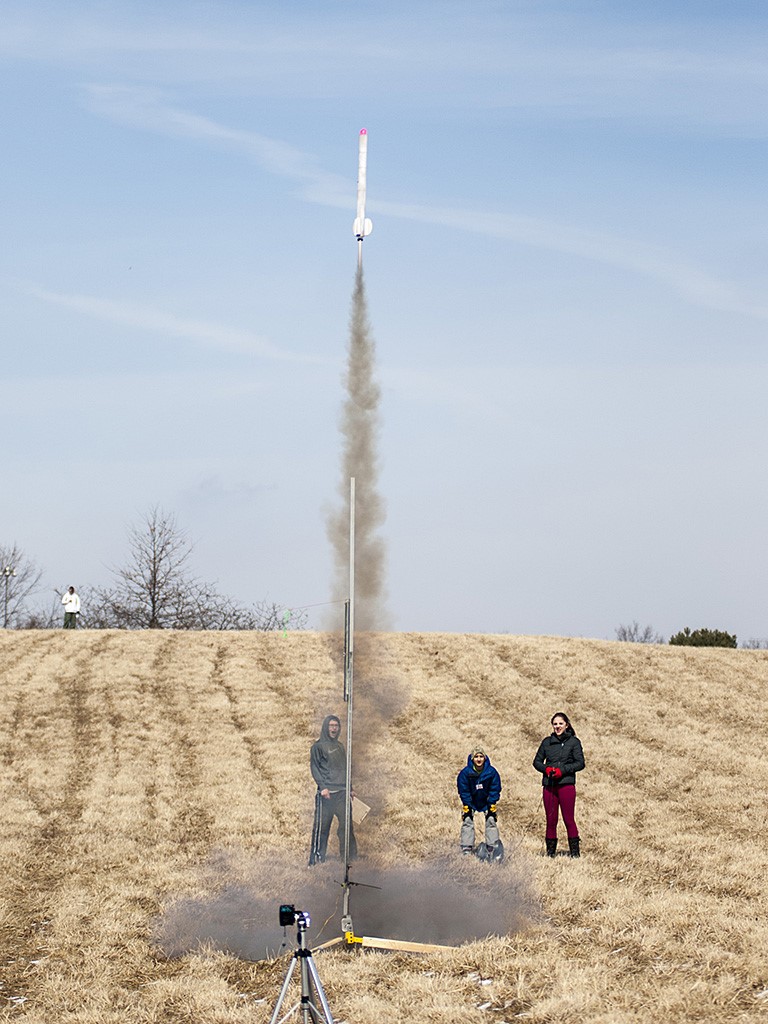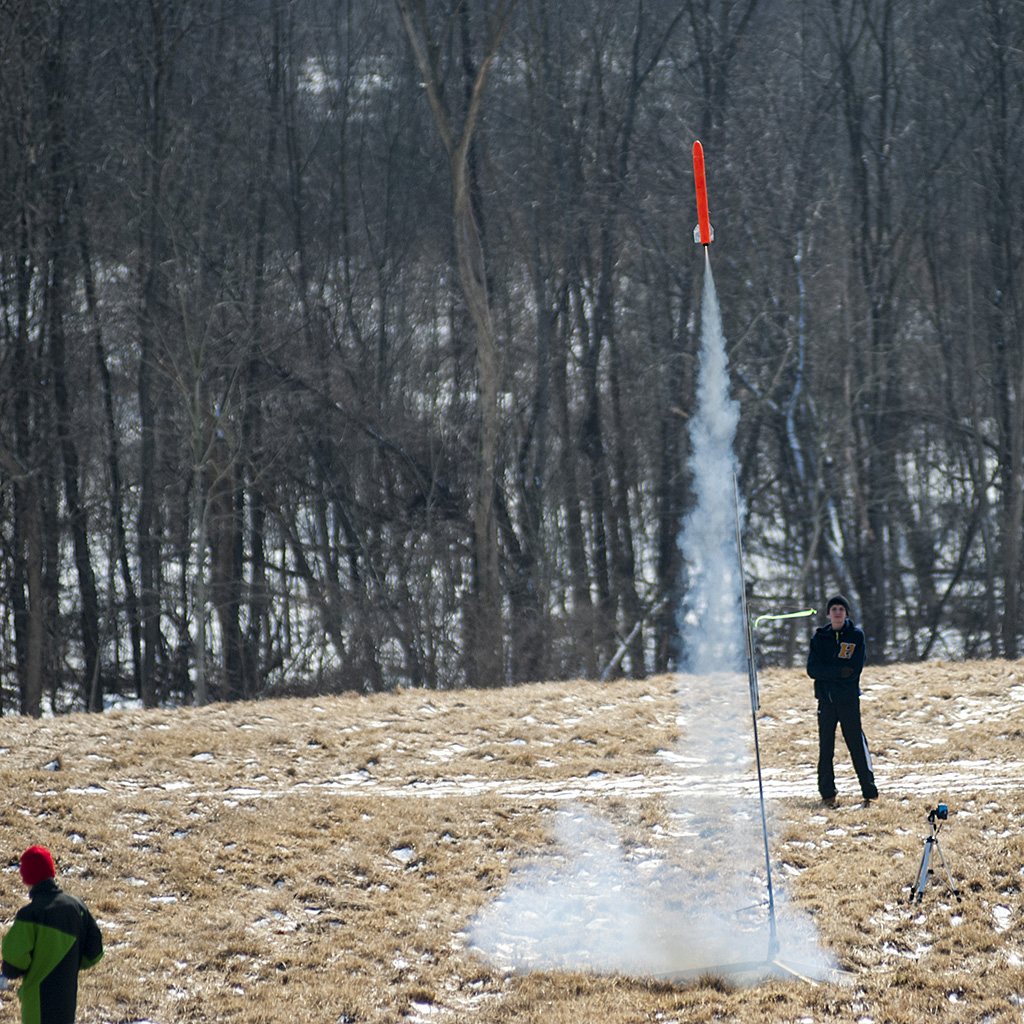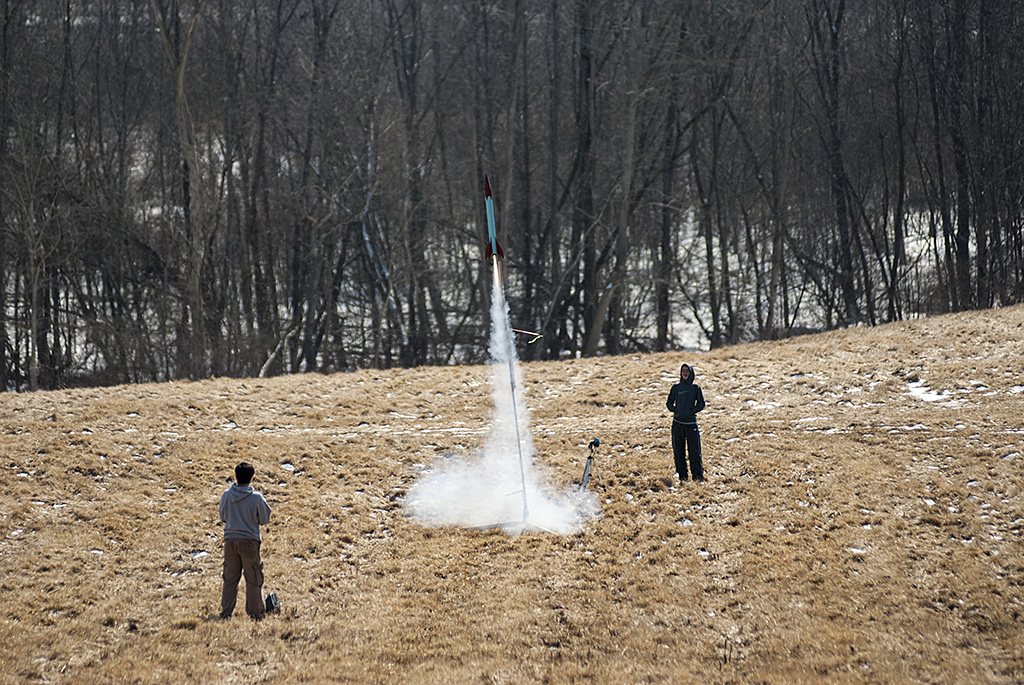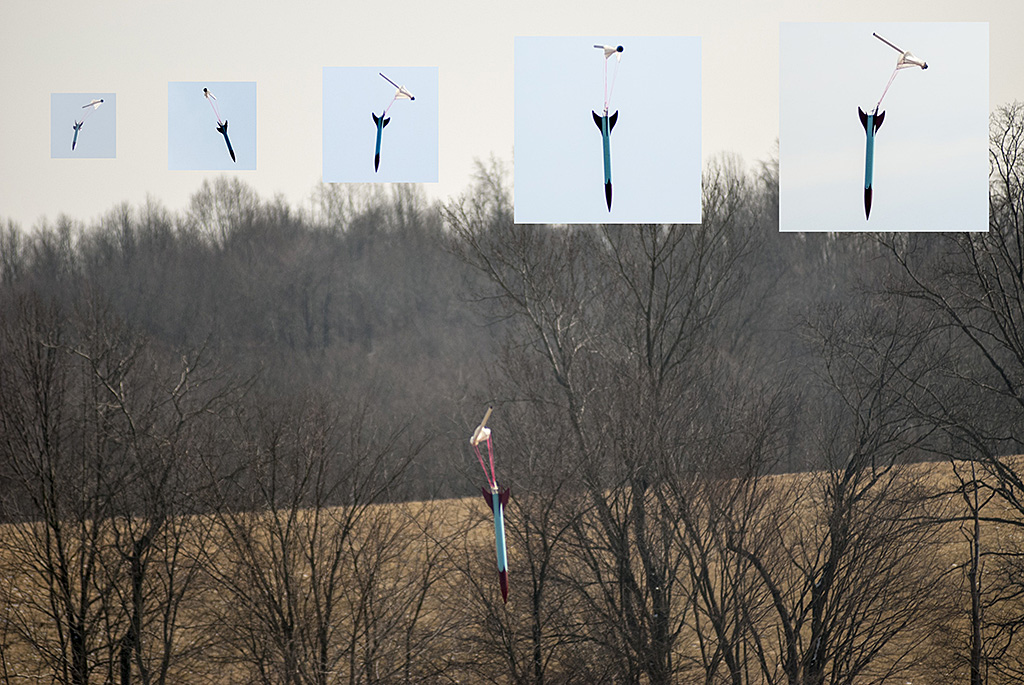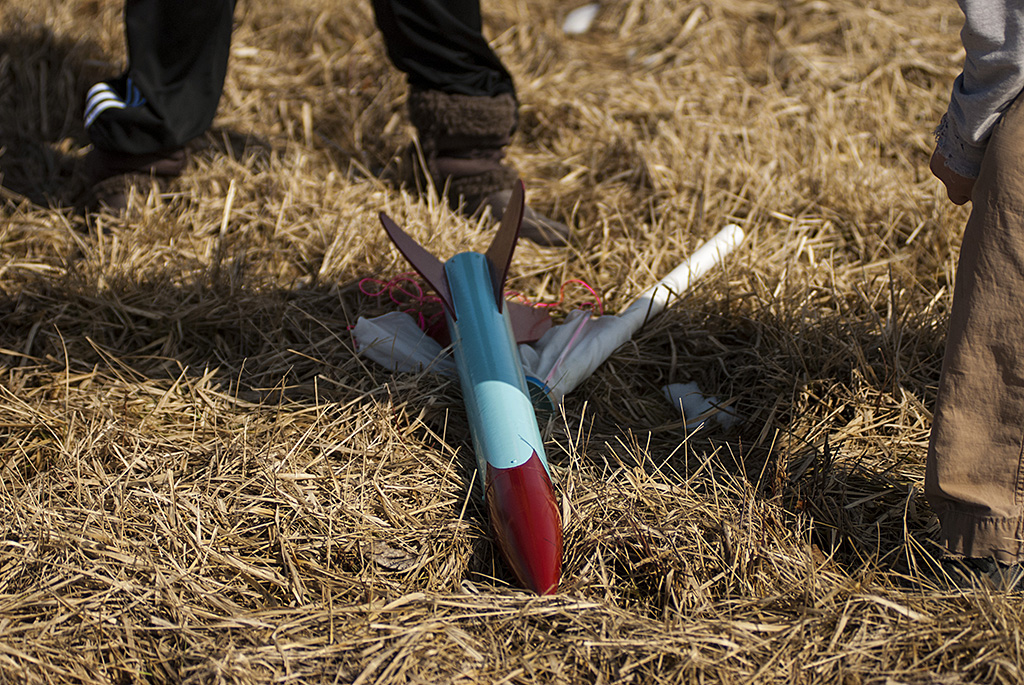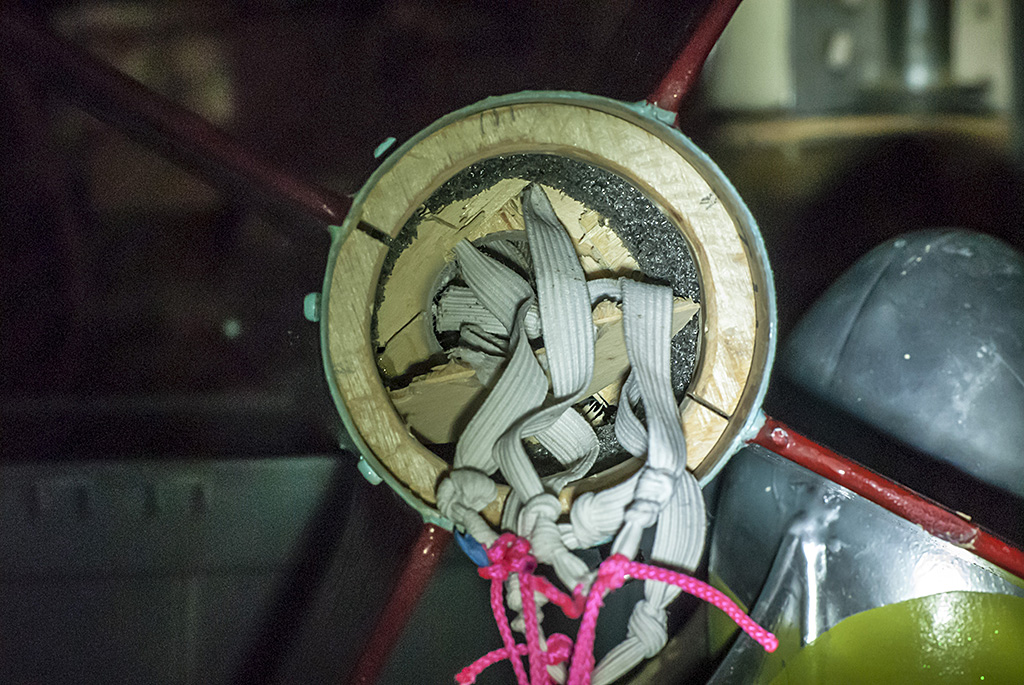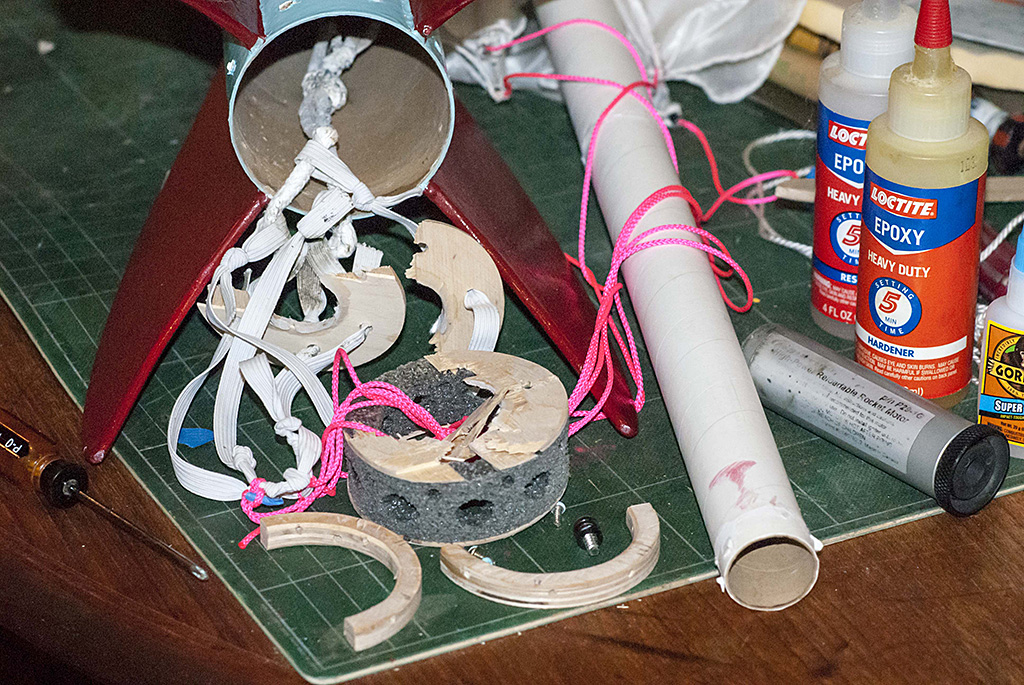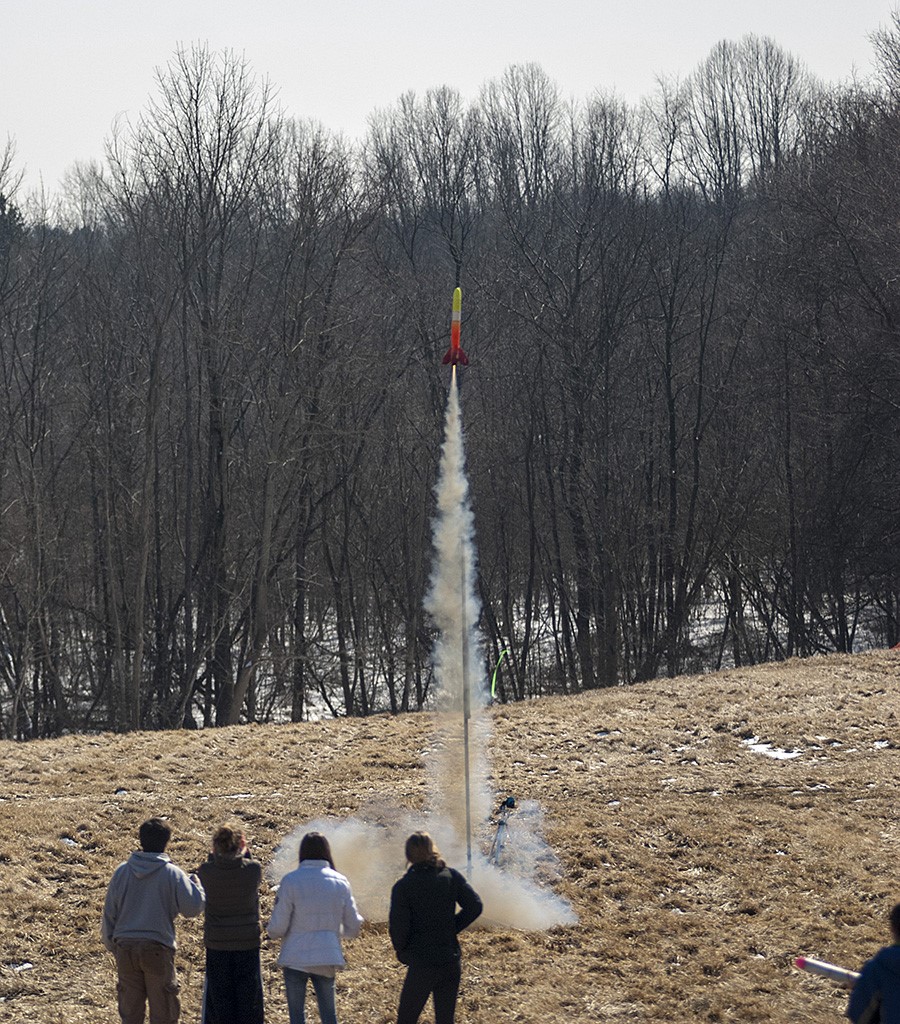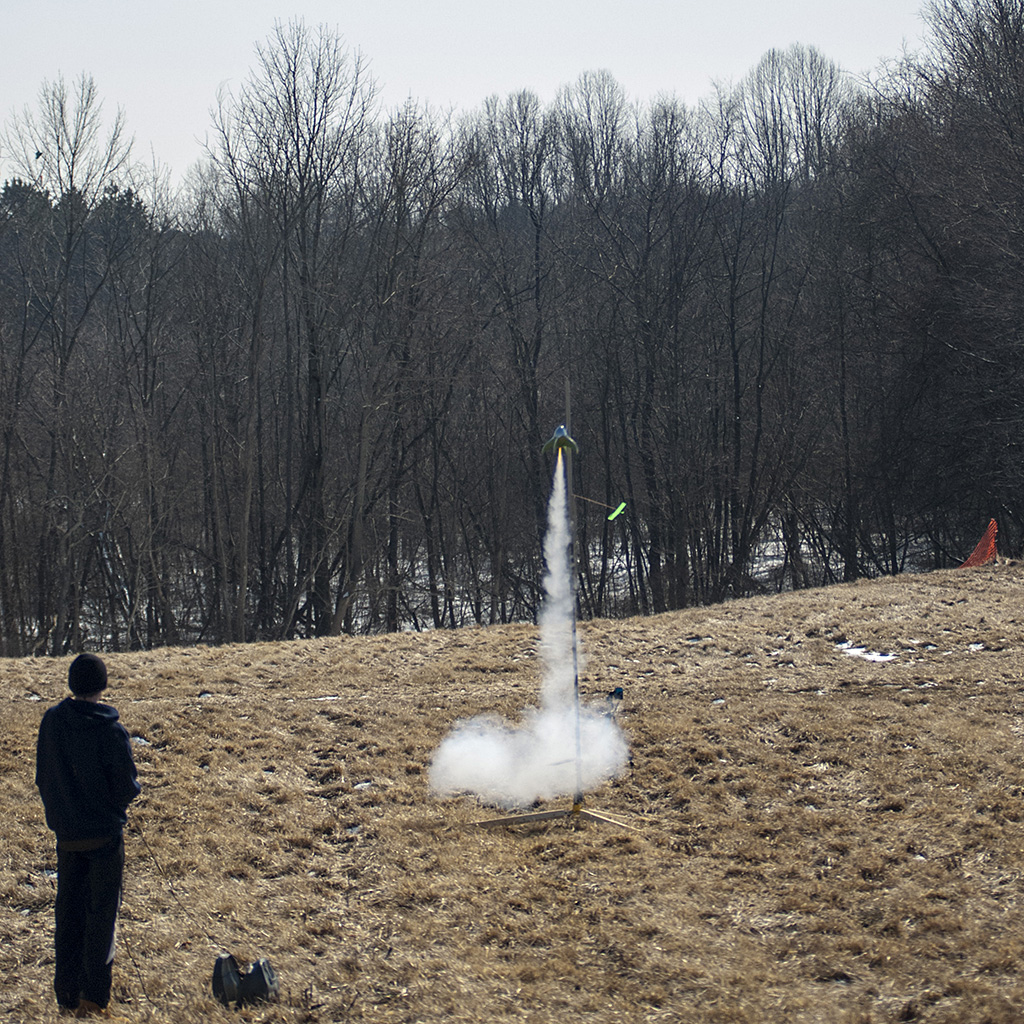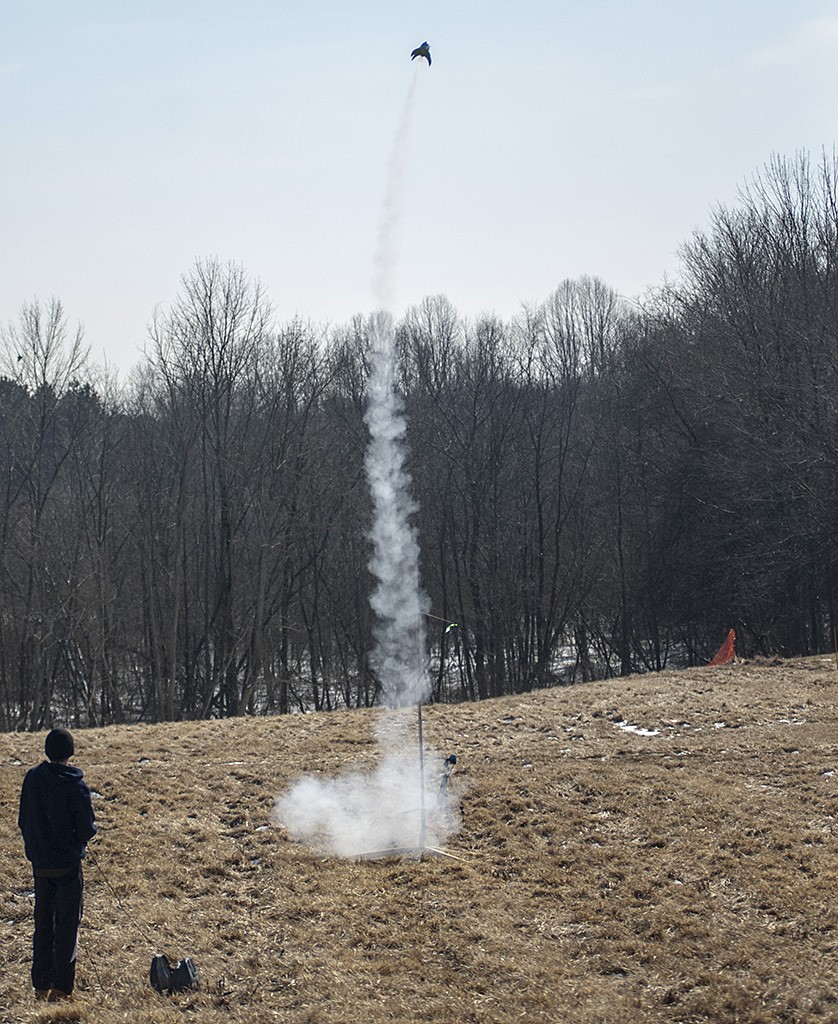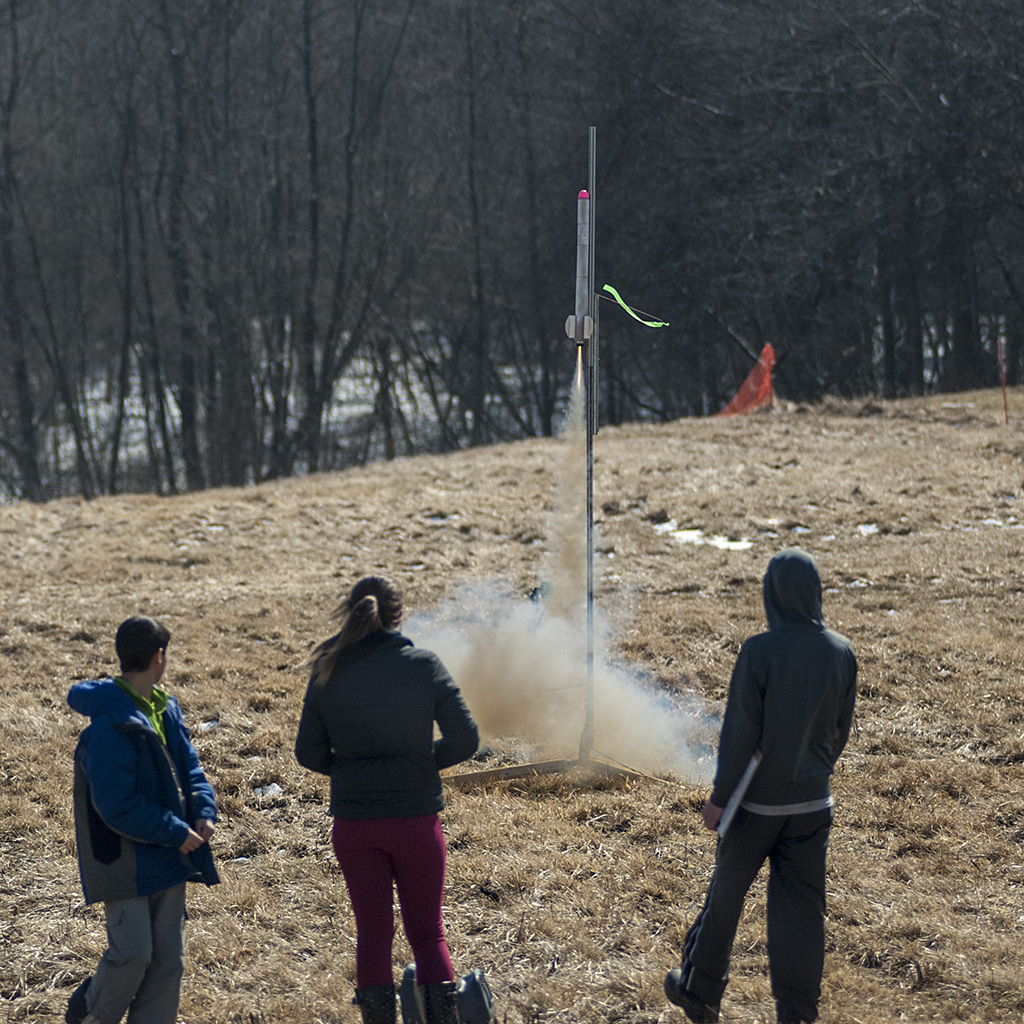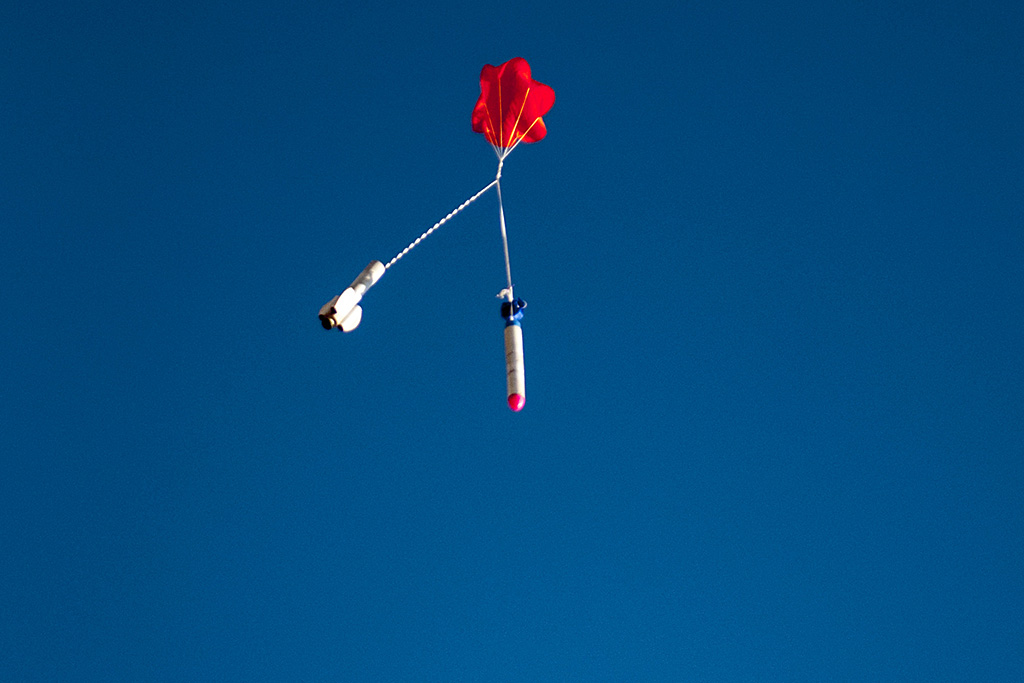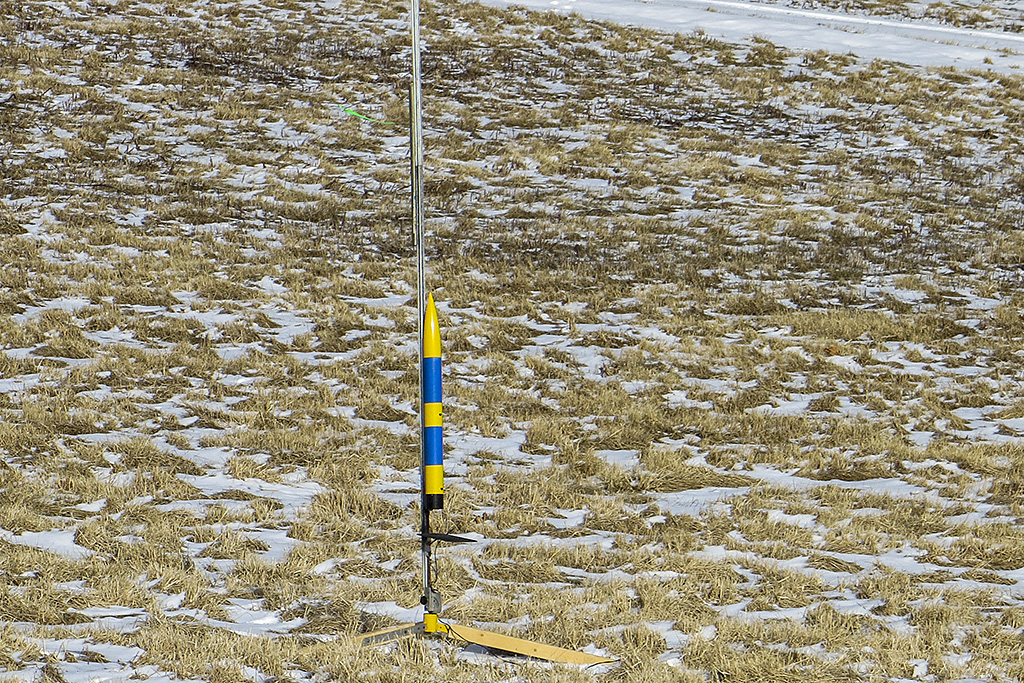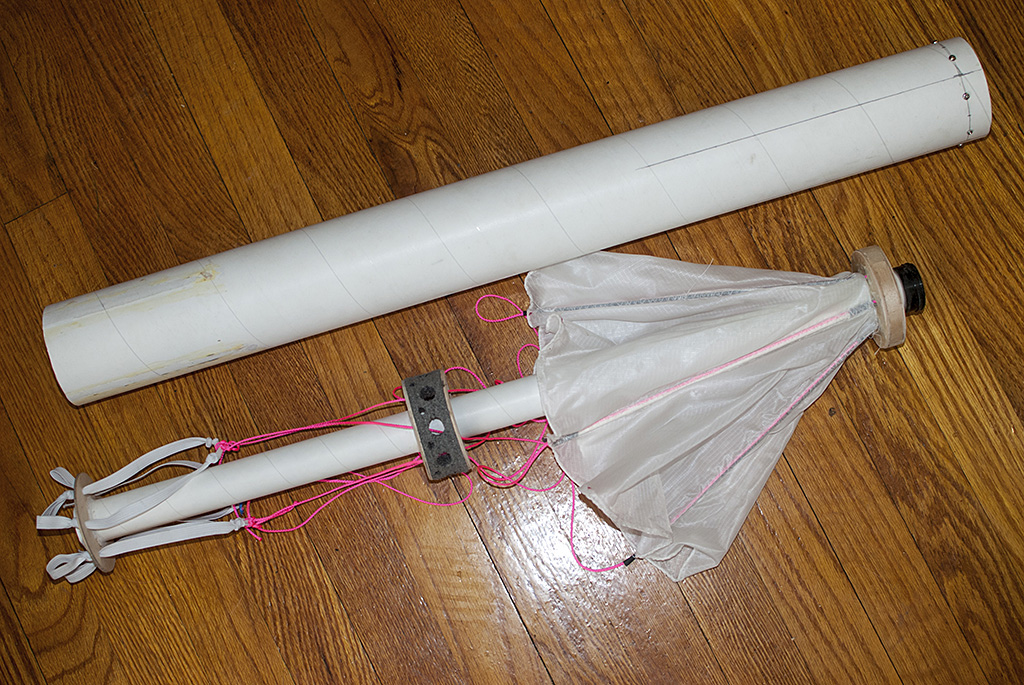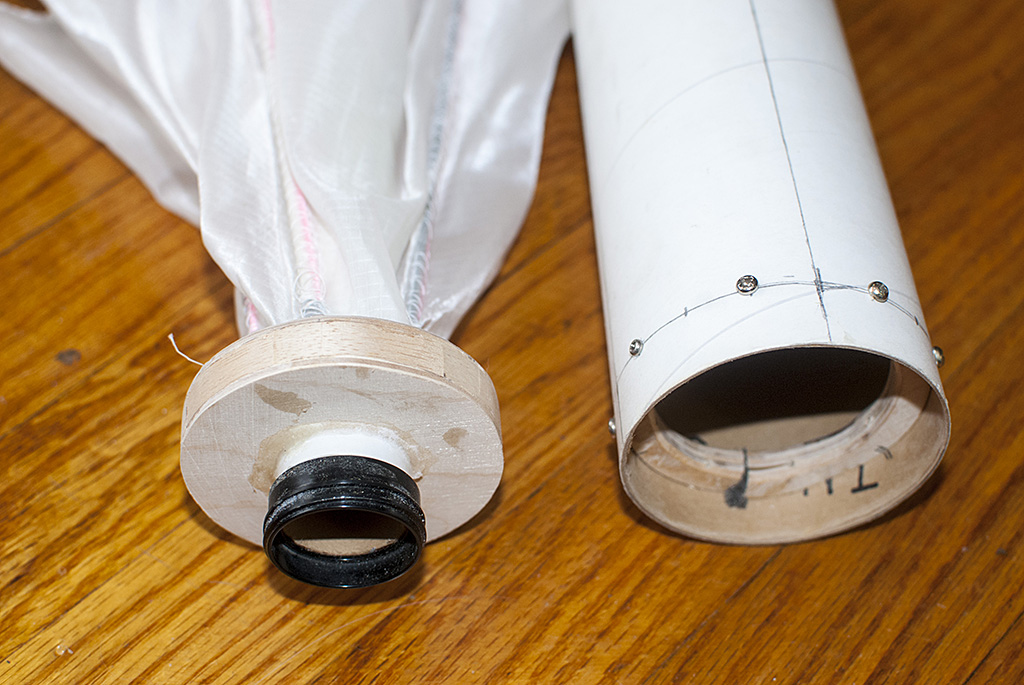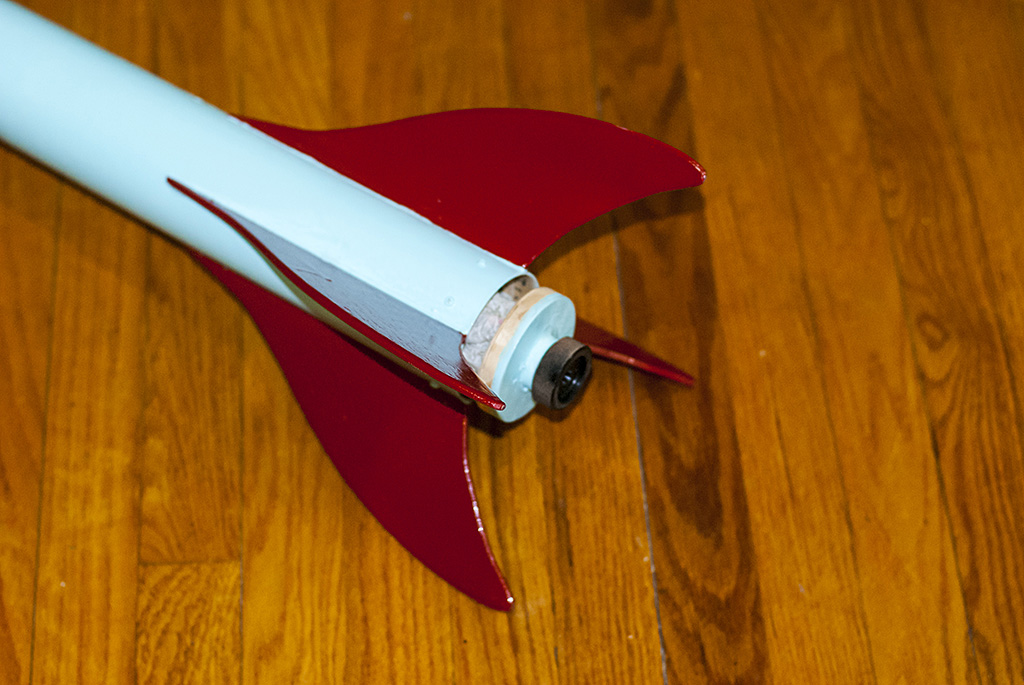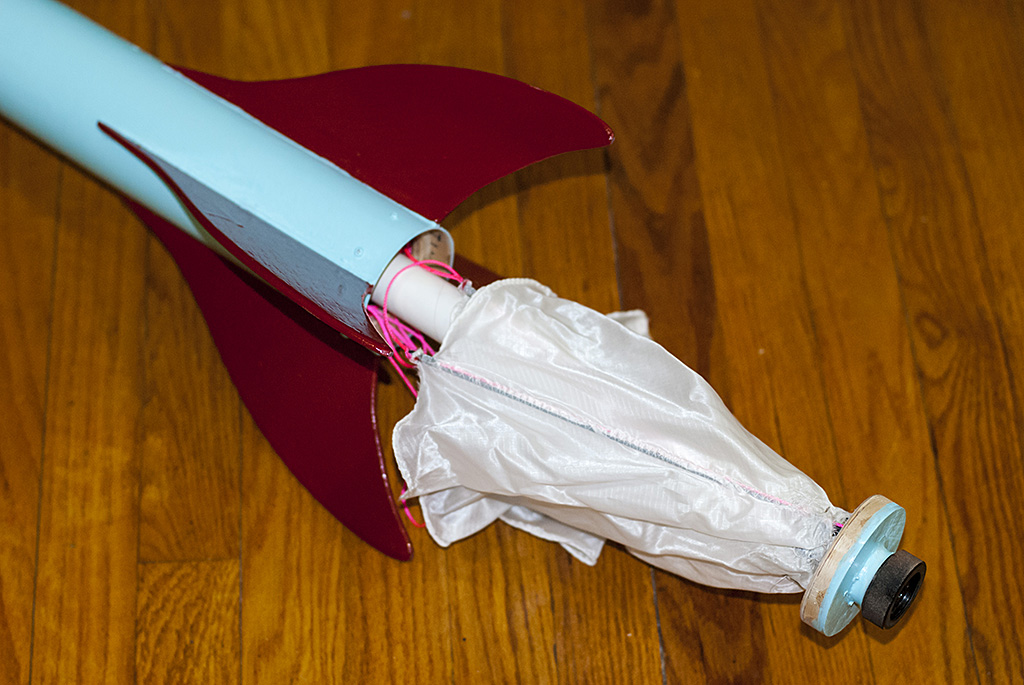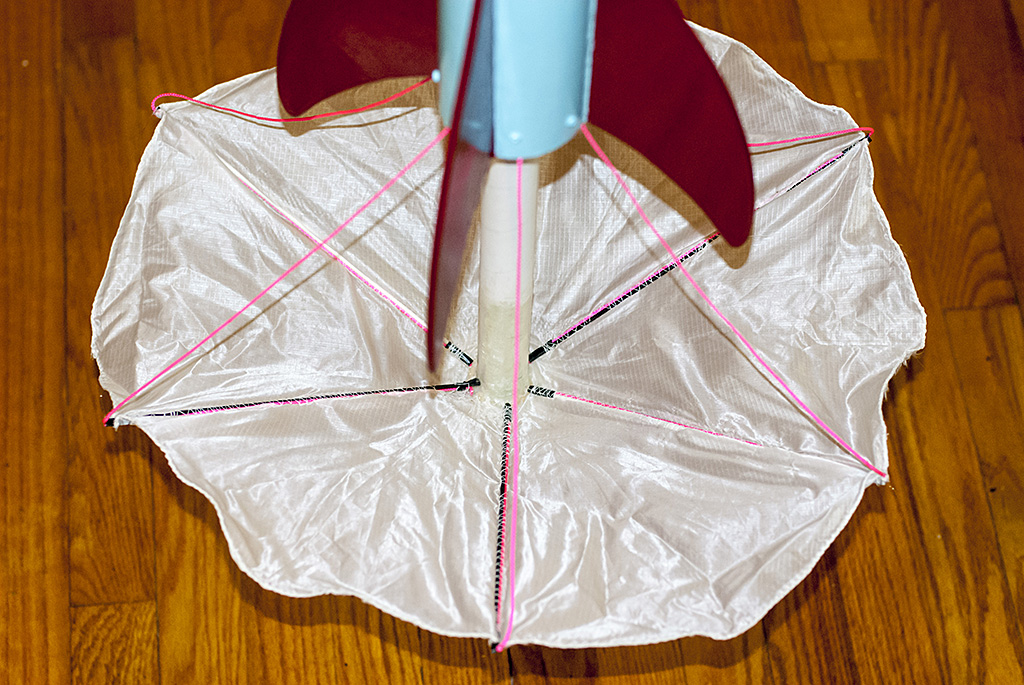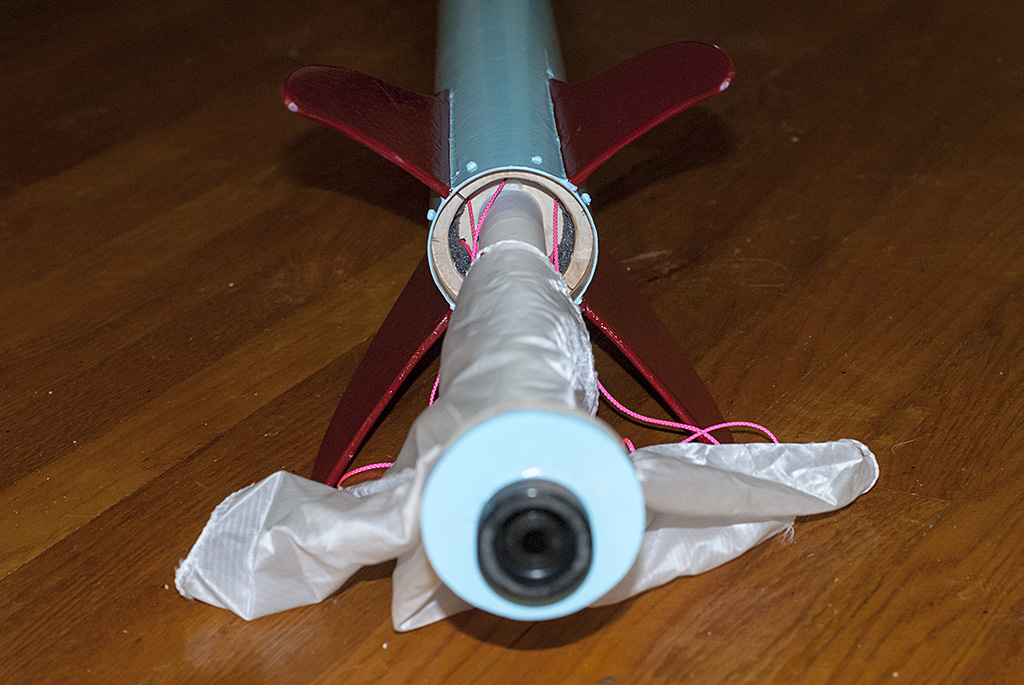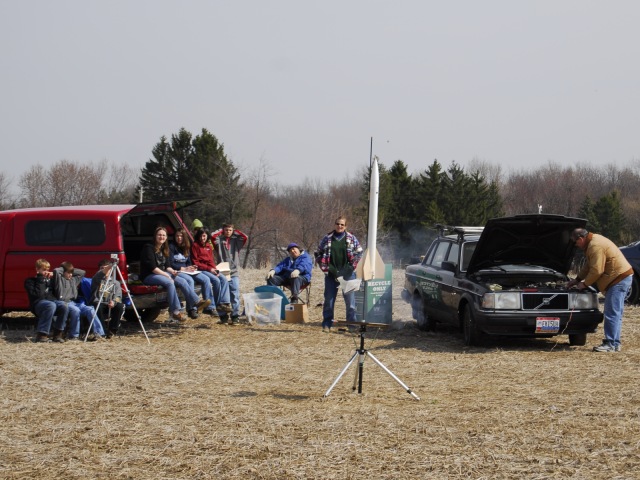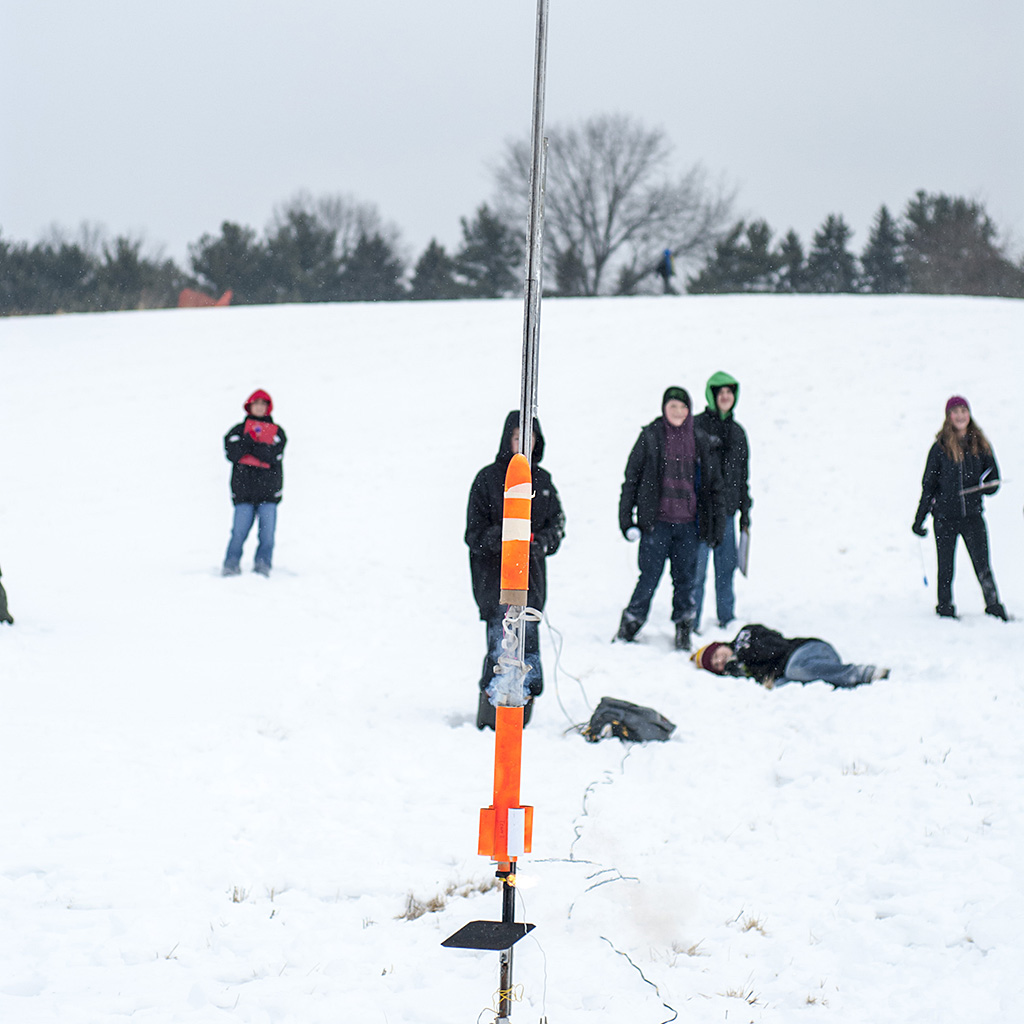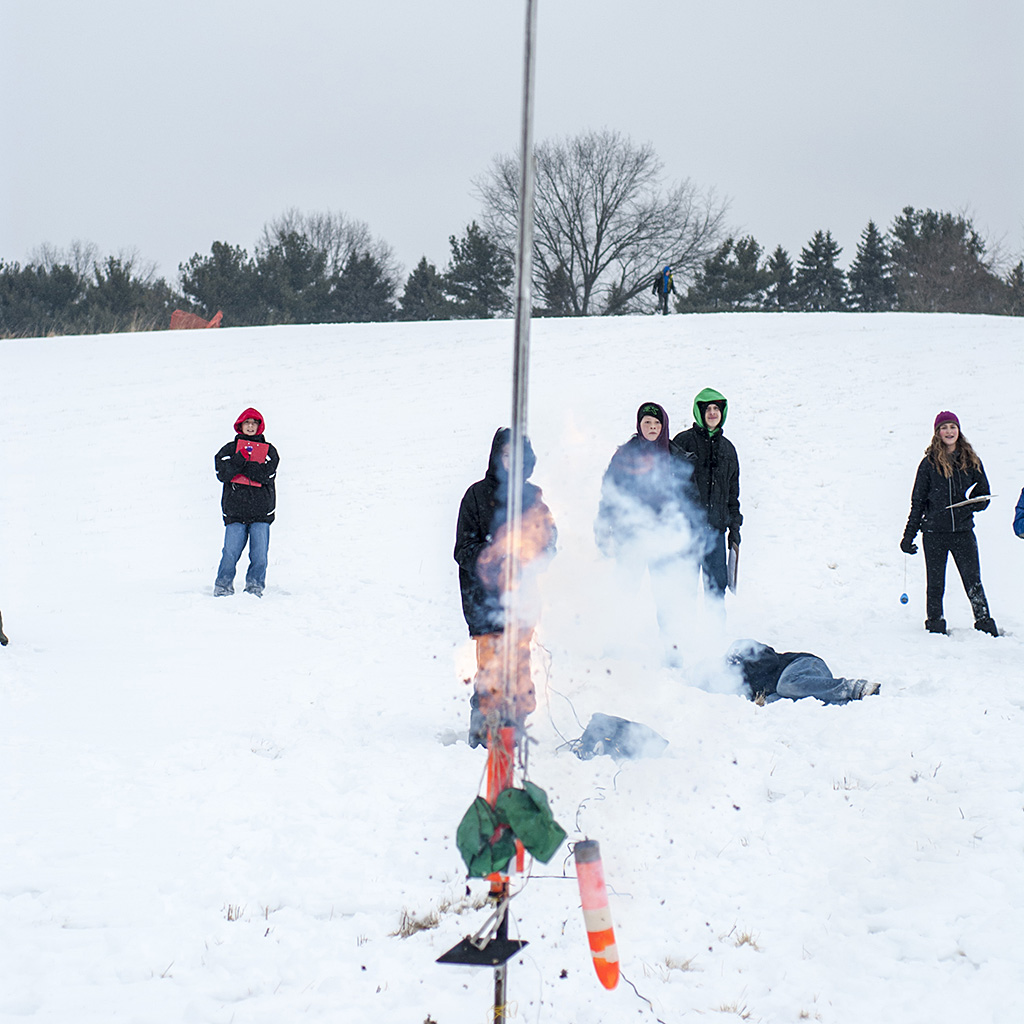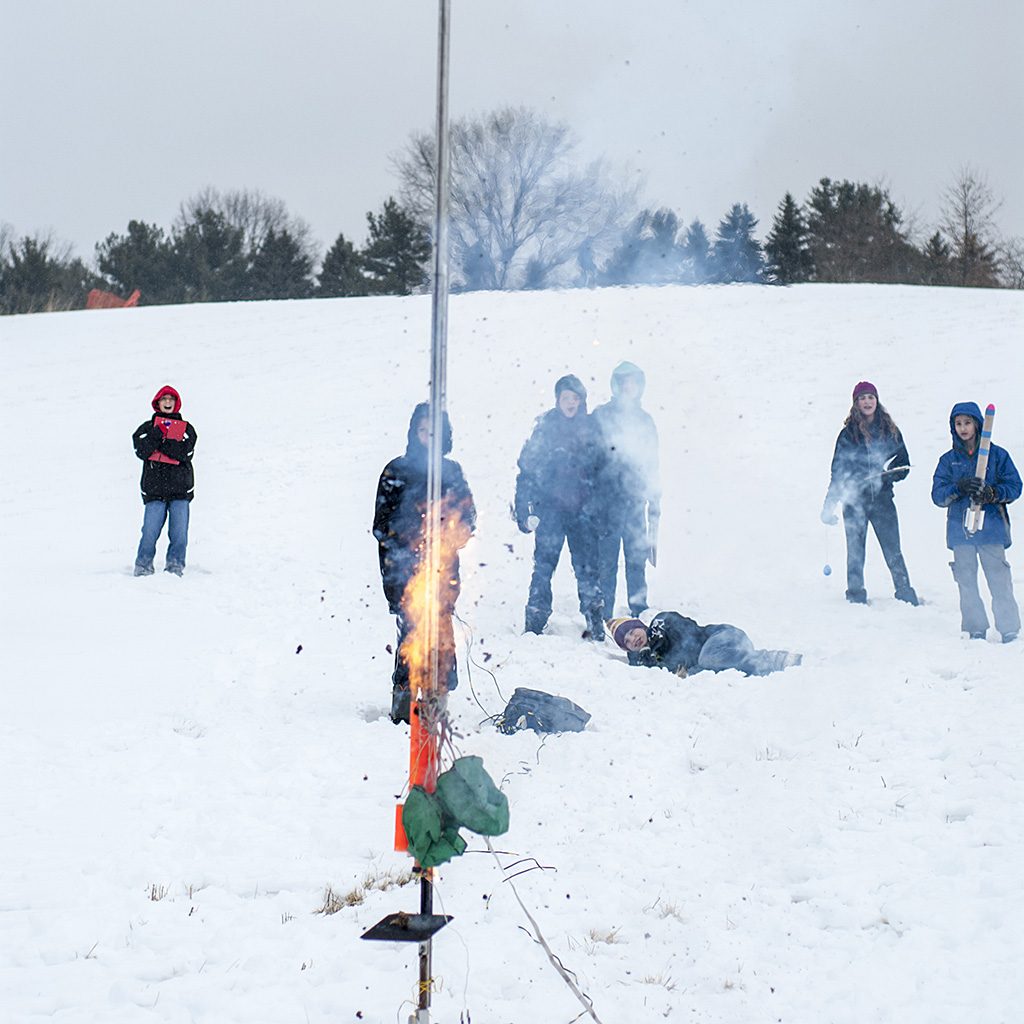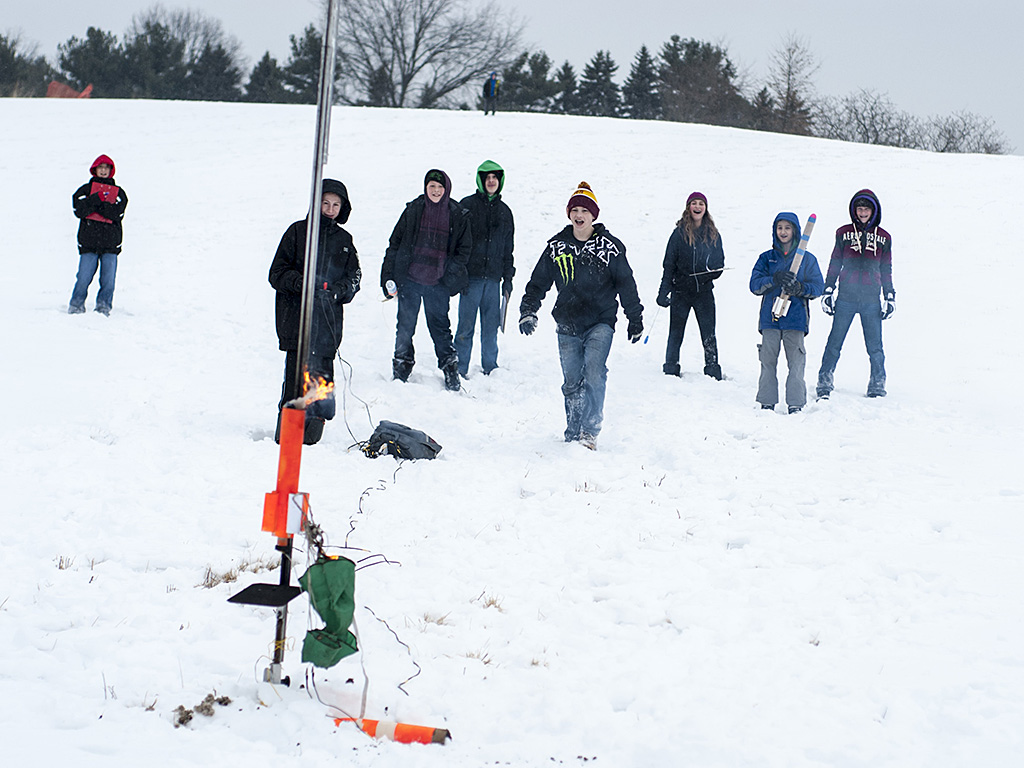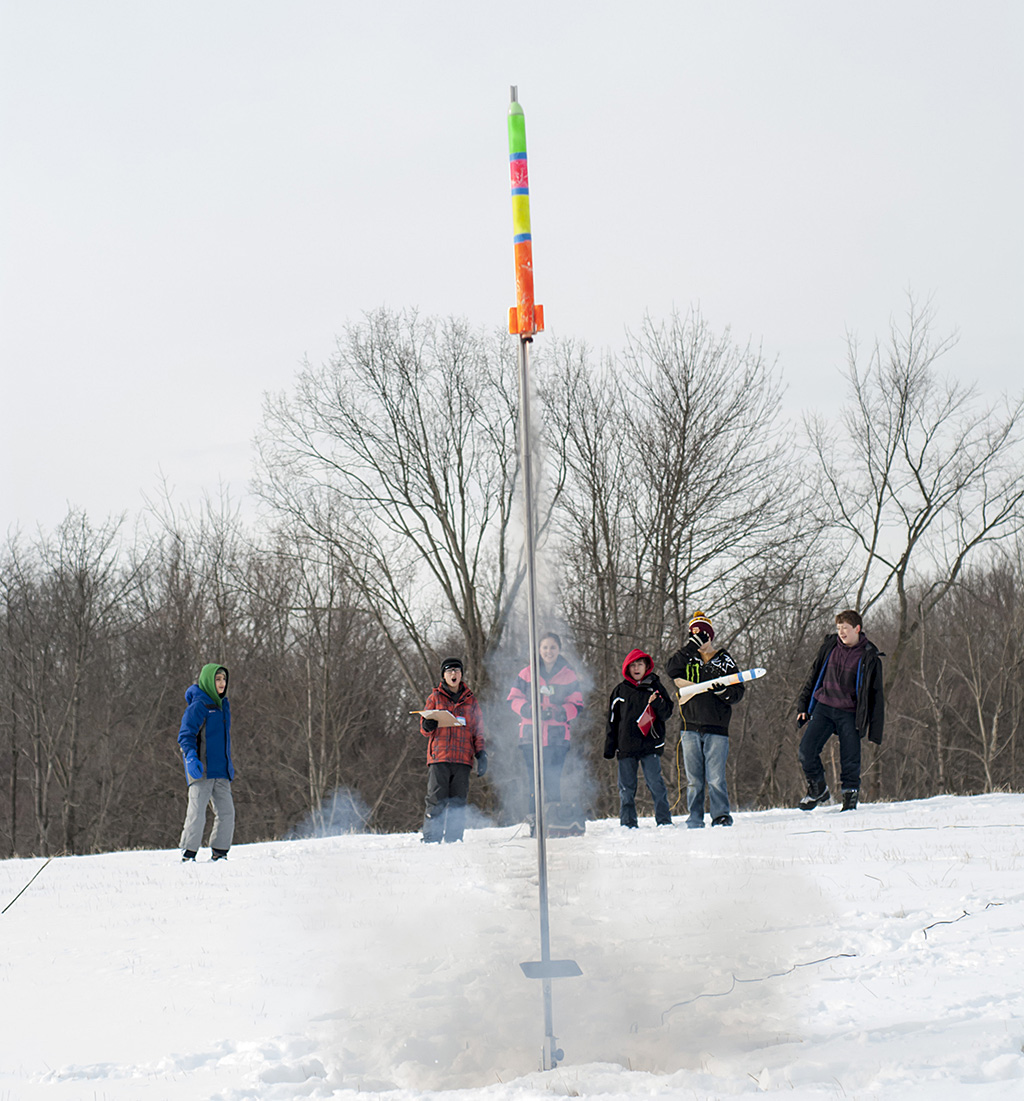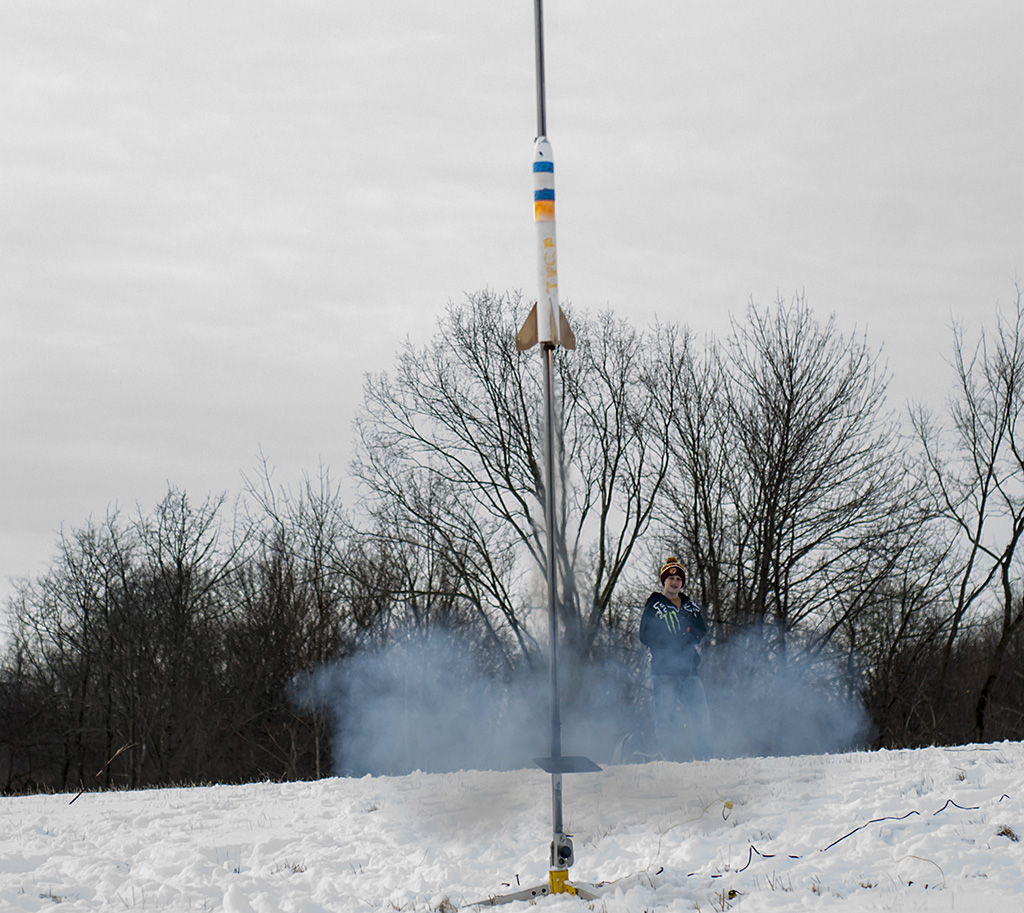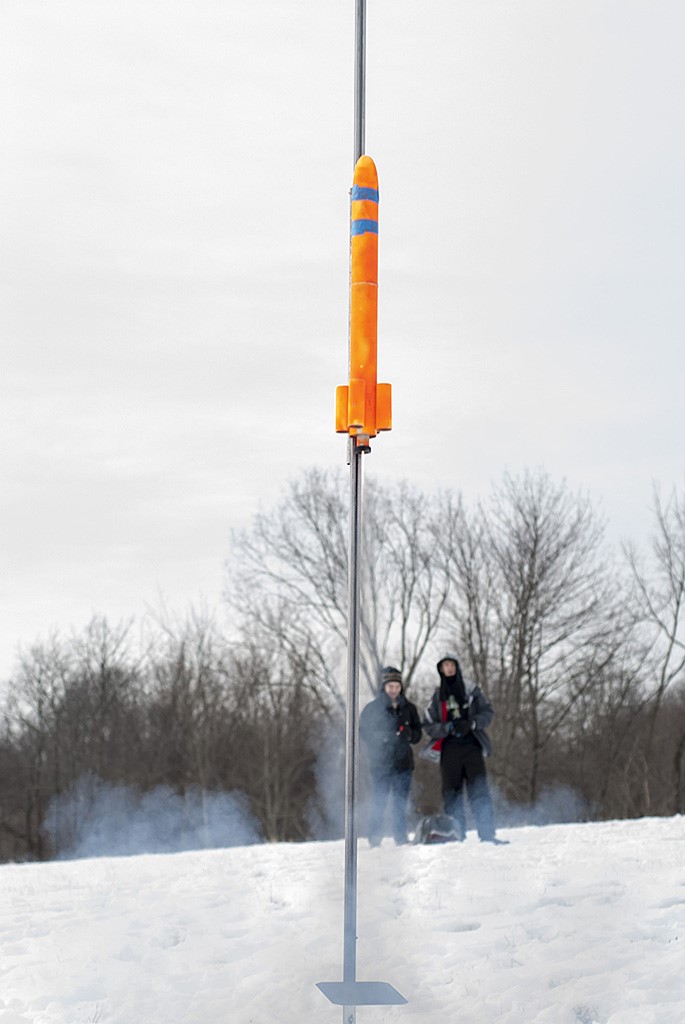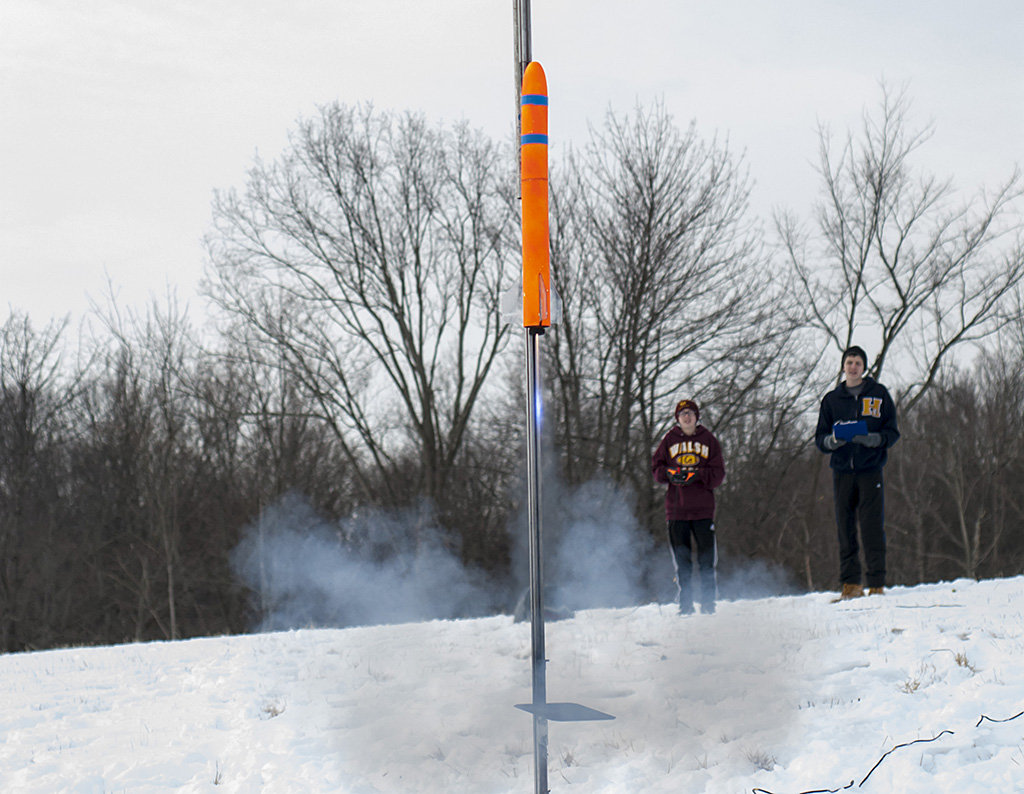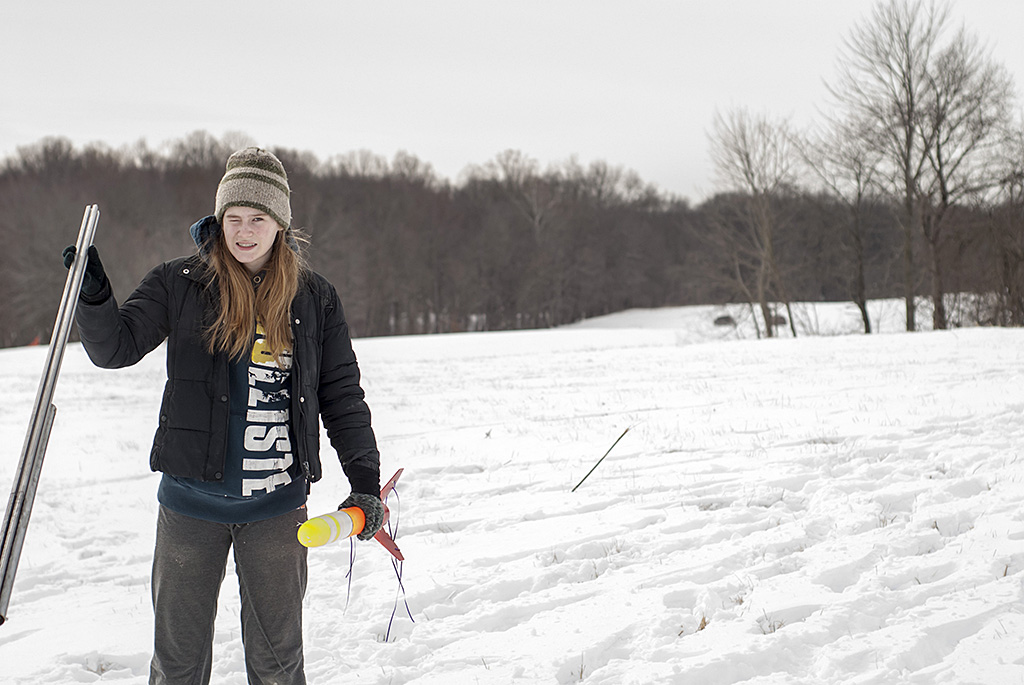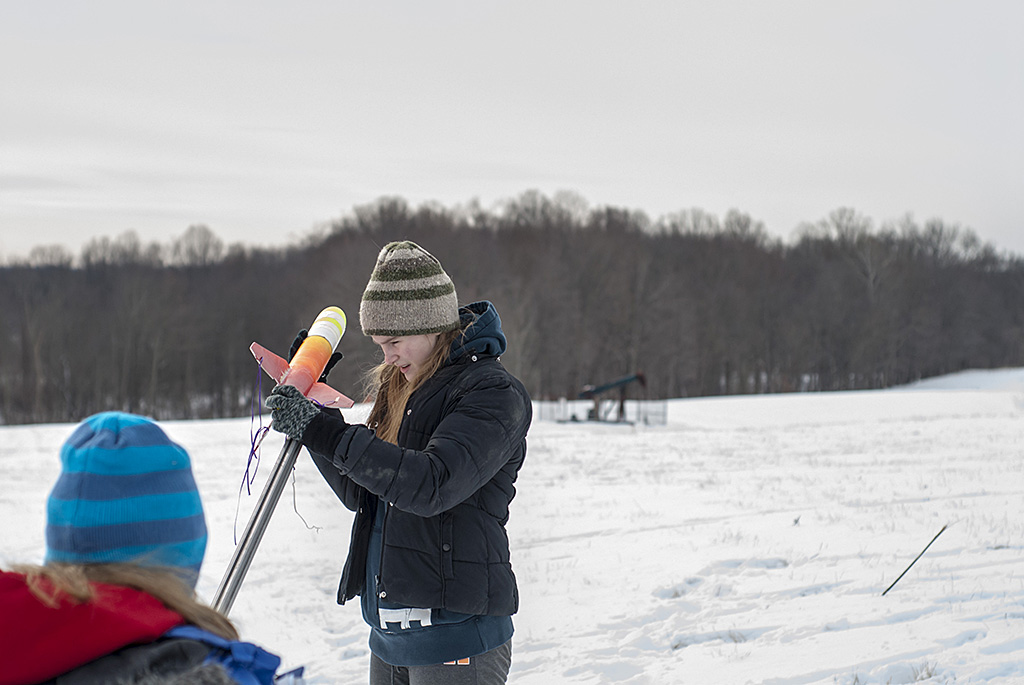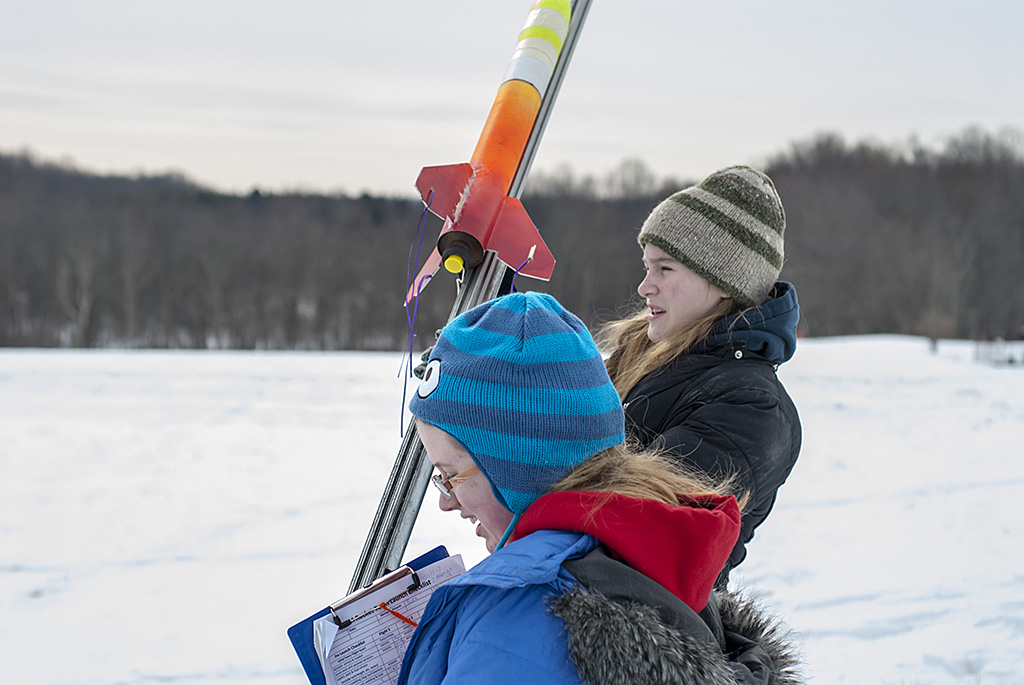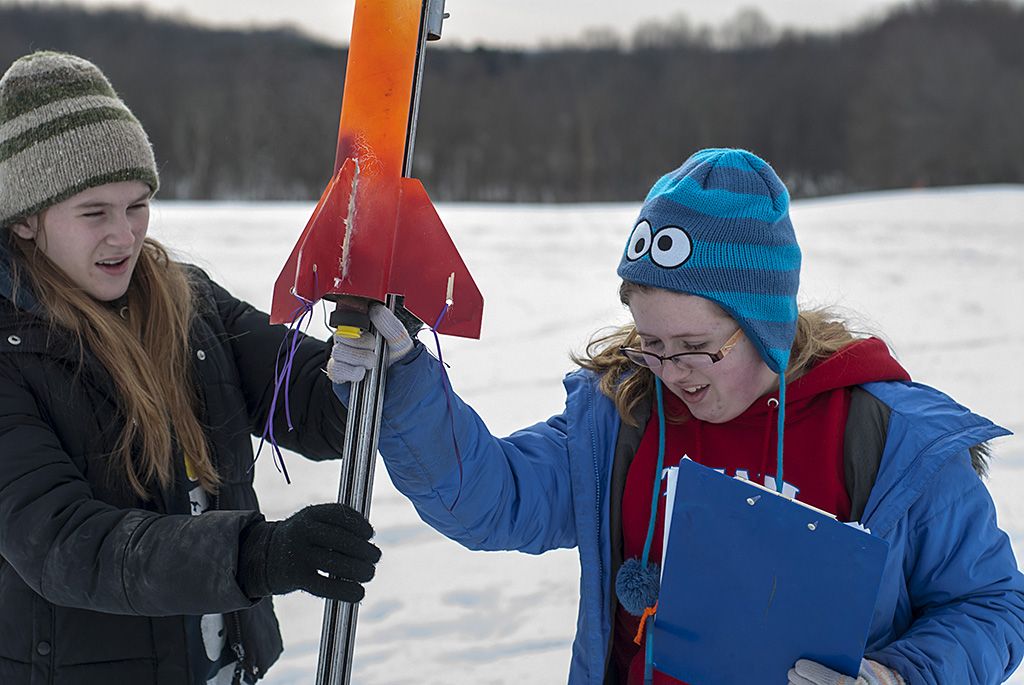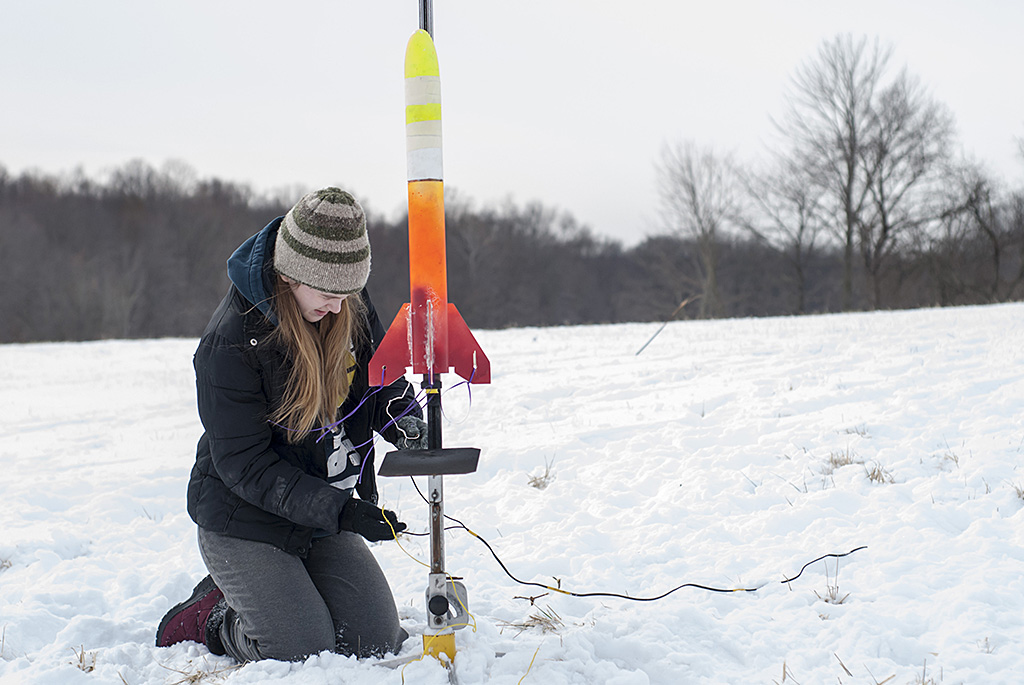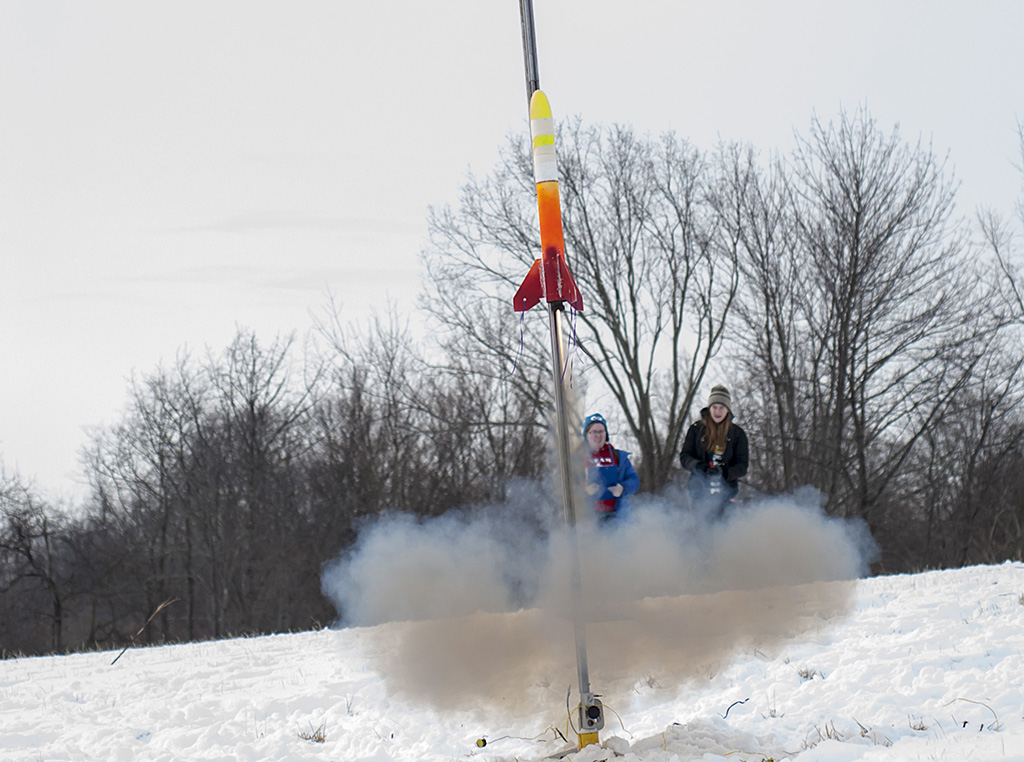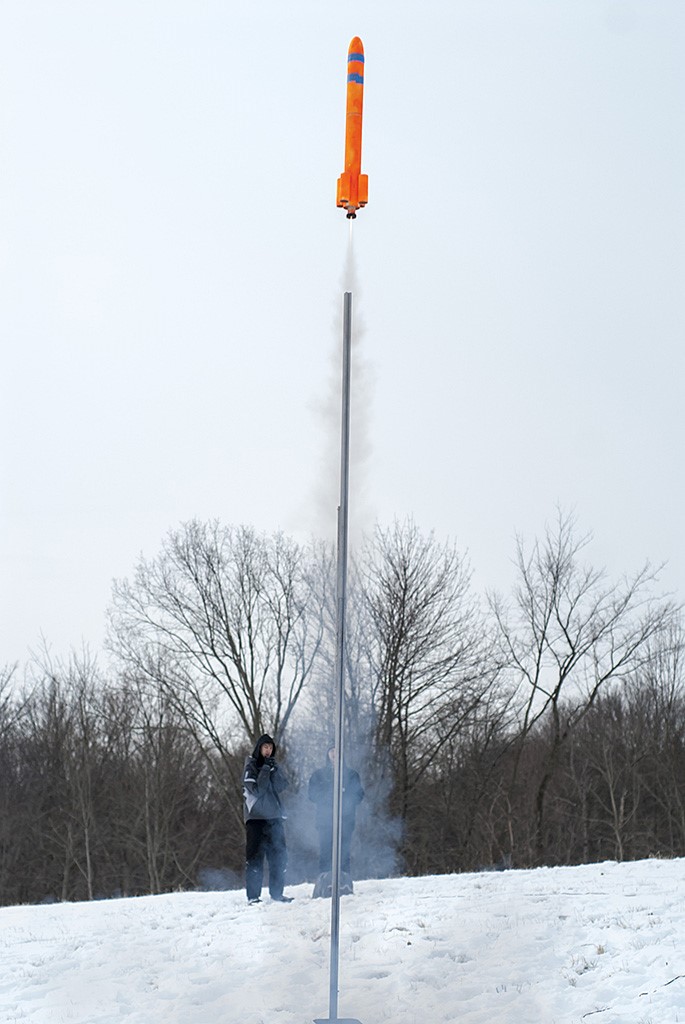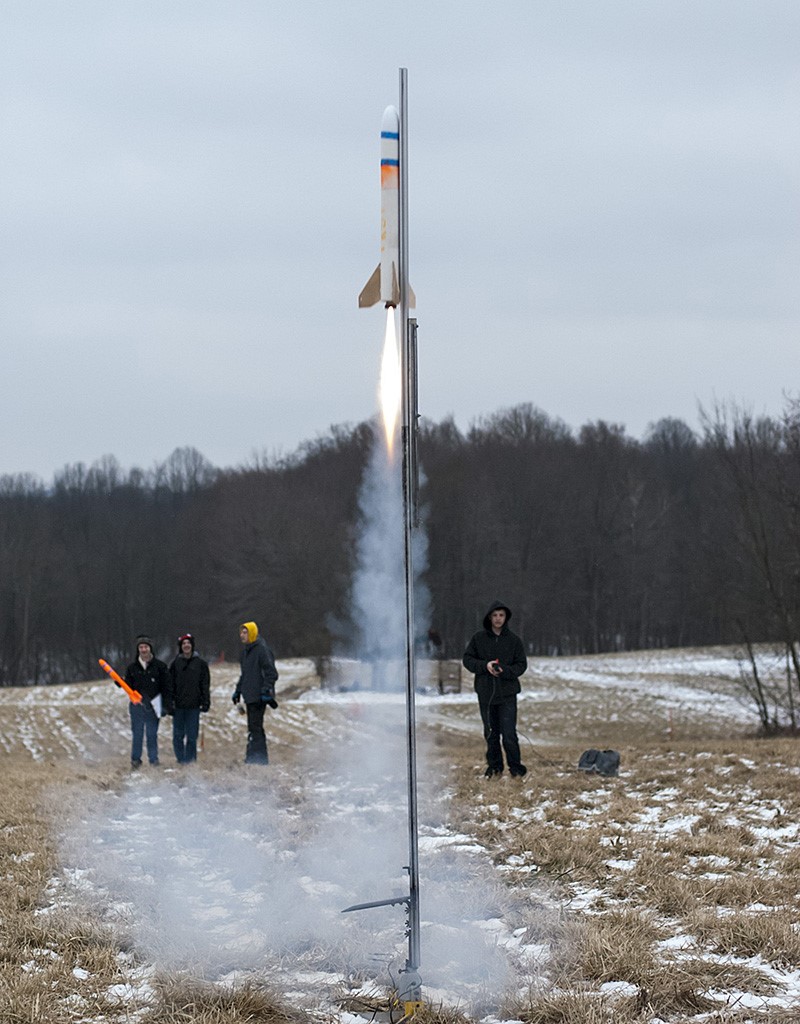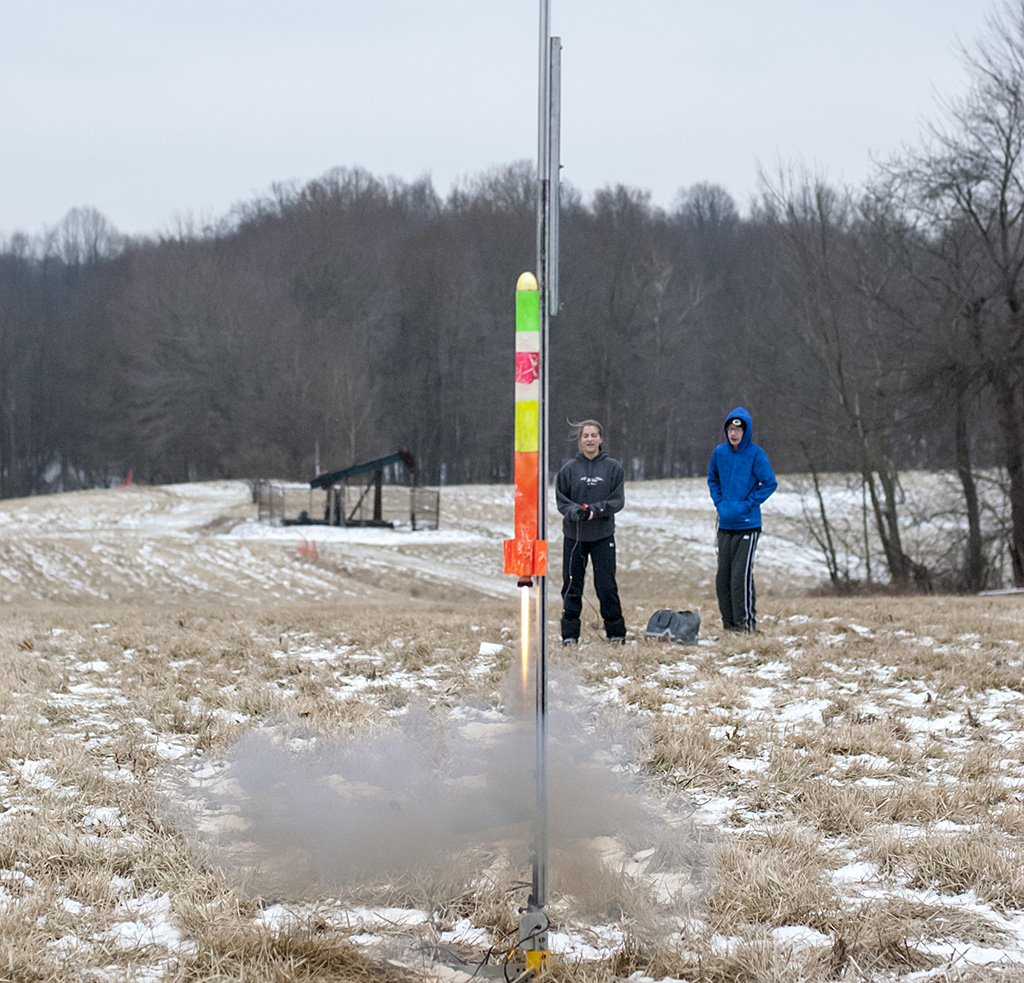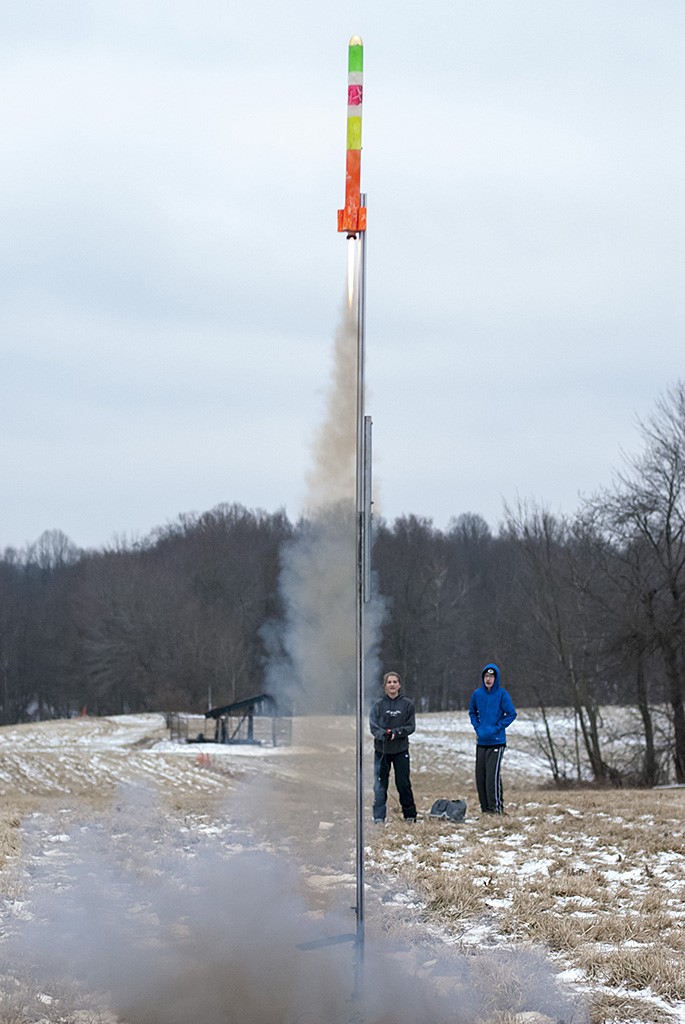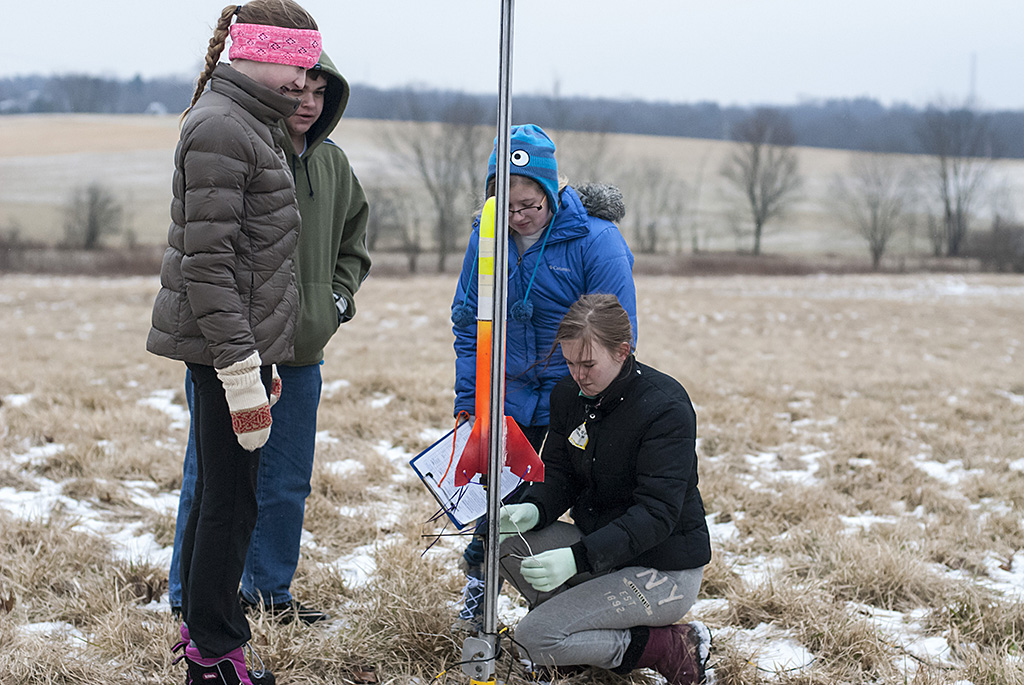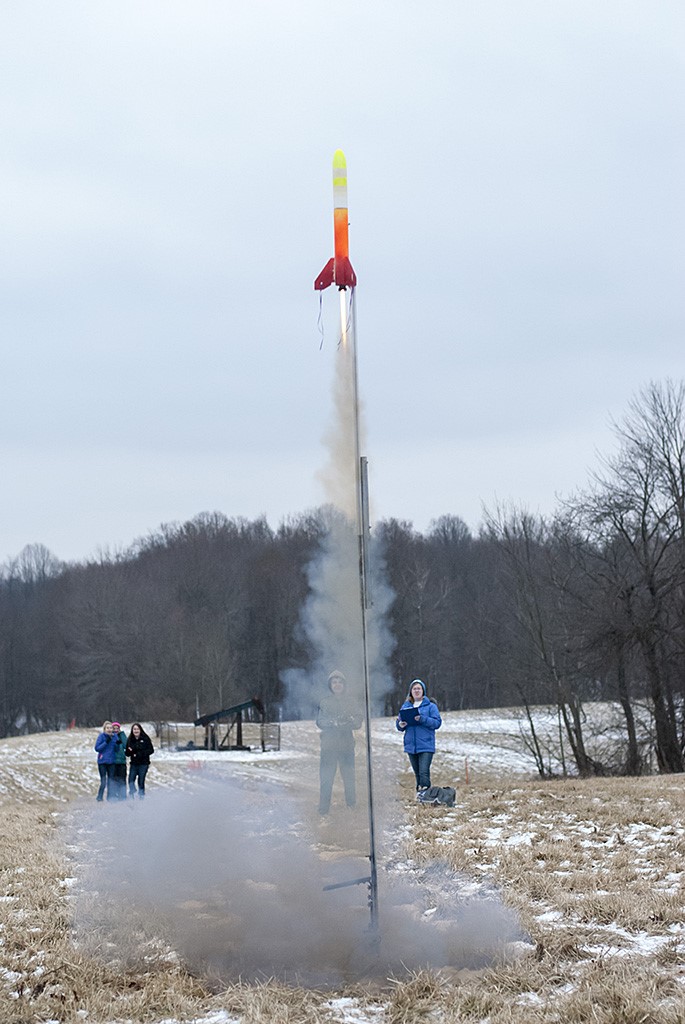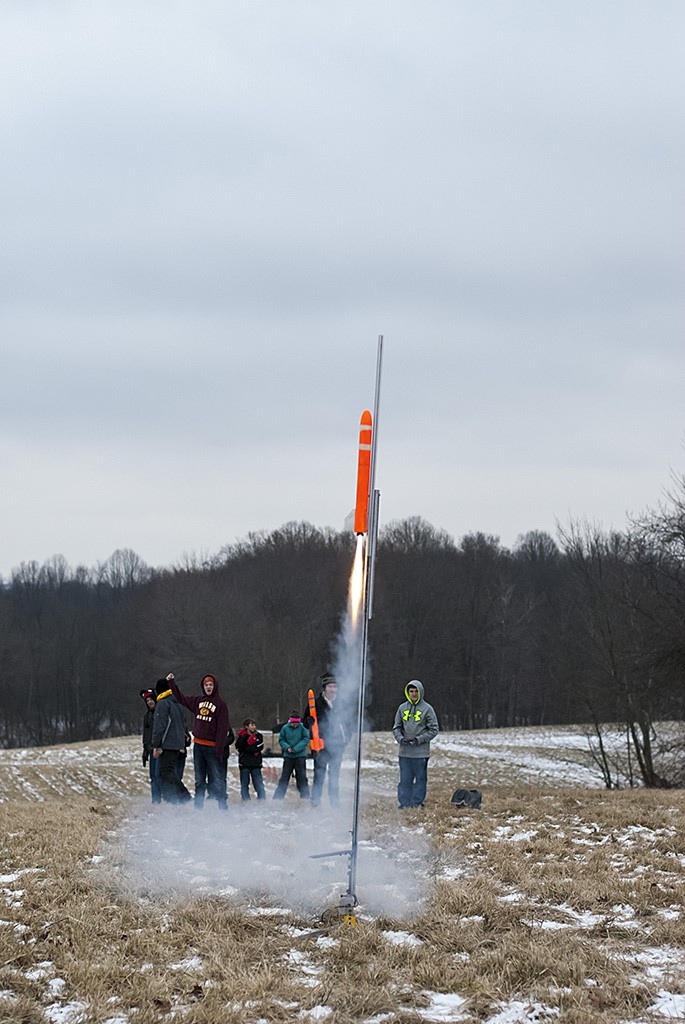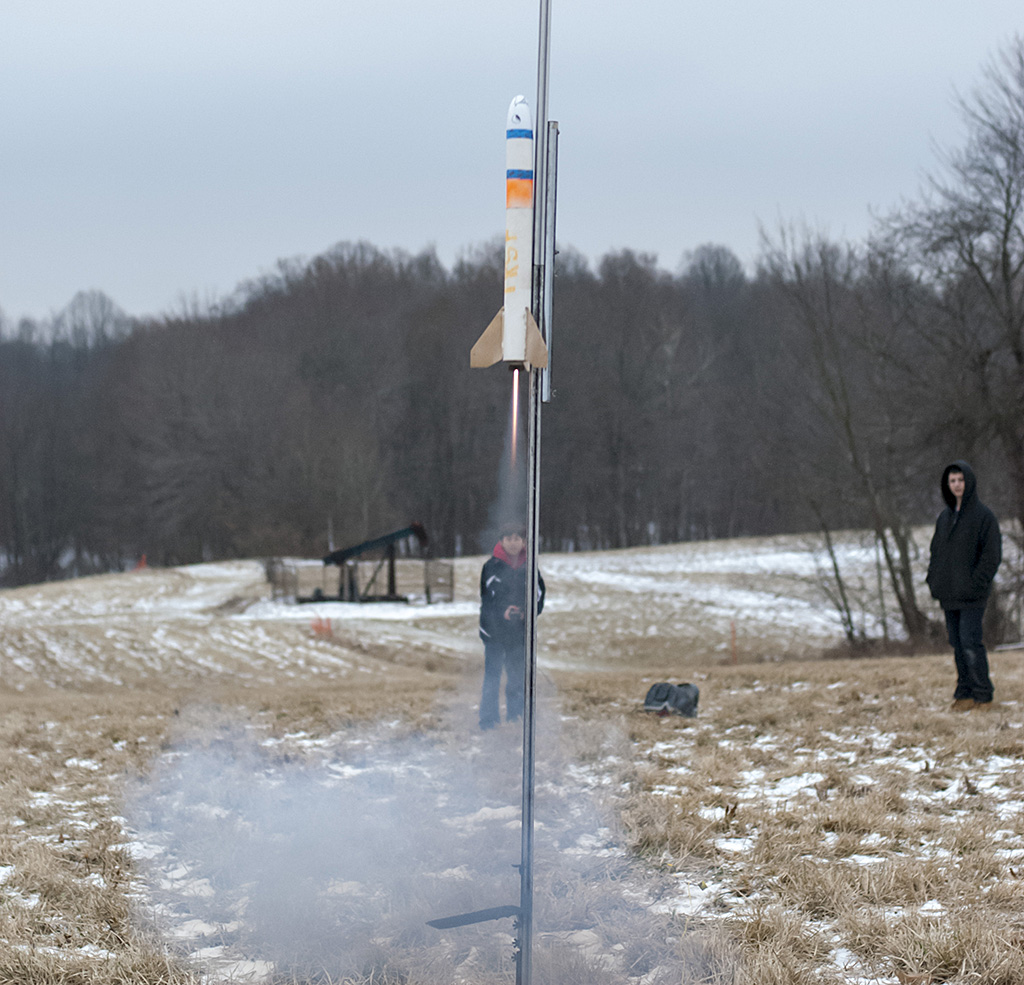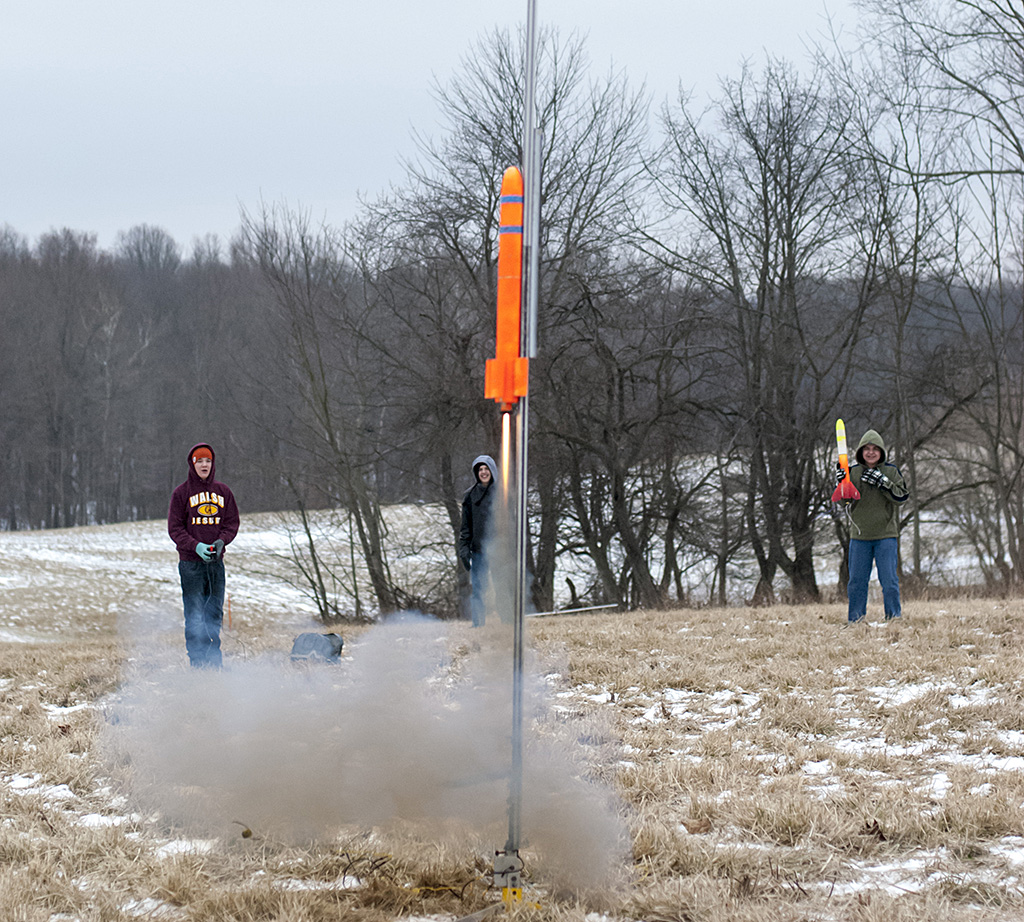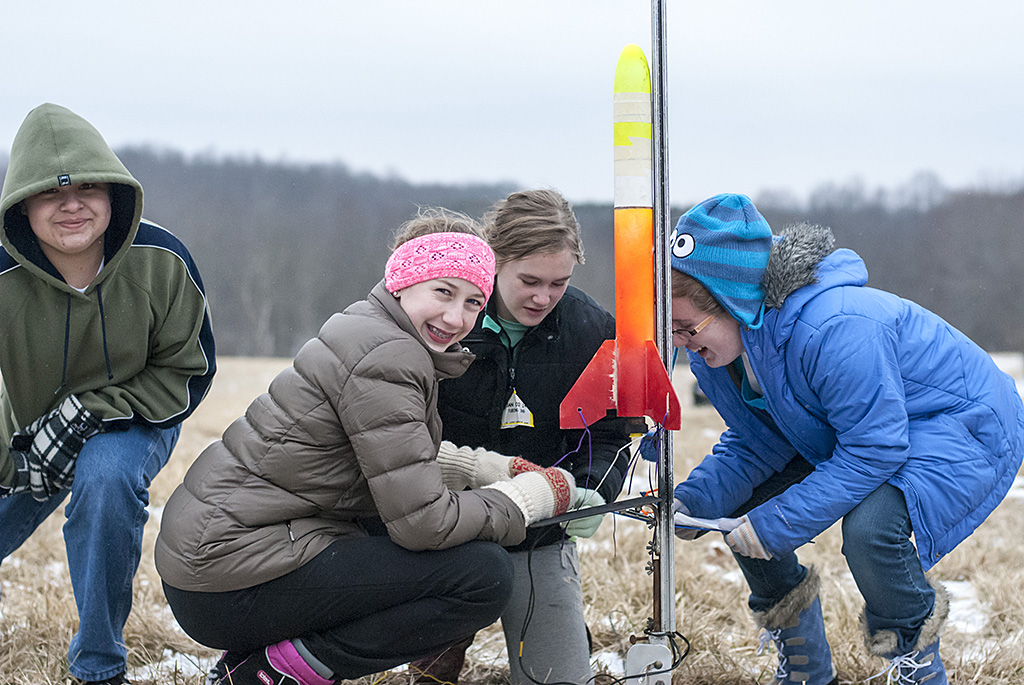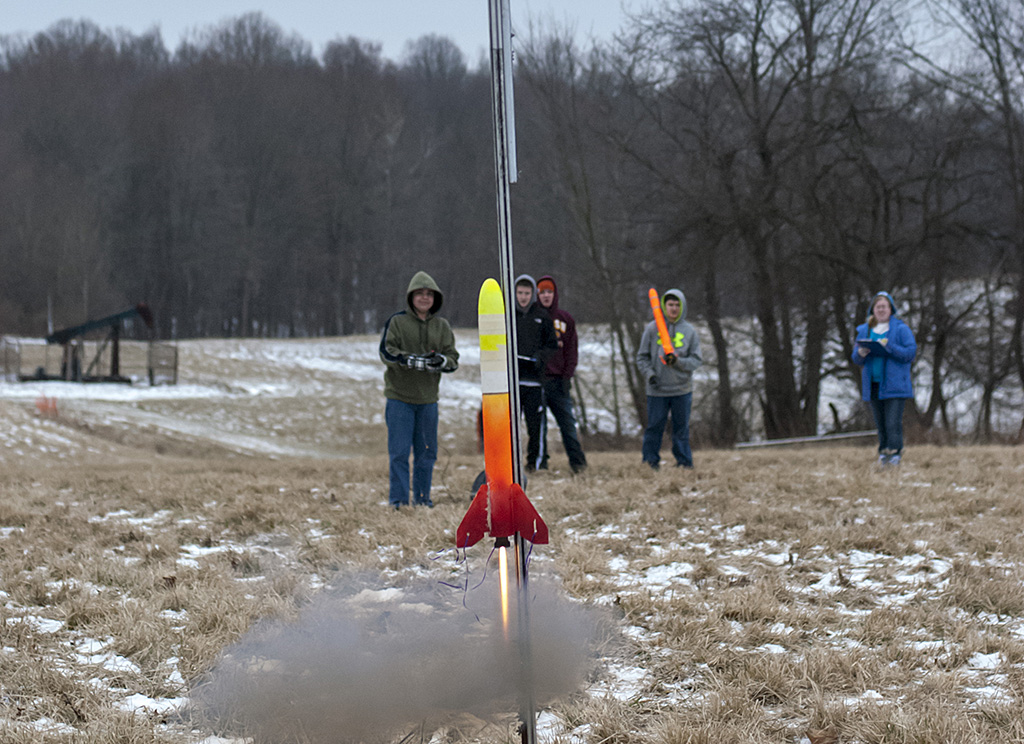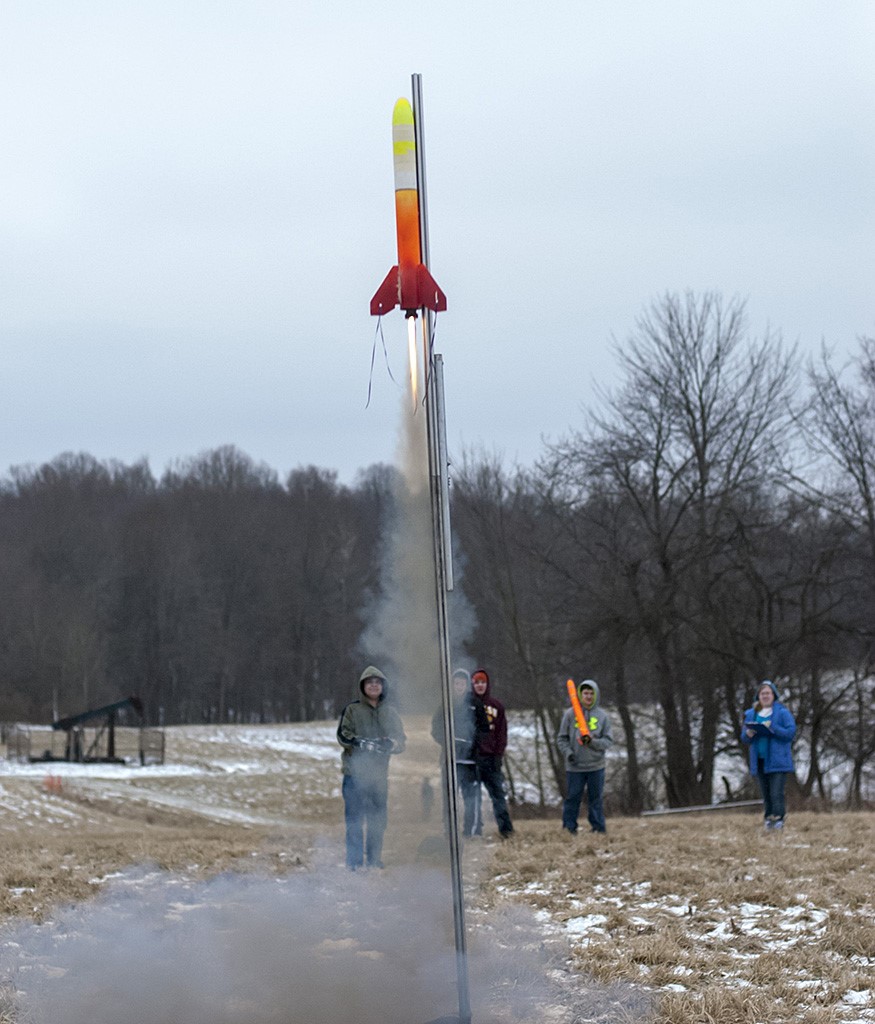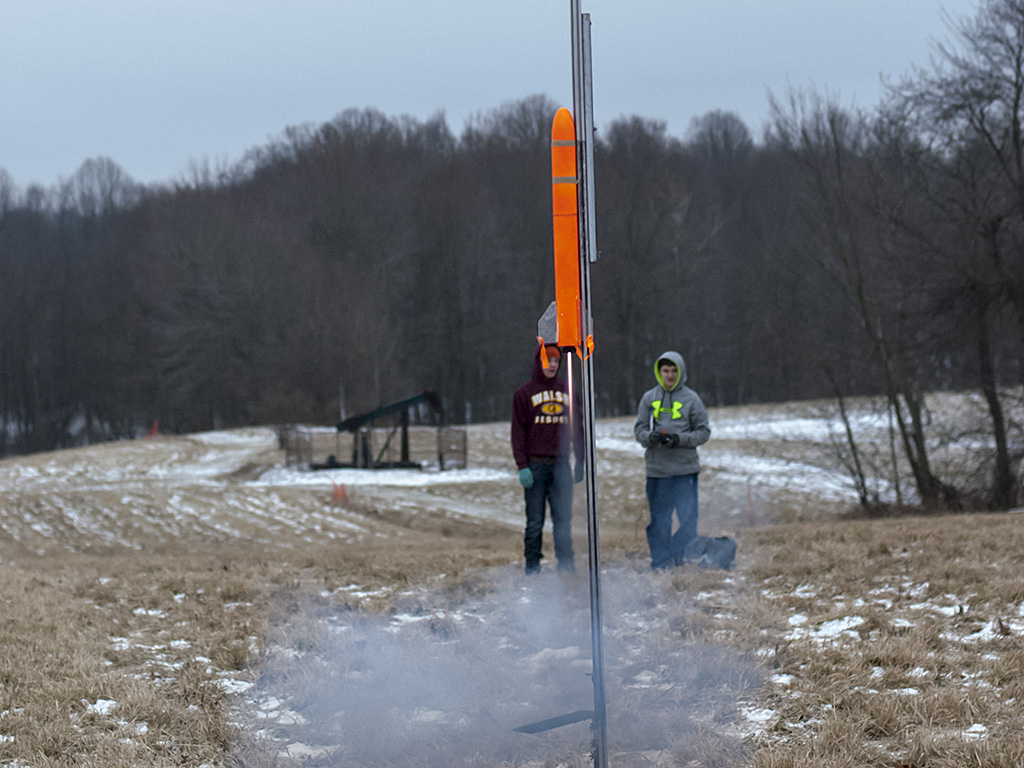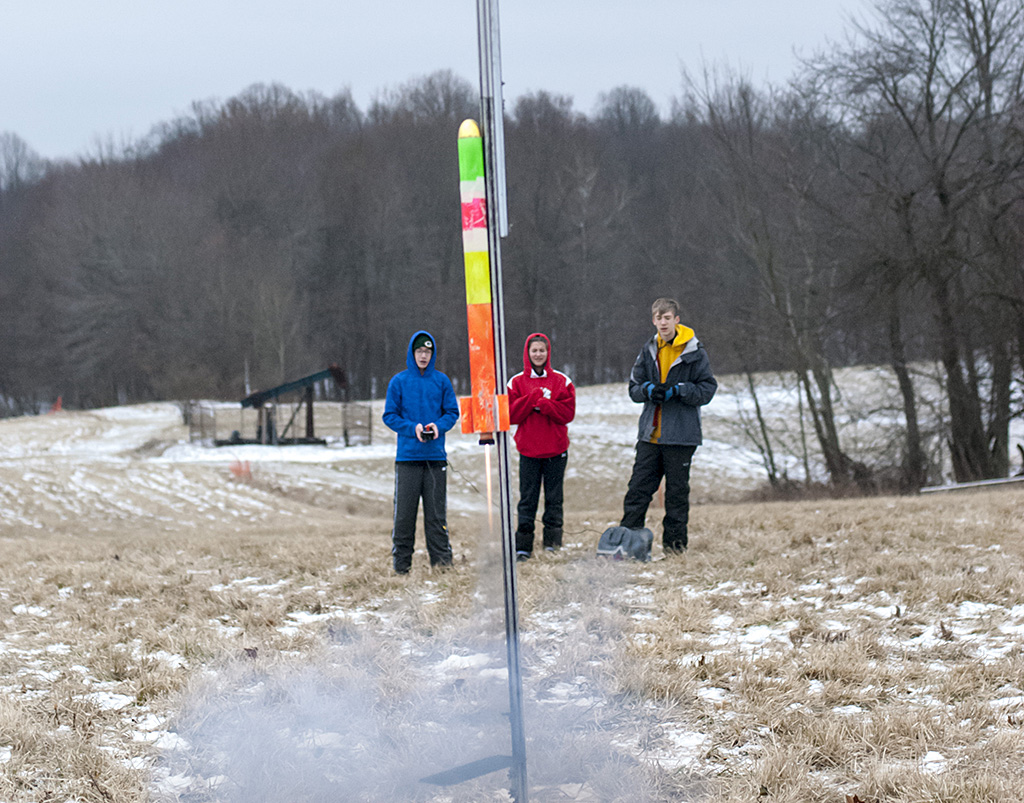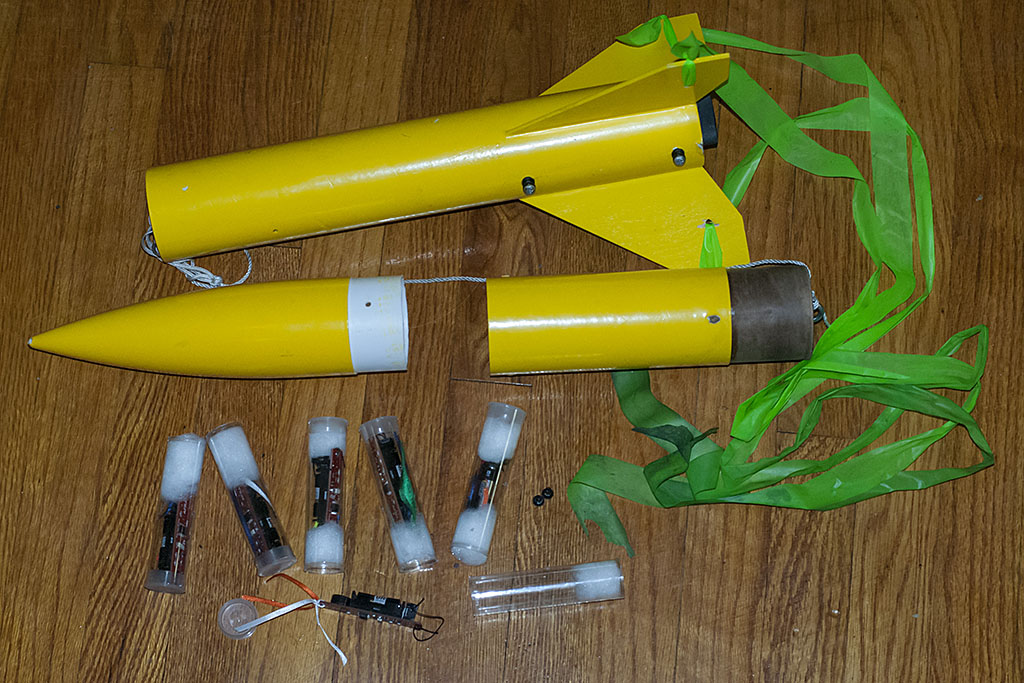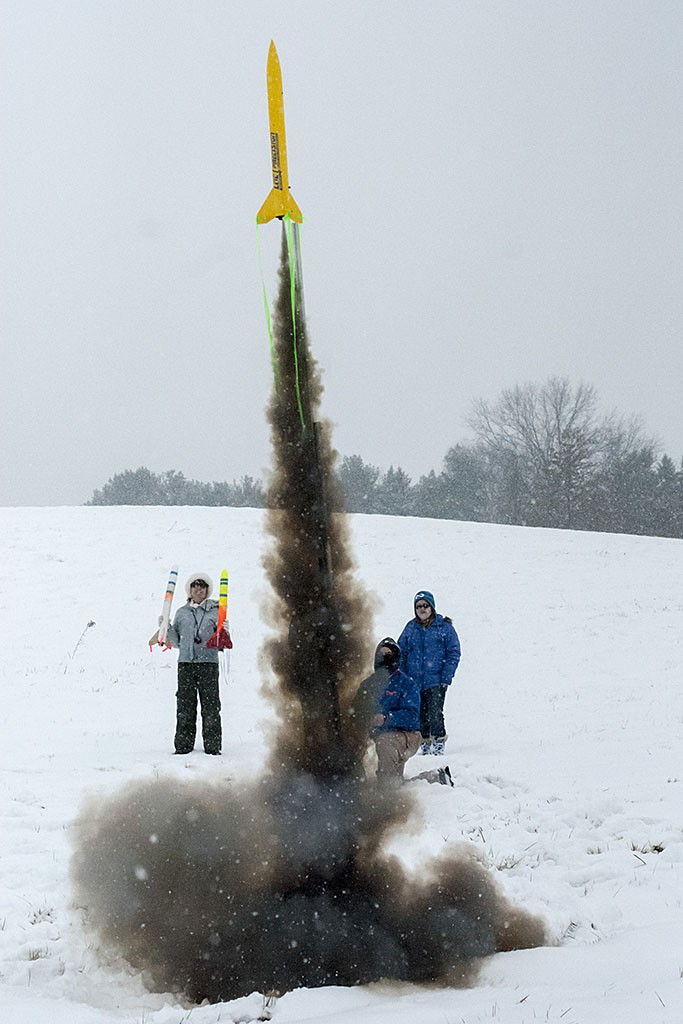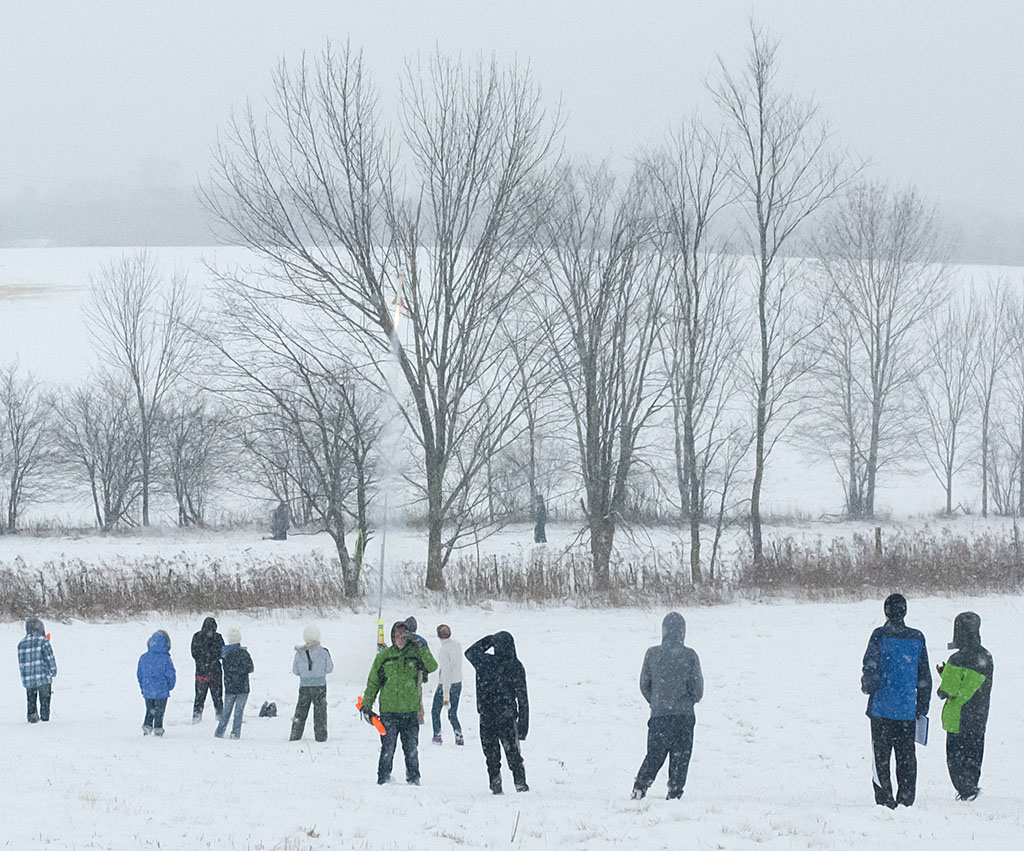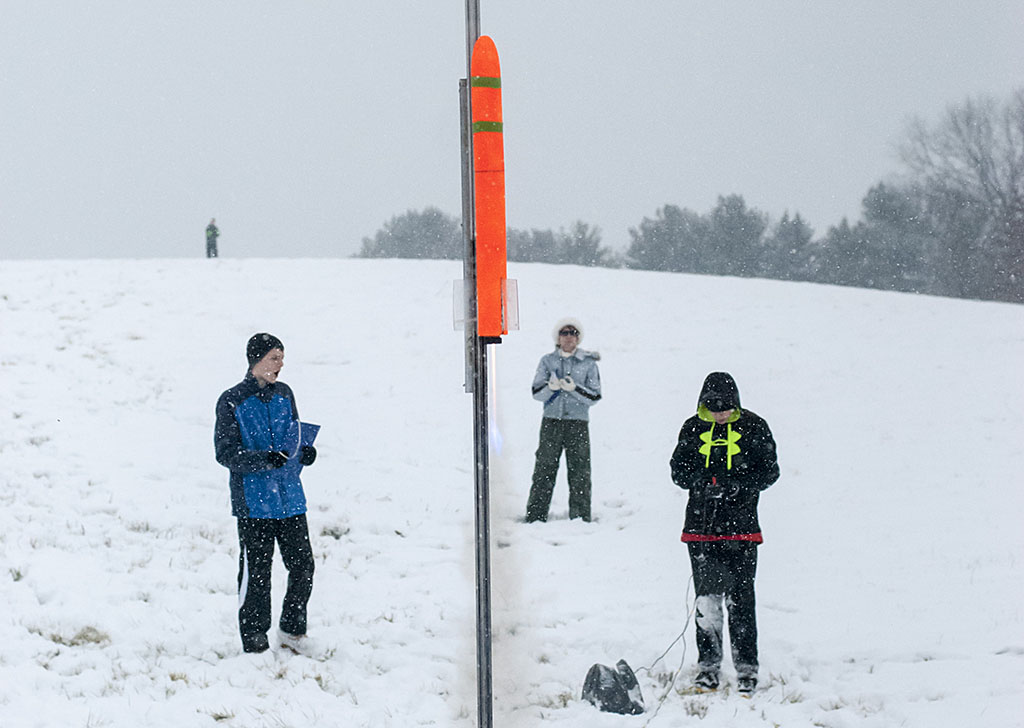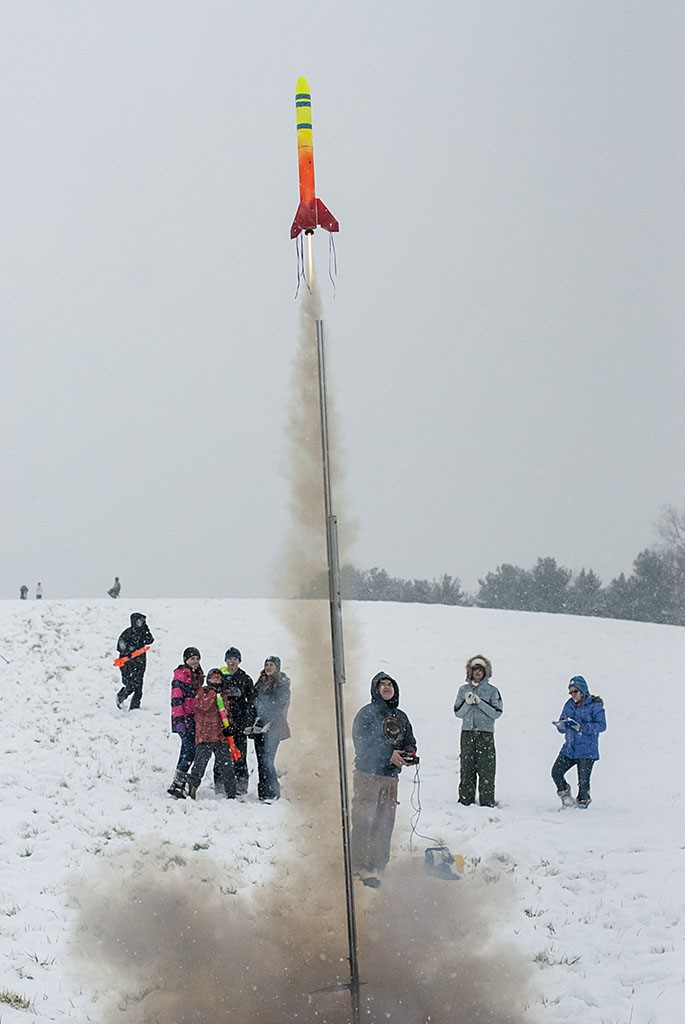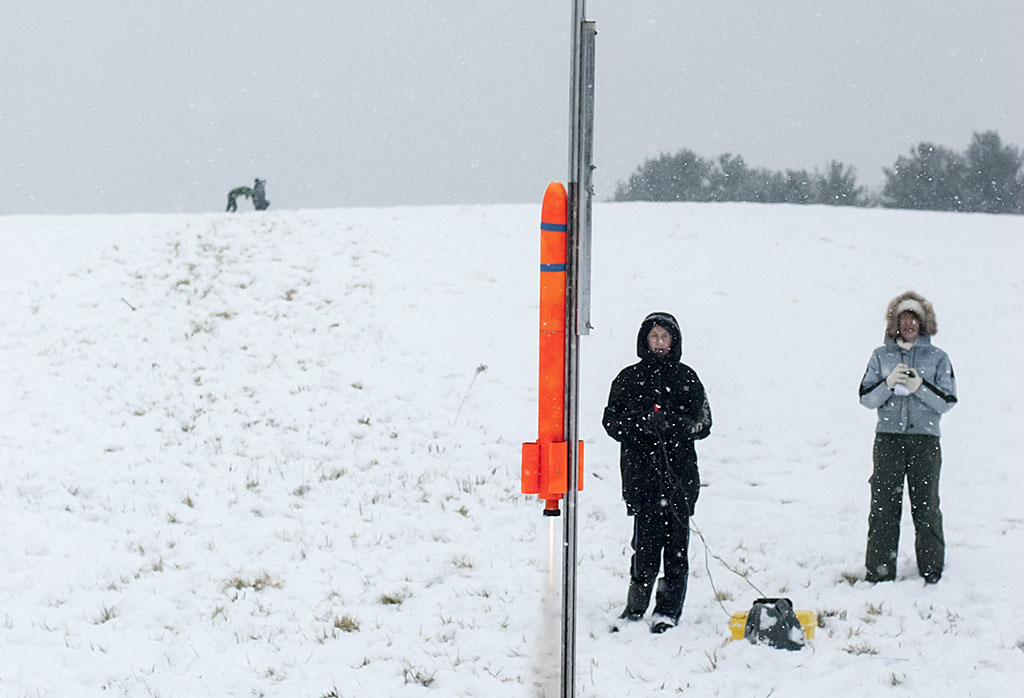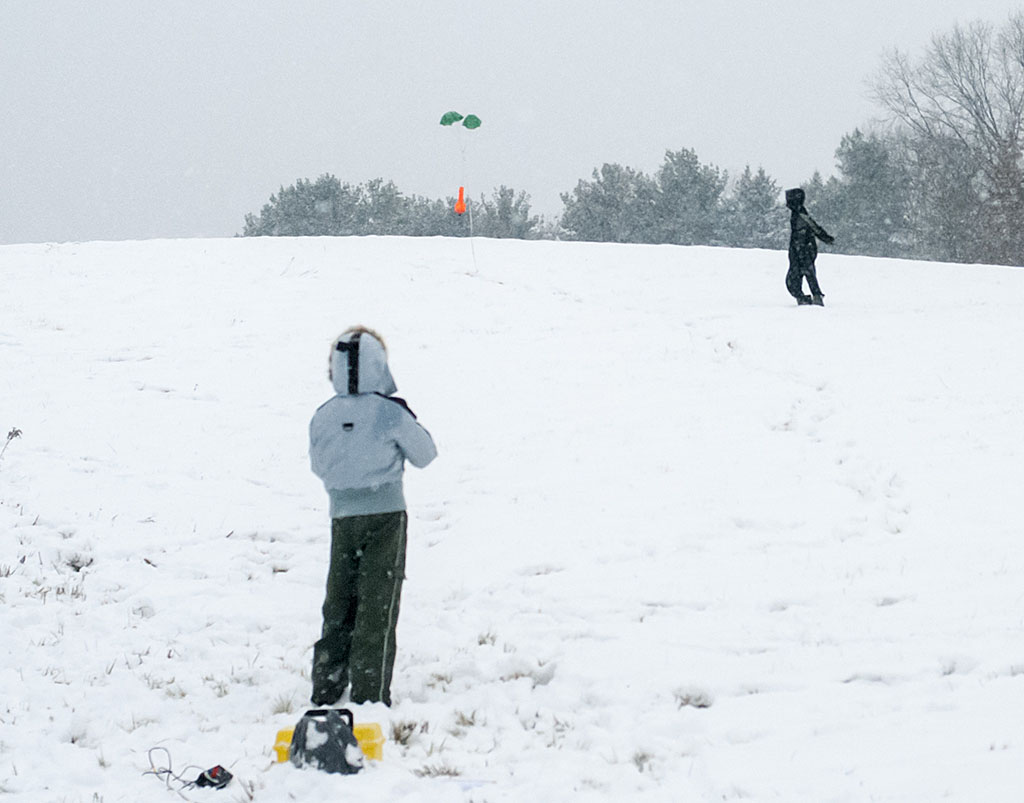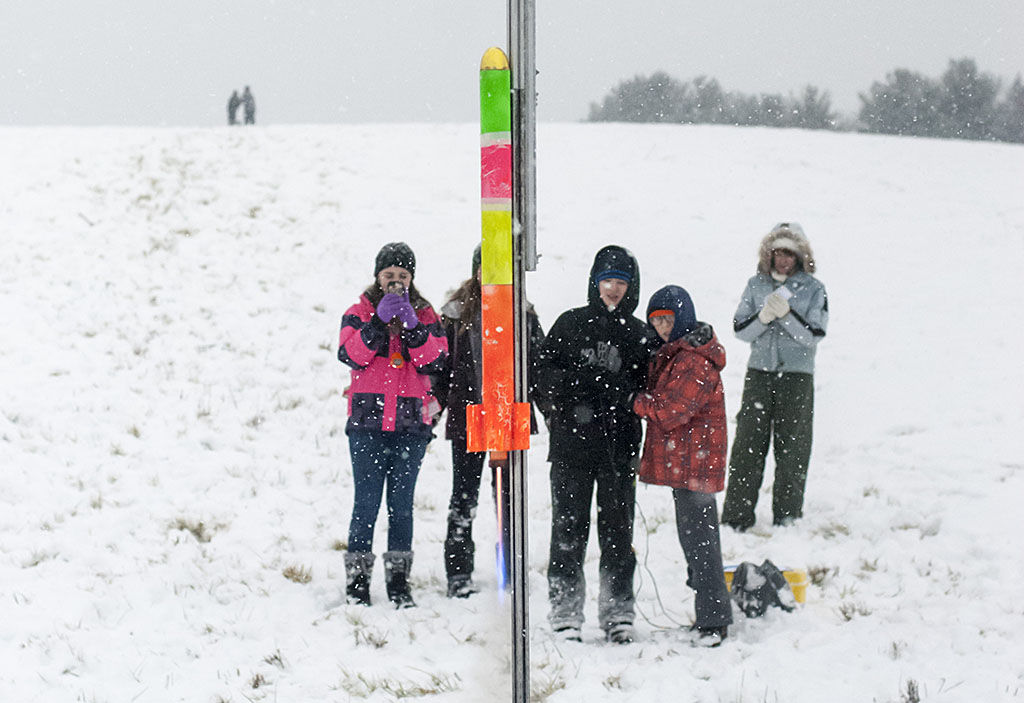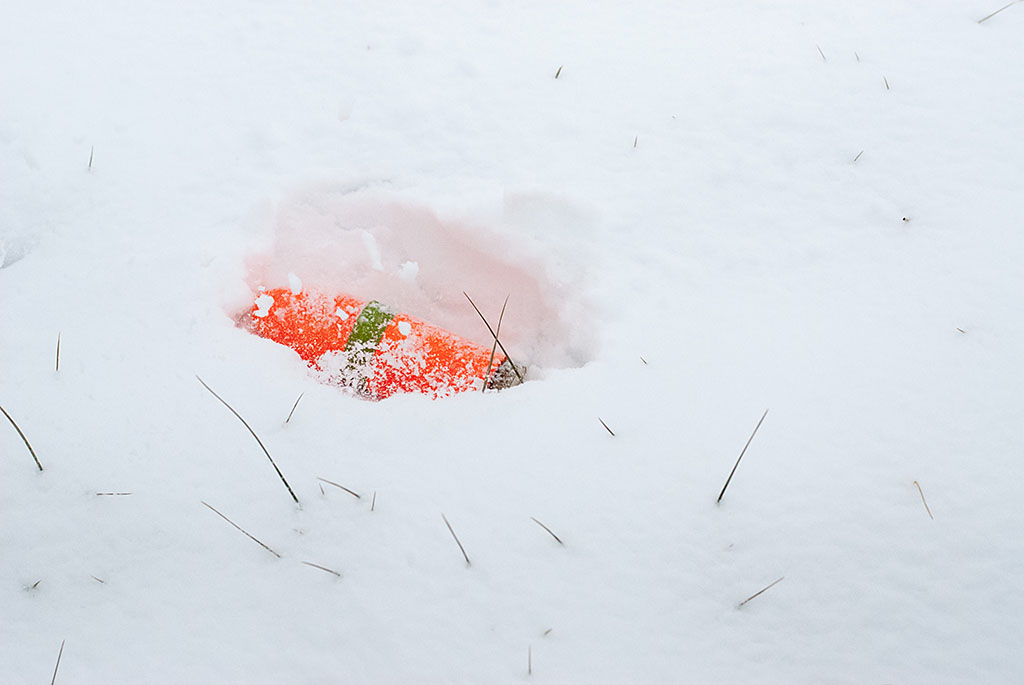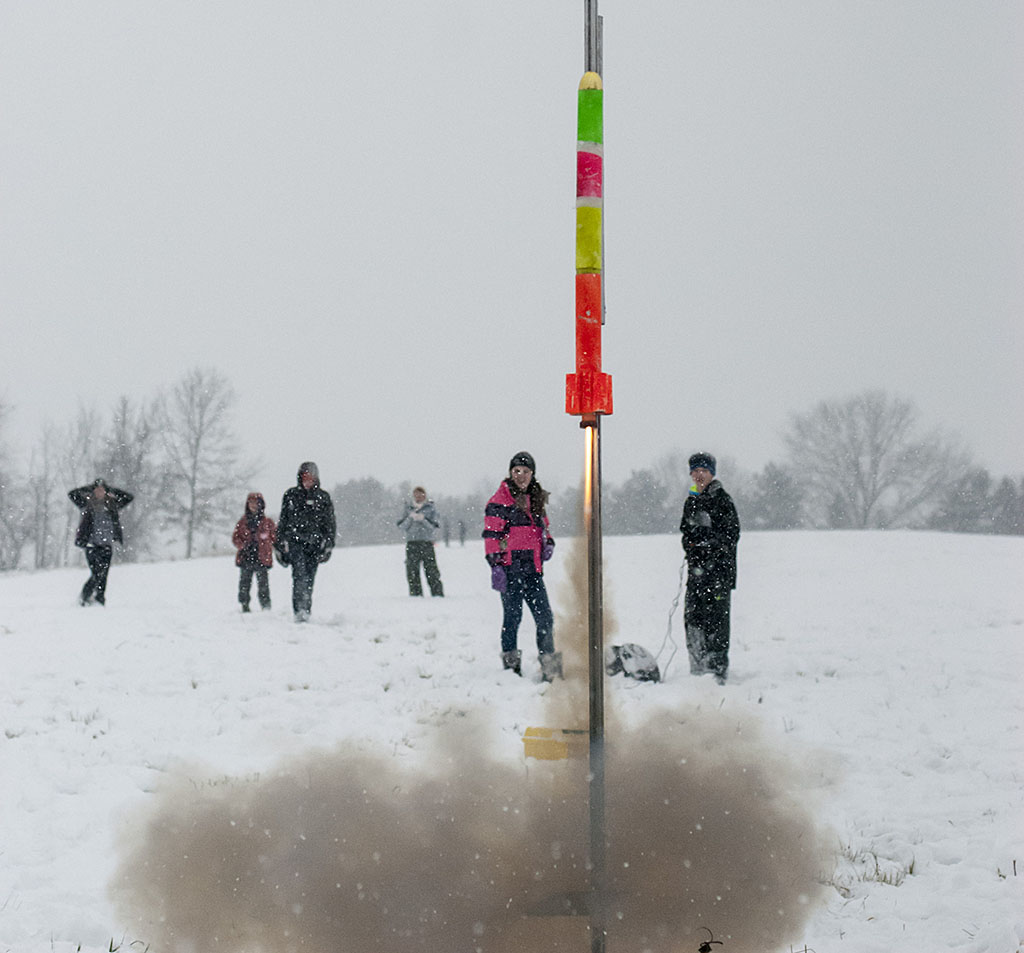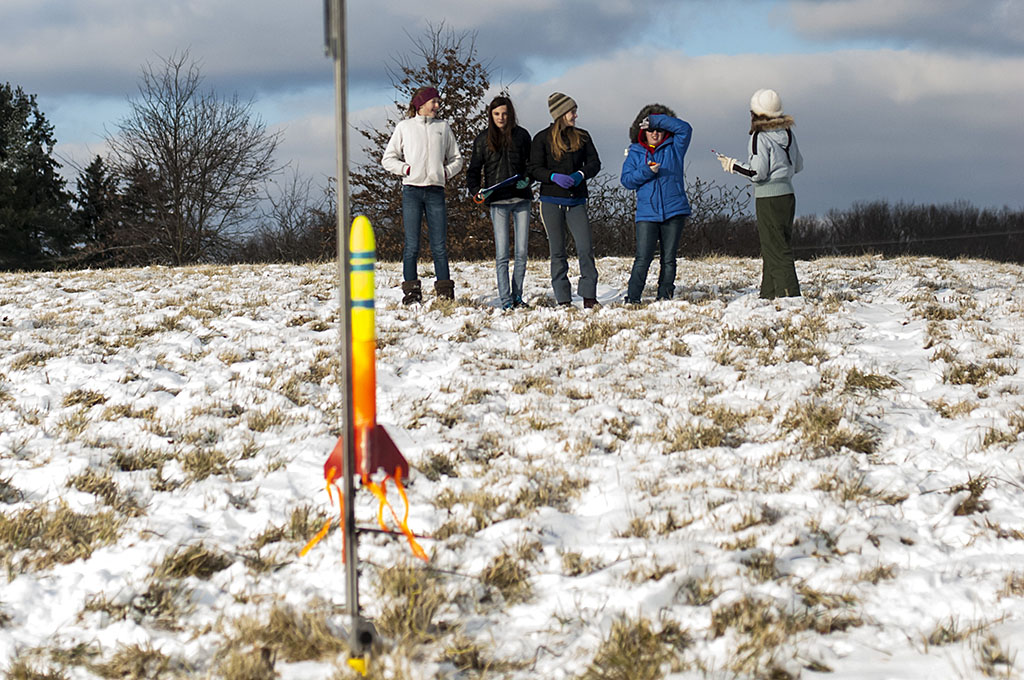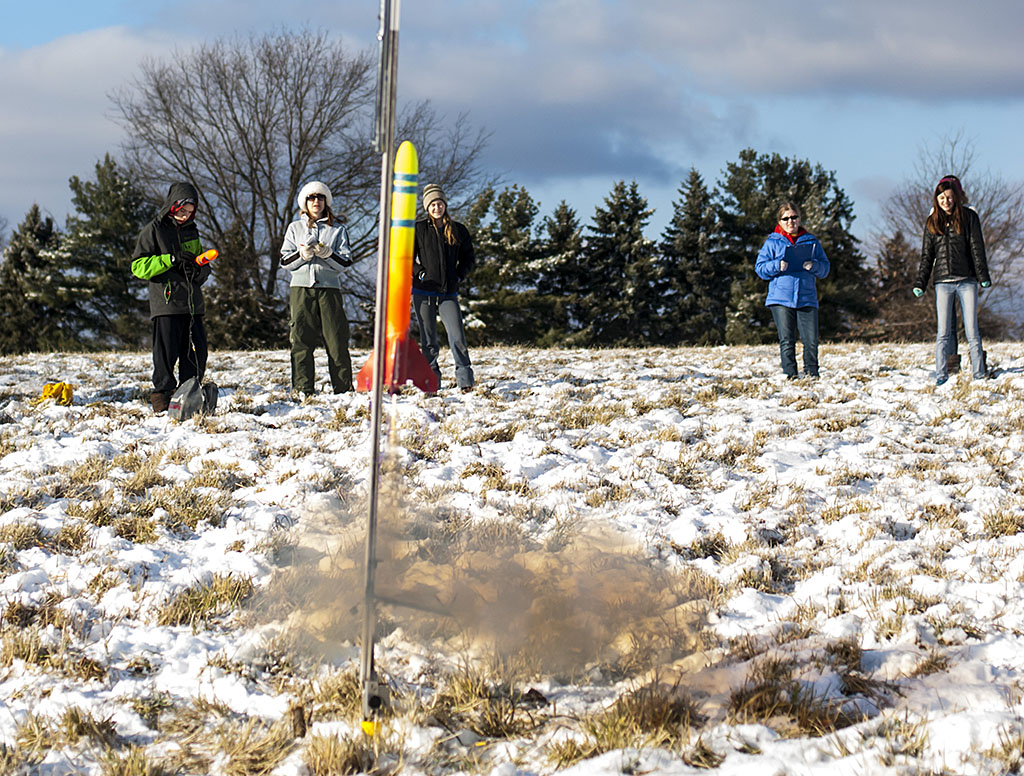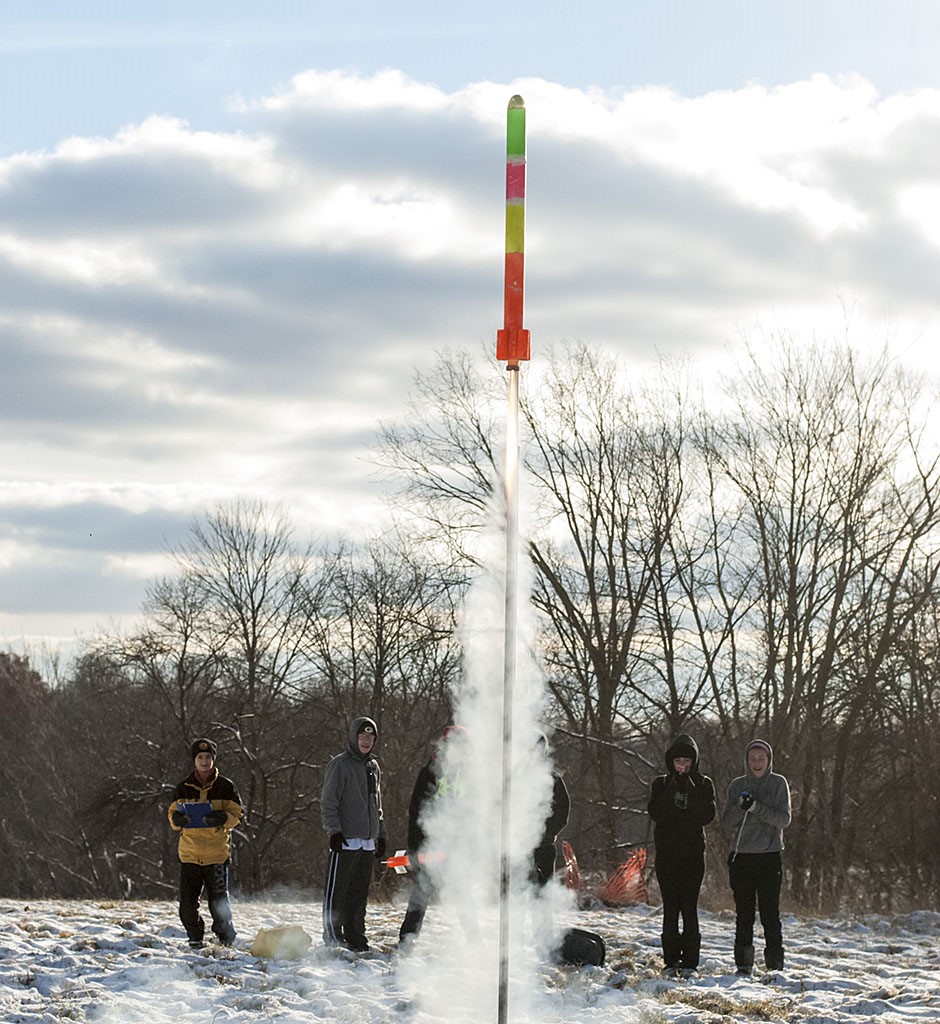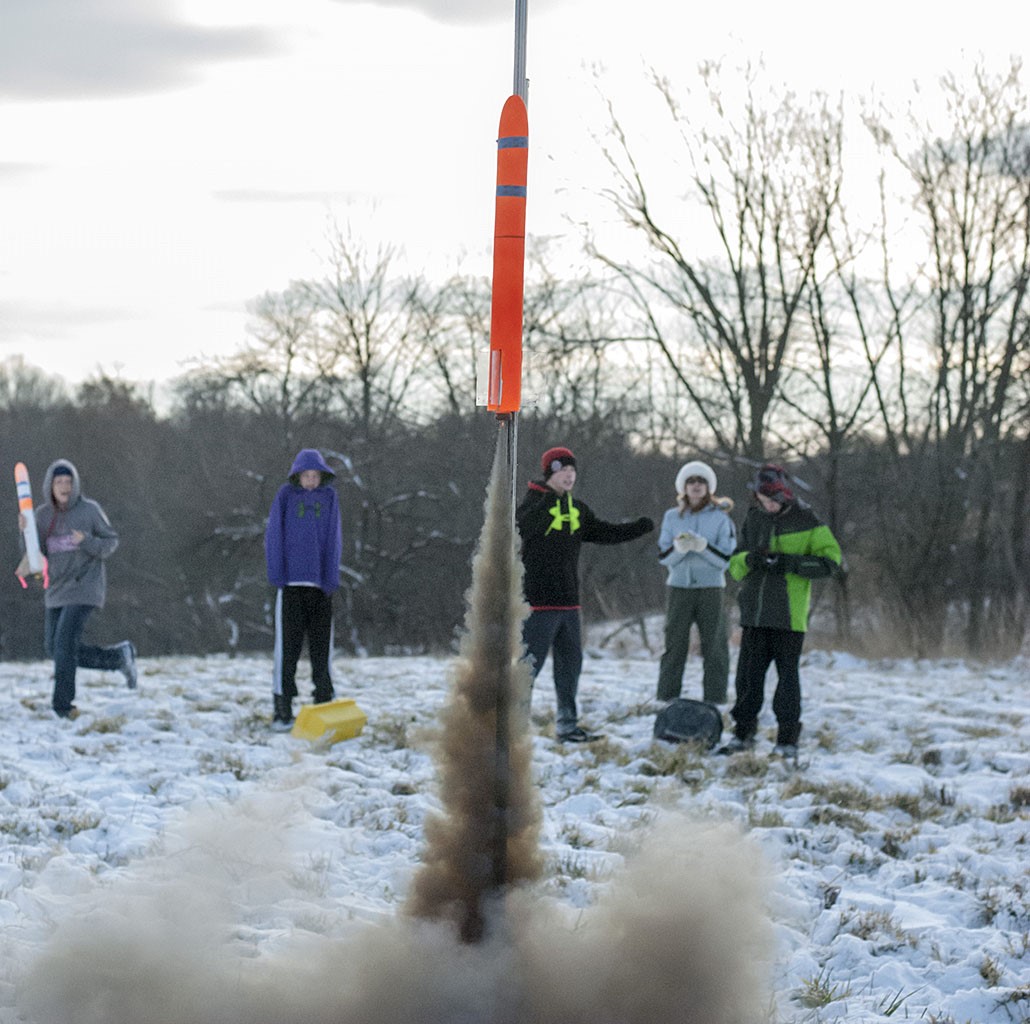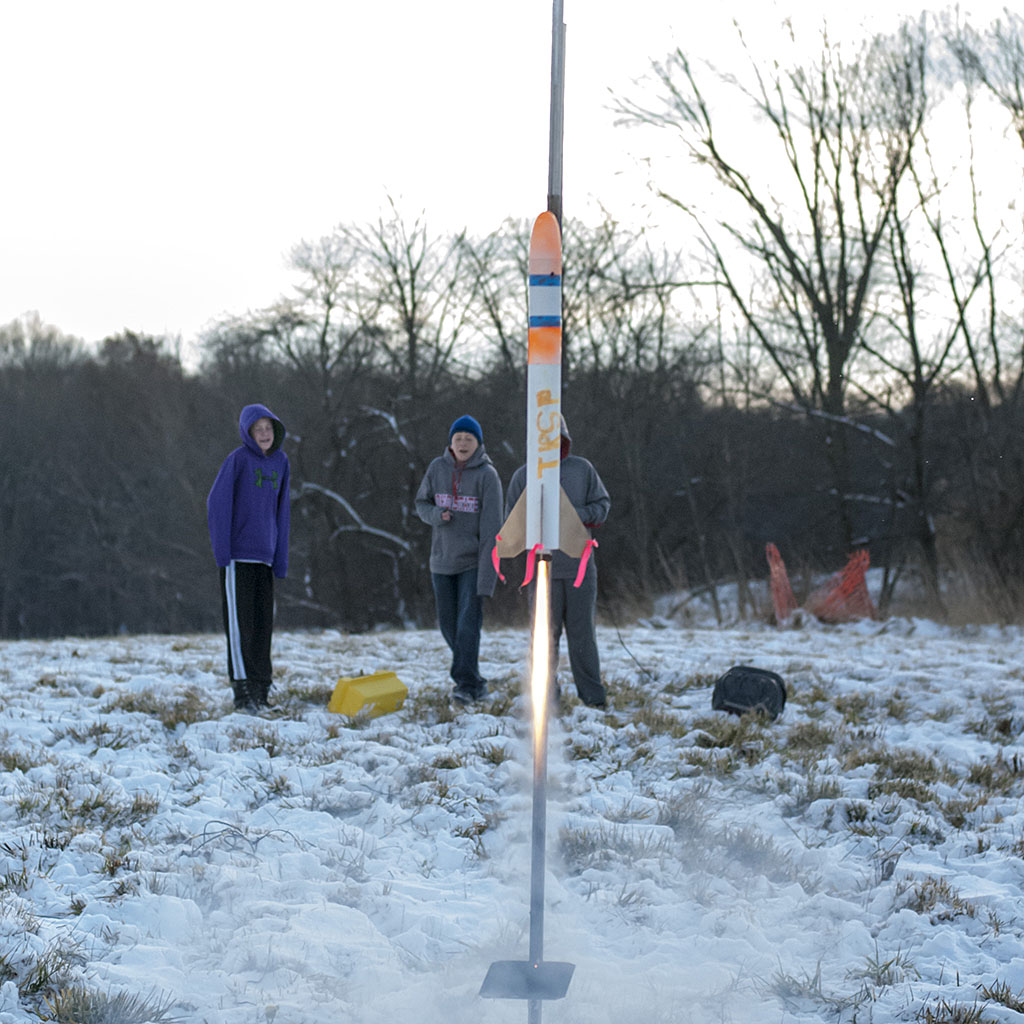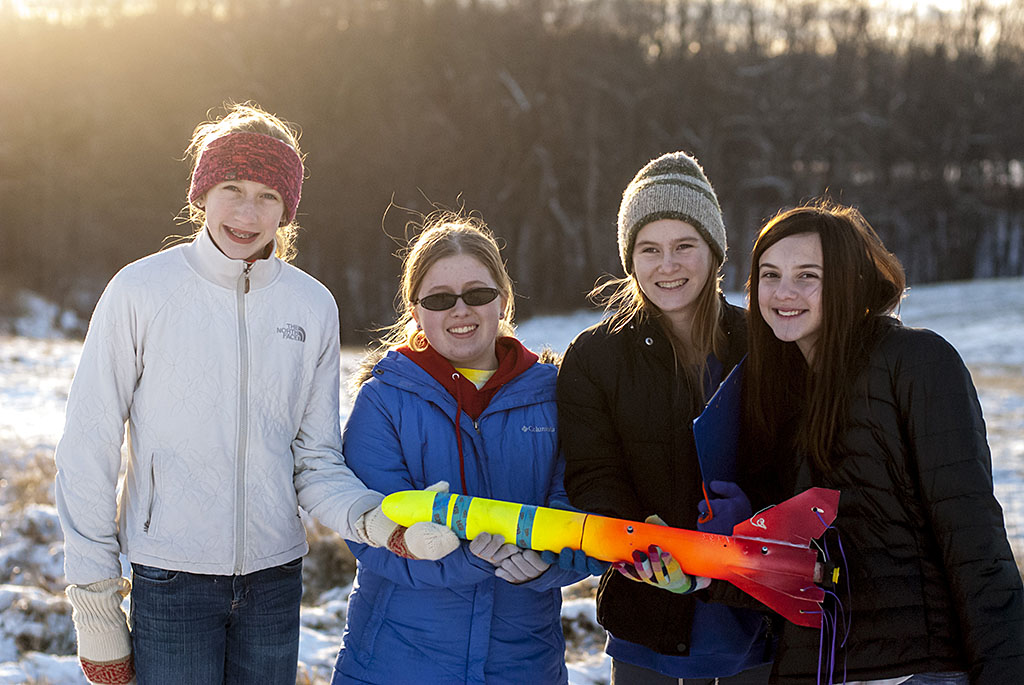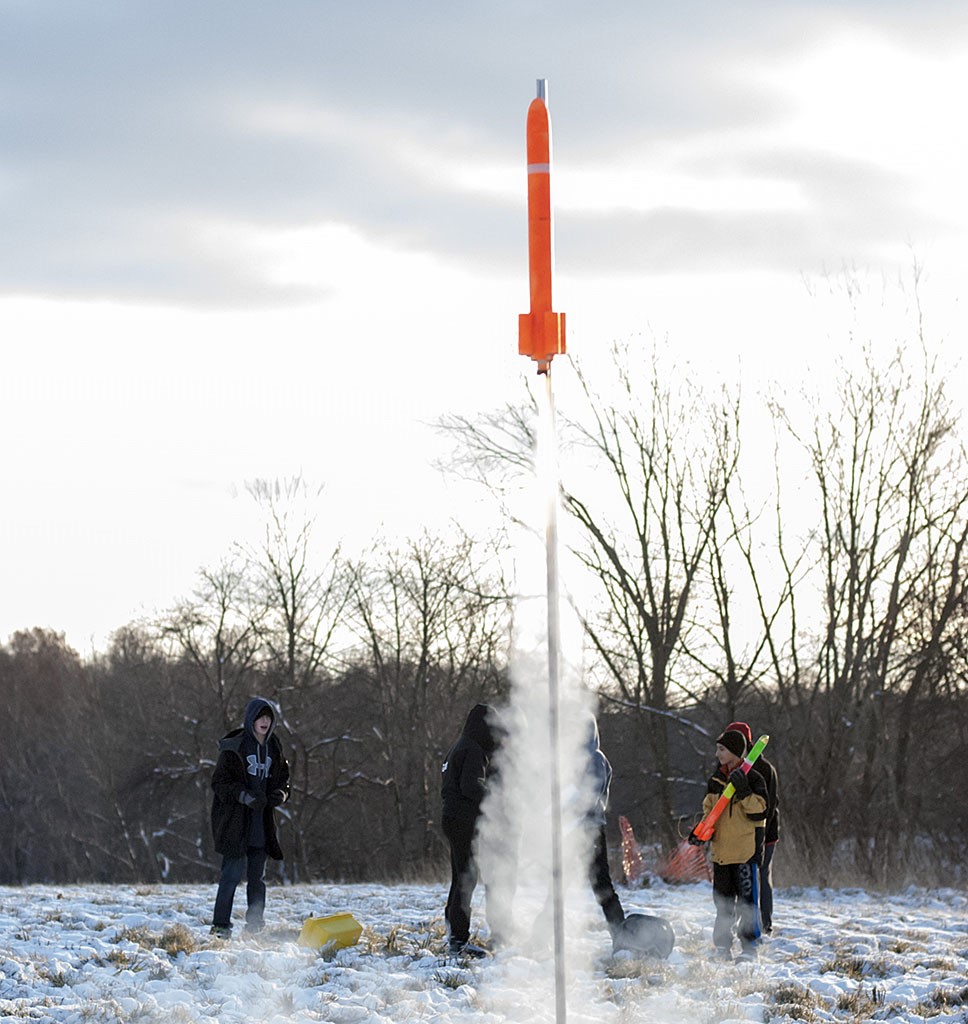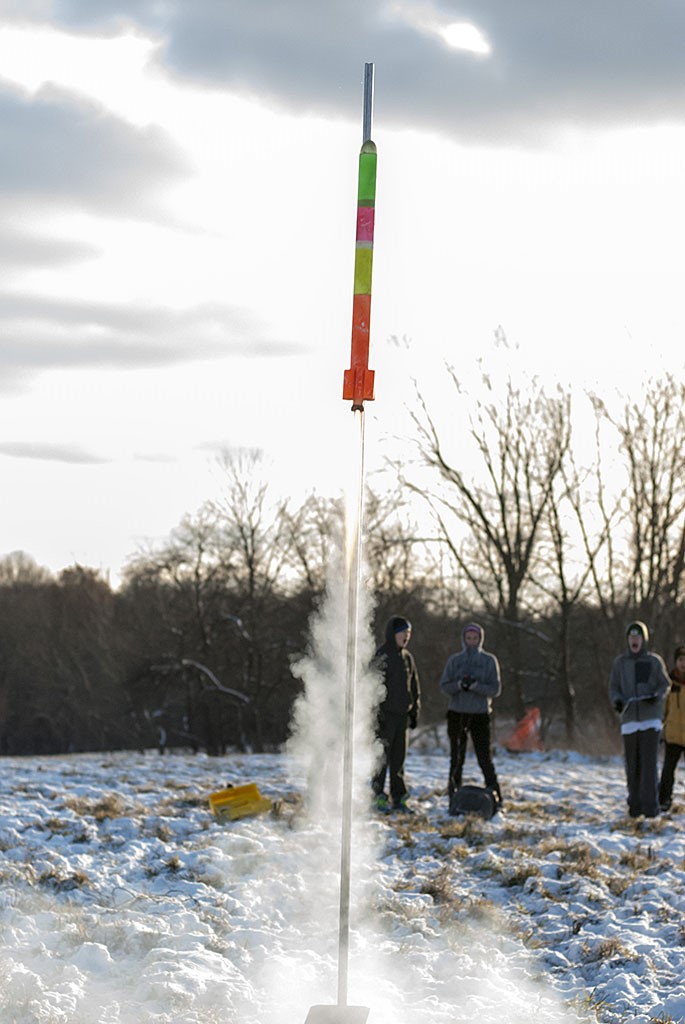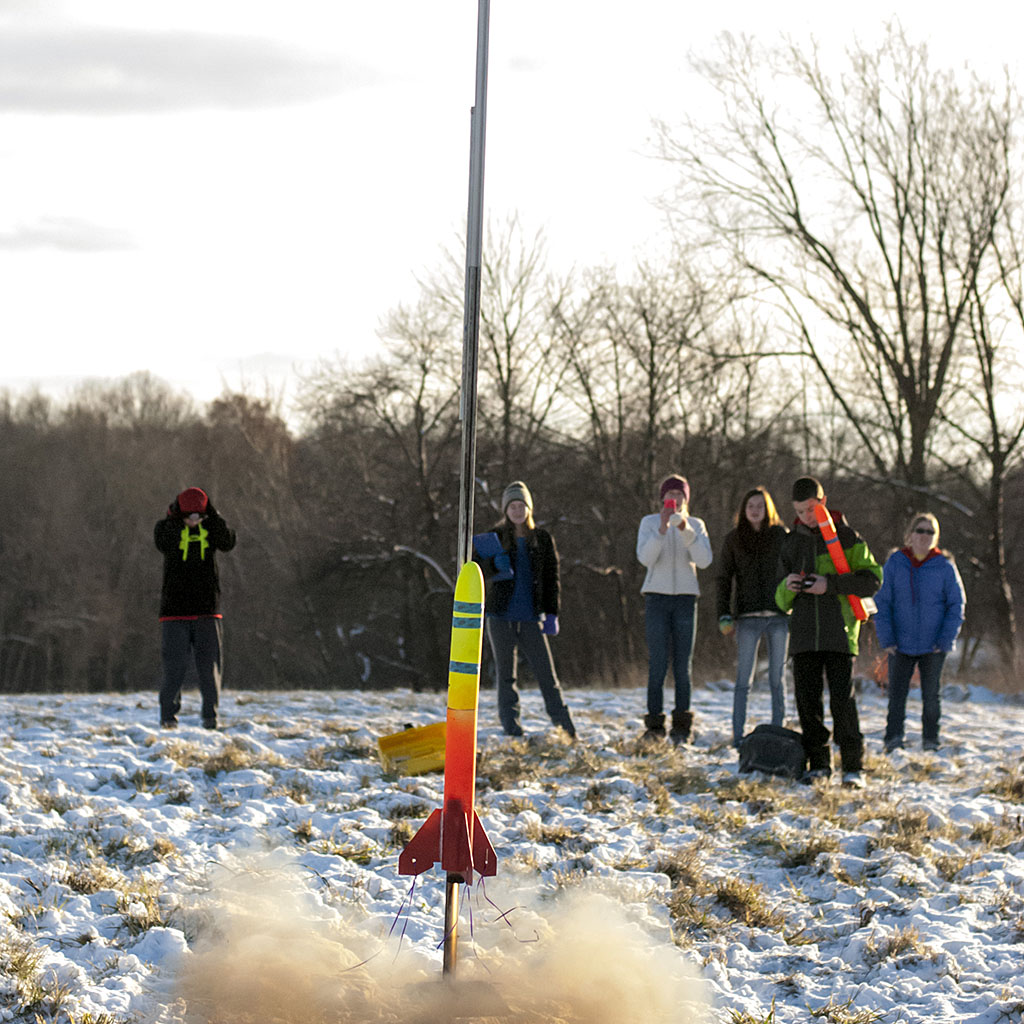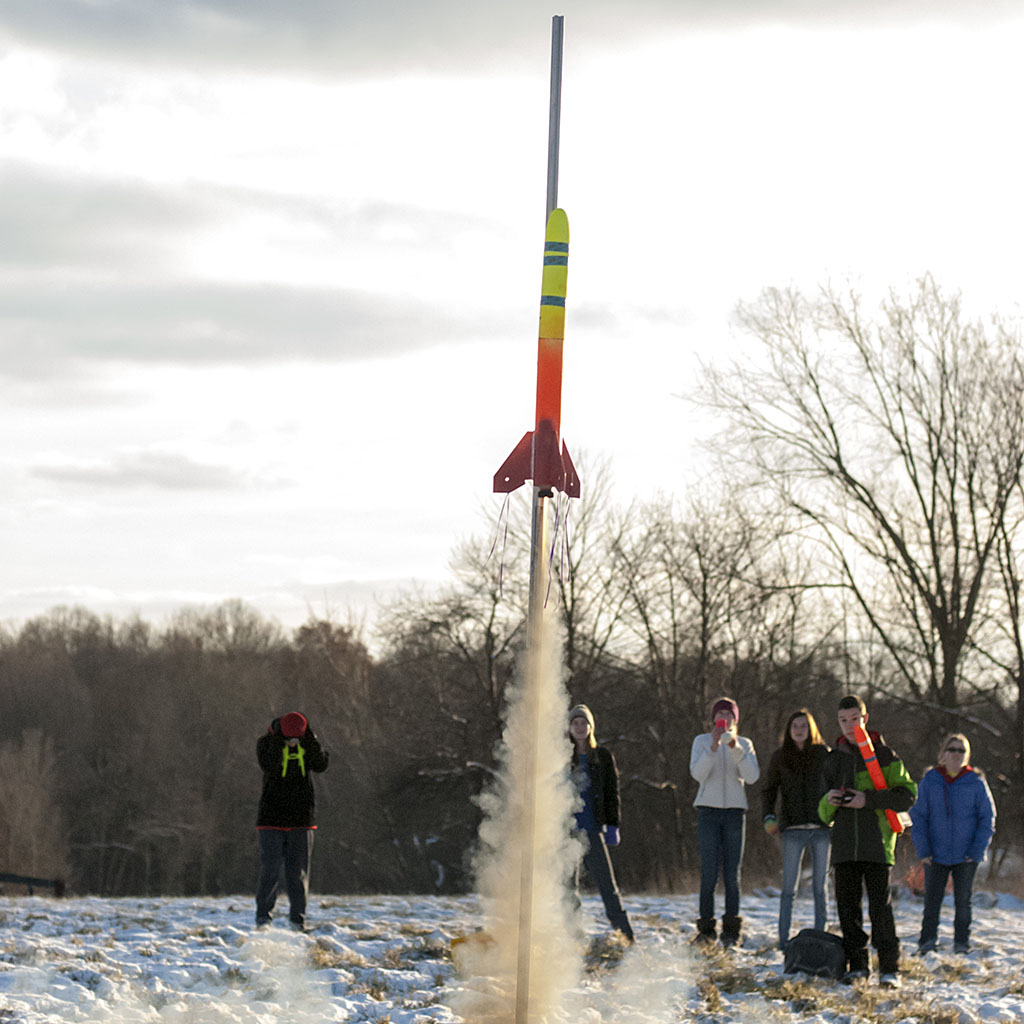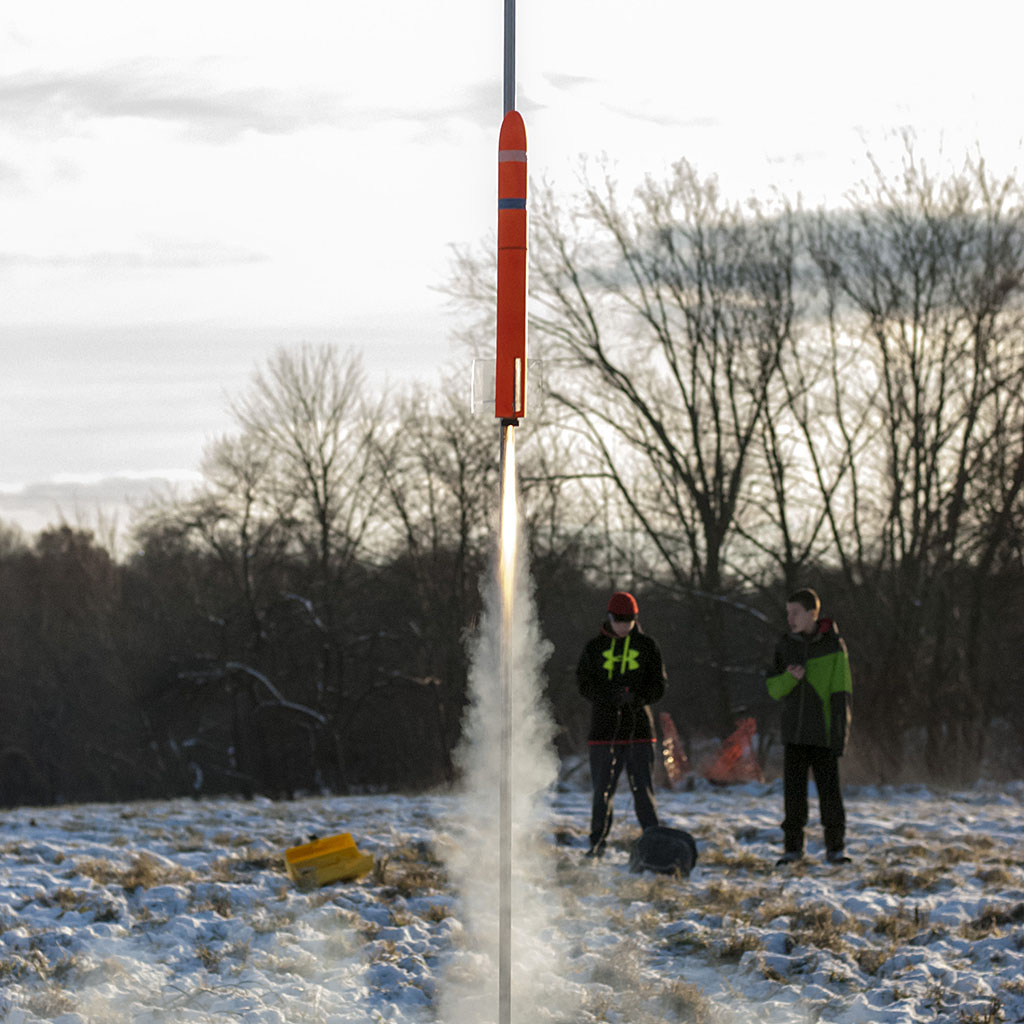|
|
|
|
||||||||||||||||||||||||||||||||||||||||||||||||||||||||||||||||||||||||||||||||
| Previous Blog Entries: | Main Index | |||||||||||||||||||||||||||||||||||||||||||||||||||||||||||||||||||||||||||||||||
|
||||||||||||||||||||||||||||||||||||||||||||||||||||||||||||||||||||||||||||||||||
|
Qualification
Launches 12 & 13 (No Nationals This Year) 3-29 & 31-2014 ~ Blog #606 (David)
I just looked at the dates of our launches and a calendar and now understand why Joan and I are so spent. In the last ten days of March we had five launches. Each launch takes hours and our launch site is relatively far from Tallmadge. I also spend quite a bit of time prepping, planning, coordinating with judges, meeting with Rocket Team at school, collecting transportation forms, repairing the launch pad, completing paperwork, etc. We also work and I had an especially busy end of a quarter in the middle of all of this.
The bottom line is that non of our five IHM teams qualified this year. I didn't expect any teams to, but figured they each had a chance. In the middle of March things really started coming together; teams were looking at good numbers. Many flights were within 10 to 15 feet of the 825' target and times were close to the 49 second target. Scored had to be submitted by March 31st at midnight. My estimates that the Top 100 cut off of combined best two out of three flights would be: 30 - almost certain 40 - I thought it would be around here 50 - Possible, but not likely 60 - Absolute upper limit; I would not even bother getting worked up with scores above this point The actual cut off, published yesterday, was 52.1.
We took our first qualification flights on Saturday the 29th. After destroying their primary rocket on the 26th, Team 2 threw together a new rocket similar to the first one that they burned up. It flew well and they decided to take a qualification shot. They posted a 32.56 which is decent. Team 4 took a shot and DQed due to a broken egg. Team 5 took all three shots. Flight 1 scored a 106.4. Flight 2 flew way too high and they cracked an egg. Their third flight was only off the target altitude by three feet! Their score on that flight would have been 9.8 had the shock cord not separated and the rocket returned as one unit.
We planned on taking our remaining shots on Sunday; it was supposed to be decent but the winds picked up to 19 MPH, so we cancelled the launch since Monday's weather looked beautiful.
Monday was beautiful and calm, as predicted. We flew after school. Flights did not go well, however. Team 1 (Svea's team) had their first disaster of the season and their first broken egg(s) in months on their first qualifying flight. Their motor ejected three seconds early, while the rocket was still on its way up and traveling way too fast. The payload section broke off of the shock cord and continued up to 668 feet, and then fell to Earth. Despite typically flying within 30 feet of 825' for the past week, their next two flights were about 100 feet low.
Team 2 came through with two very decent flights and a combined score of 82.56. This was our best chance to qualify, but was still way too high for me to believe they had a chance. Team 3 posted a respectable 53.08 and then DQed their next two flights due to broken eggs. Their third flight was only off by seven feet! After posting a DQ on Saturday, Team 4 was devastated by a no altimeter reading on their second flight. The failure on my part as a coach, was that I didn't know/remember that a no altimeter reading should have resulted in a re-flight. Next year I am going to test team members on rules so that we don't make such mistakes. Team 4 declined to take their third flight since they figured they could never qualify at that point.
I didn't take many photos during qualification launches and instead focused on coaching and video. Here are three 1080p videos of our qualification launches and a few practices. They are very large files, so be patient with the downloads. March 29 Qualification Launch 12 minutes - 955 MB March 29 Qualification Launch (short version) 2 minutes - 183 MB March 31 Qualification Launch Part 1 7 minutes - 625 MB March 31 Qualification Launch Part 2 6 minutes - 544 MB
|
||||||||||||||||||||||||||||||||||||||||||||||||||||||||||||||||||||||||||||||||||
|
3-26-2014 ~ Blog #604 (David)
Team 2 went dramatic again and pulled a Challenger style disaster. They had been having problems with very late ejection delays. Their last flight on Sunday had an ejection at perhaps 400 feet. It was violent enough that they scrambled their eggs and their flight time was way too short. Today, they managed to set their delay right at the end of their motor burn. Ejection took place at maximum velocity. The parachutes opened, which "zip-lined" the main body tube (cutting it down the middle with the shock cord). The tail tumbled, shredded two fins and separated both parachutes. The payload section continued up to 694' and fell back to Earth without a parachute. Team five had about six fuse failures. They managed to hit 823', but their payload section separated. The rocket returned in three main pieces and the altimeter fell out. A team member managed to find it in the trees and snow, without its audible signal since the battery fell out as well. She also found the battery. I still can't believe that one. Team one also hit the altitude by two feet, but had a short time. Many teams are having trouble getting both parachutes to deploy at apogee. We will be taking our qualifying launches this weekend, ready or not. I'm not betting the farm on us, but we could get lucky.
|
||||||||||||||||||||||||||||||||||||||||||||||||||||||||||||||||||||||||||||||||||
|
3-23-2014 ~ Blog #603 (David)
Sunday was a good day. We didn't lose any rockets and most teams were looking at good numbers. It seemed that most teams had a flight near 825' but most were also dealing with late ejection and short flight durations. No team really put everything together twice which is what we need to doo next weekend. I didn't taker any still photos and took only video clips; here's the movie in 1080p. And also on Youtube
|
||||||||||||||||||||||||||||||||||||||||||||||||||||||||||||||||||||||||||||||||||
|
3-21-2014 ~ Blog #601 (David)
We flew yesterday after school. The winds were lighter and we didn't lose any rockets. A few teams are flying new rockets after losing their primary rockets in the past couple weeks. No teams reported any decent numbers.
|
||||||||||||||||||||||||||||||||||||||||||||||||||||||||||||||||||||||||||||||||||
|
(Umbrella Rocket Success!) 3-16-2014 ~ Blog #600 (David)
I rebuilt the umbrella pod and increased the shock absorber from 1" to 6". I also added four 3/8" vent holes to relieve pressure. The new shock absorber provides enough sidewall friction with the inside of the main body tube that its speed is greatly reduced. So much so that it didn't travel all the way back on ejection, but it did make it back just far enough to deploy the umbrella. The bigger problem was that the motor casing and retaining ring blasted off. I question how much ejection pressure was lost when it exited. Thankfully, no one was hit and I was able to find it. Both photographers managed to catch the motor casing in their videos. Look for it as you hear a girl say, "Something fell off, something fell off.". I've glued it back on and question the epoxy I originally used. The very pointy nose cone had about 2 inches of mud on the tip after landing in very soft, wet, wild grass. So, although it's rate of fall was quick, it wasn't so fast as to be dangerous. I've seen round nose cones dig in 6" into the same ground conditions after ejection failure/lawn dart.
Link to the 1.5 minute Umbrella Rocket movie in HD on hallbuzz.
Yesterday's launch was really more of a work session to finish repairs of teams' primary rockets and complete secondary rockets. The winds were pretty high and only one team risked flying. Both flights experienced low altitude due to significant wind cocking. Turn out was low, as expected, due to eighth grade confirmation this weekend.
|
||||||||||||||||||||||||||||||||||||||||||||||||||||||||||||||||||||||||||||||||||
|
(Umbrella Rocket and Green Tumbler Rocket Fails) 3-9-2014 ~ Blog #599 (David)
Yesterday was not a great day, except that we came back with more rockets than we had when we arrived. The bottom half of Team 2's rocket was found predictably between the launch pad and the nose section which descended under parachute. Each team had only one or two launches and no flights looked good. Team 1's rocket was flying 100 feet lower than it has been the last two weeks. We launched the Umbrella Rocket. It few well, but on ejection and umbrella deployment the sliding plywood centering rings broke and the 29mm motor mount tube popped out the back. I had contemplated this as a possibility; in case of catastrophic failure I ran the umbrella lines and shock cords all the way up to the nose cone. So, no matter how much damage might happen to the umbrella mechanism there would be enough garbage dragging behind the rocket to prevent it from reaching very high velocities. I was surprised as to how effective the trailing sideways collapsed umbrella was at limiting the rocket's decent. There was no damage to the nose cone or balsa fins. If, or when, I rebuild it I think I may install large vent holes or flaps to relieve ejection gas backpressure. I don't know for sure if the internal damage was done from the ejection charge slamming the mechanism back, or if the umbrella deployment gulping air tore the guts out. Then there's the Green Tumbler. My "wind tunnel" string tests indicated that it wasn't quite stable enough with the Estes D-12-3 engine forward to fly safely and it wasn't unstable enough with the motor "kicked-back" to induce complete instability that would induce a tumble. I added 5 grams of solder to the nose to make it stable enough for a safe accent and let it fly. It wind-cocked a bit and then straightened out on the way up. Upon ejection it clearly became unstable, but didn't truly tumble. It appeared to have a rolling spin going on and was descending at a noticeable angle. Upon its muddy "landing" the Easter egg body cracked along one fin and a launch button (screw, really) tore out. It's banged up, but repairable. This rocket wasn't a complete success, but it wasn't a total failure either.
See photos of both rockets below.
|
||||||||||||||||||||||||||||||||||||||||||||||||||||||||||||||||||||||||||||||||||
|
The Finless Rocket Flies Again (Sixth Launch) 3-5-2014 ~ Blog # 597 (David)
I redesigned the Finless Rocket. The launch lugs have been replaced with rail buttons for a more streamlined look. This version uses a 100+ gram plastic ogive nose cone that has 200 grams of lead in the very tip. Loaded with a motor and parachute, the entire rocket weighs about 825 grams. The concentrated weight in the nose shifts the center of gravity of this rocket well in front of its center or pressure, even without fins. The first version of this rocket included a long section of body tube behind the motor nozzle. When it flew the first time it appeared very underpowered. On a rocketry forum I've recently learned about the "Krushnic Effect" which basically boils down to rocket motors lose significant power if the nozzle is blasting through a tube. I cut the tail tube down from about 9 inches to about 2 inches. The 70 Newton, 1 second burn motor lifted the rocket very well. It flew very straight for a few hundred feet where it wobbled before apogee. It was windy and gusty today. Based on parachute decent time and ground distance covered I calculated that one rocket was pushed along by over 20 mph winds. I think the wobble may have been a gust induced wind cocking. Even if the finless rocket naturally wobbles while coasting up, I'm very happy with its performance. It proves the point that rocket stability really does come down to the primary rule of placing the center of pressure behind the center of gravity. The finless rocket proves that some of the most trusted rocket simulation programs can be wrong. It also proves that the old-school string test has a lot of validity. Check out the flight video and "wind tunnel" test.
(47 seconds, 37MB, 1080p)
My thumb shows the CG with a spent motor. The CG with a live motor is about 2 inches back.
|
||||||||||||||||||||||||||||||||||||||||||||||||||||||||||||||||||||||||||||||||||
|
2-17-2014 ~ Blog # 593 (David)
I built a weird rocket this weekend. When a normal model rocket reaches apogee, an ejection charge will blow off the nosecone and shoot out a parachute. This is referred to as the recovery system. The 660 gram rocket I built this weekend uses the ejection charge to shoot an umbrella out of the tail of the rocket. On ejection a 26" 29mm motor mount tube slides down the main body tube where a foam shock absorber on a 3" centering ring slams into a wooden ring inside the tail. Ejection charge forces are very strong, I'm hoping this shock absorber is enough. At this point the ~20 inch umbrella should open and limit the decent rate to a safe speed. The rocket is always traveling nosecone forward on the way up and down. The motor is inside the umbrella tube and slides back with the umbrella. In case of a high speed ejection, the umbrella/parachute cords are attached to elastic shock cords which will allow the umbrella rods to hyper extend momentarily. I'm pretty sure the system will hold together and work as planned if ejection occurs at under 50 mph. I'm also pretty sure if ejection happens at 100 mph there will be serious damage. A lot could go wrong, but that's what makes a project like this interesting.
Most of the parts of this rocket came from an old TARC rocket that blew up in 2010. We built three identical rockets; two of which were damaged beyond repair when their faulty motors exploded. We stopped using three inch diameter parts so this rocket hung in my classroom for a few years and then went into storage. In the photo below you can see the fin twisting off as the body tube tore open.
|
||||||||||||||||||||||||||||||||||||||||||||||||||||||||||||||||||||||||||||||||||
|
2-14-2014 ~ Blog # 592 (David)
As my Junior High students would say, today's launch was a fail. It was very windy; two rockets were damaged before flying due to tipping launch pads. We had two successful launches and one launch pad catastrophe. Team Two hopefully learned the valuable lesson that if you assemble a rocket motor, and there's a part left over, you really shouldn't fly. In this case it was the metal motor casing. The casing contains the propellant, delay and ejection charge and ensures that all propellant gasses escape only through the nozzle. Without the casing, the hot, burning gasses go everywhere including through the motor mount and into the rocket body. The bottom half of this rocket is very much like burnt toast.
|
||||||||||||||||||||||||||||||||||||||||||||||||||||||||||||||||||||||||||||||||||
|
2-8-2014 ~ Blog # 591 (David)
We had great weather and good flights today. Several launches were within 10 feet of the target altitude of 825 feet. Team 5 lost their primary rocket to the tippy-top of a ~50' tree. This may be a blessing in disguise, however, that rocket was nothing but trouble and never flew straight. Team 5 needs a clean start with a new rocket and has enough time to build and tune one in.
|
||||||||||||||||||||||||||||||||||||||||||||||||||||||||||||||||||||||||||||||||||
|
1-20-2014 ~ Blog # 590 (David)
We had a good launch day: We didn't lose or destroy any rockets. Every fuse worked. Team Four had a flight that hit 826' and 51 seconds; that's a score of 5!
|
||||||||||||||||||||||||||||||||||||||||||||||||||||||||||||||||||||||||||||||||||
|
||||||||||||||||||||||||||||||||||||||||||||||||||||||||||||||||||||||||||||||||||
|
How accurate is a Perfectflite APRA Altimeter? 12-14-2013 ~ Blog # 582 (David)
Only two altimeters are approved for the Team America Rocketry Challenge and both are made by Perfectflight. We use the less expensive APRA. We know our motor performance varies quite a bit, but I've also always suspected the accuracy and consistency of our altimeters. They give readings to the foot, even with flights of hundreds of feet or over a thousand feet. How accurate can they possibly be? We've always issued one altimeter to each team and have discouraged loaning altimeters between teams based on the assumption that some altimeters may consistently read a bit high, and others low. Always fly the same altimeter in the same rocket has been our rule. I've been meaning to actually test how accurate our altimeters are. My plan was to mark several altimeters with distinctive ribbons, launch them together in one rocket, note each altimeter's altitude and then repeat the process with a few more launches to see if the same altimeters read high or low. What I didn't expect was what actually happened in today's launch test. I loaded our six spare altimeters into an old rocket and retarded it's altitude with fin streamers so that we wouldn't risk losing it. After the launch I handed the altimeters to six different rocketeers and had them report their altimeter's identifier and altitude. The results were: 328', 329', 329', 329', 330' and 331'. I am VERY impressed and didn't feel the need to conduct additional tests. This test does not absolutely prove that Perfectflite APRA altimeters are accurate in recording the true altitude, but it sure does show that they are consistent with each other.
|
||||||||||||||||||||||||||||||||||||||||||||||||||||||||||||||||||||||||||||||||||
|
12-14-2013 ~ Blog # 581 (David)
It was a slow snowy day. In three hours each team only managed to launch once or twice. Once again, despite a thorough checklist, a team managed to launch without drilling the delay time on their motor. I usually count off how many seconds after apogee (peak altitude) until parachute ejection; I get worried if a rocket gets to 3 or 4 seconds. At six seconds Team Three's rocket was audibly whistling straight down. You could hear the acceleration. The parachute ejected at less than 100 feet. There was only four seconds of parachute time; enough to decelerate the rocket from over 100 MPH to a survivable impact speed. The nose section of the rocket disagreed with the parachute's sudden deployment and broke off the rocket. I'm glad it was painted fluorescent orange, it still took 10 minutes to find. Team One lost a fin to a high speed parachute ejection; I wonder if the parachute cord snagged the fin as the parachute snapped open. Team Five's rocket went cruise missile on us; it launched, turned and headed over the tree tops deep into the forest. It was high enough to deploy it's parachute and they were lucky enough that it's parachute lines didn't snag in high a tree. They found it about 10 feet up thanks to the audible chirp of the altimeter. This rocket has a crooked tube-fin and tends to spiral as it flies. They also built it with very short coupler sections so the four sections do not necessarily form a perfectly straight rocket. I suspect the crooked fin may have put a kink between coupled sections as it torqued the rocket. That rocket needs some major revisions.
|
||||||||||||||||||||||||||||||||||||||||||||||||||||||||||||||||||||||||||||||||||
|
||||||||||||||||||||||||||||||||||||||||||||||||||||||||||||||||||||||||||||||||||
|
12-7-2013 ~ Blog # 580 (David)
We had our first launch of the season today. Four of our five teams had two launches each. Team four learned that it is very important for the parachutes to eject and deploy BEFORE the rocket returns to Earth. The main tail section of their rocket is in remarkable shape considering that it smacked into the Earth at over 100 MPH.
|
||||||||||||||||||||||||||||||||||||||||||||||||||||||||||||||||||||||||||||||||||
|
||||||||||||||||||||||||||||||||||||||||||||||||||||||||||||||||||||||||||||||||||
|
2015 Best Pictures of 2015 Christmas 2015 December 2015 November 2015 October 2015 September 2015 August 2015 July 2015 June 2015 May 2015 April 2015 March 2015 February 2015 January 2015
|
2014 Best Pictures of 2014 Christmas 2014 December 2014 November 2014 October 2014 September 2014 August 2014 July 2014 June 2014 May 2014 April 2014 March 2014 February 2014 January 2014
|
2013 Best Pictures of 2013 |
2012 |
2011
|
|
2010
|
2009 |
2008
|
2007 |
2006
|
|
1960's |
1970's |
1980's |
1990's
|
2000-05 |



